How to get around in Rome

Jun 29, 2023 • 8 min read
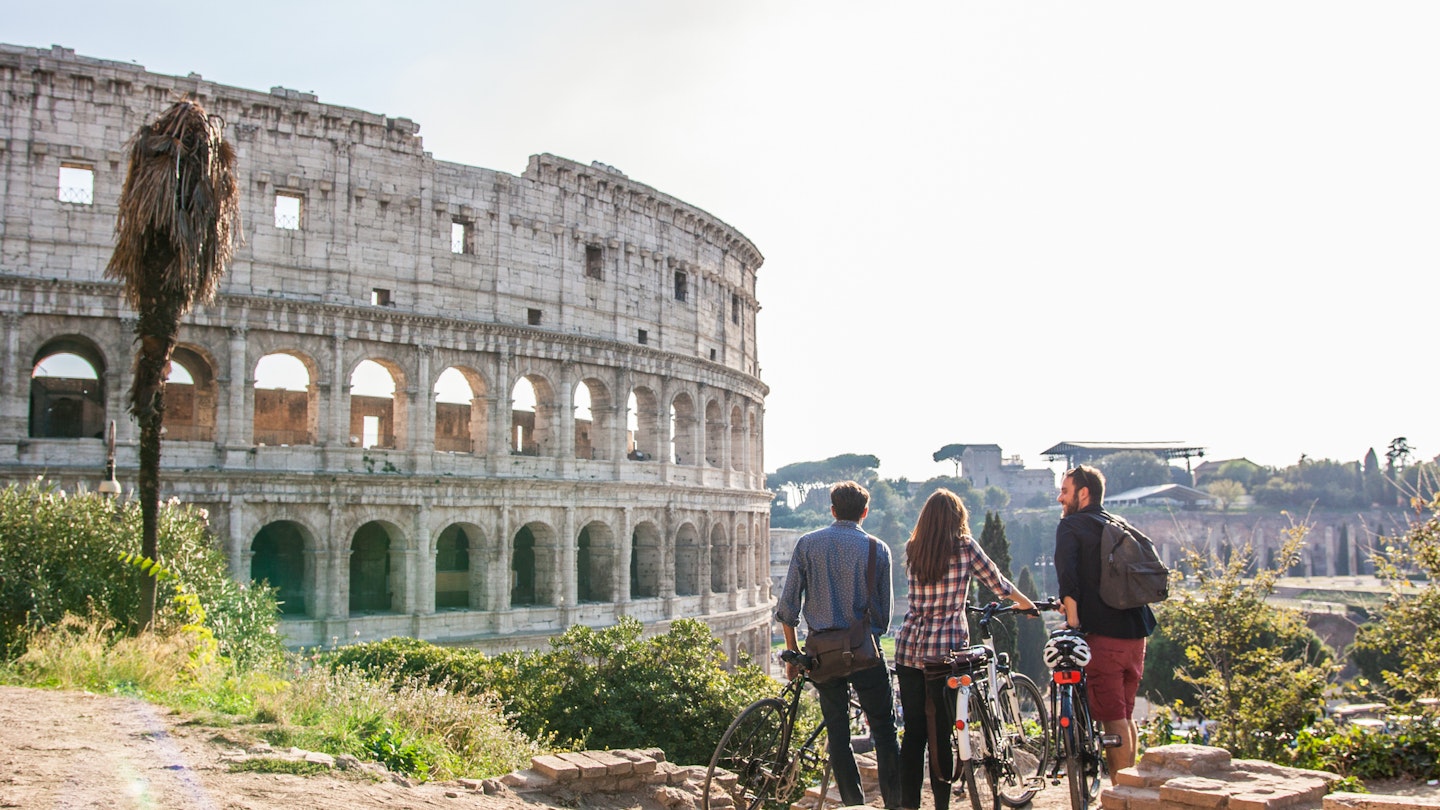
Find your way around in Rome with this guide to transportation and tickets © TFILM / Getty Images
Whether or not you find it easy to get around Rome will depend a lot on what your expectations are.
The most important thing to remember is that Rome is old. Like, old. Most of the streets have not been designed to accommodate people, buses, cars or bikes, and the underground network has been built in and around one of the most archaeologically rich locations on earth. The very things we all come to Rome to see are the very reason that it takes so long to get around it. Keep that in mind the next time you visit and remember that any confusing detours you go on may end up being the best part of your trip!
Here's what you need to know to find your way around in Rome.

Explore the city on mass transit
Just like any major city, the Eternal One has a comprehensive public transport network of buses, trams, and trains that will take you anywhere you want to go. Of course, they may also take you to a few places you weren’t planning on visiting, so it helps to get yourself familiarized before you’re on the ground. Atac, the company that operates all mass transit in Rome, has undergone a facelift in recent years and though some wrinkles are still visible, it’s a pretty convincing nip and tuck. Visitors can download maps in multiple languages from the Atac website , or download the Moovit app to get real-time info.

Metro line C is best for sightseeing
It’s helpful to remember that the two metro lines A and B mostly travel north and south, with the C line heading further to the east. The C will be one of the most familiar sights if you pass through central Rome: archaeological finds at the Imperial Forum station are so proliferate that it’s taken decades to dig for tracks. As a result, the street between the Colosseum and the Forum is lined with heavy machinery and the promise that “it’ll soon be done.” Don’t hold your breath, but don’t sweat it either, and remember that the street is still open to some traffic, so be mindful when crossing the road.
Trams run east to west
Rome’s six small tram lines are primarily useful for traveling east to west and are a good way to see the Trastevere and Monteverde neighborhoods . The trams are a fun, somewhat nostalgic, slightly nicer way to travel as they tend to avoid a lot of the car traffic. Plus, some vintage trams are still in operation, so may get the chance to catch a bit of retro cool as you go.
The tram system plays an important role in the history of modern Rome and it’s worth getting to know a bit of the background (for all of our transit history fans out there). However, an ongoing improvement project on the number 3 tram line means that you’ll need to take a bus replacement service if you want to get across the Tiber, so some of the convenience, and thus the charm of the trams, might escape you.
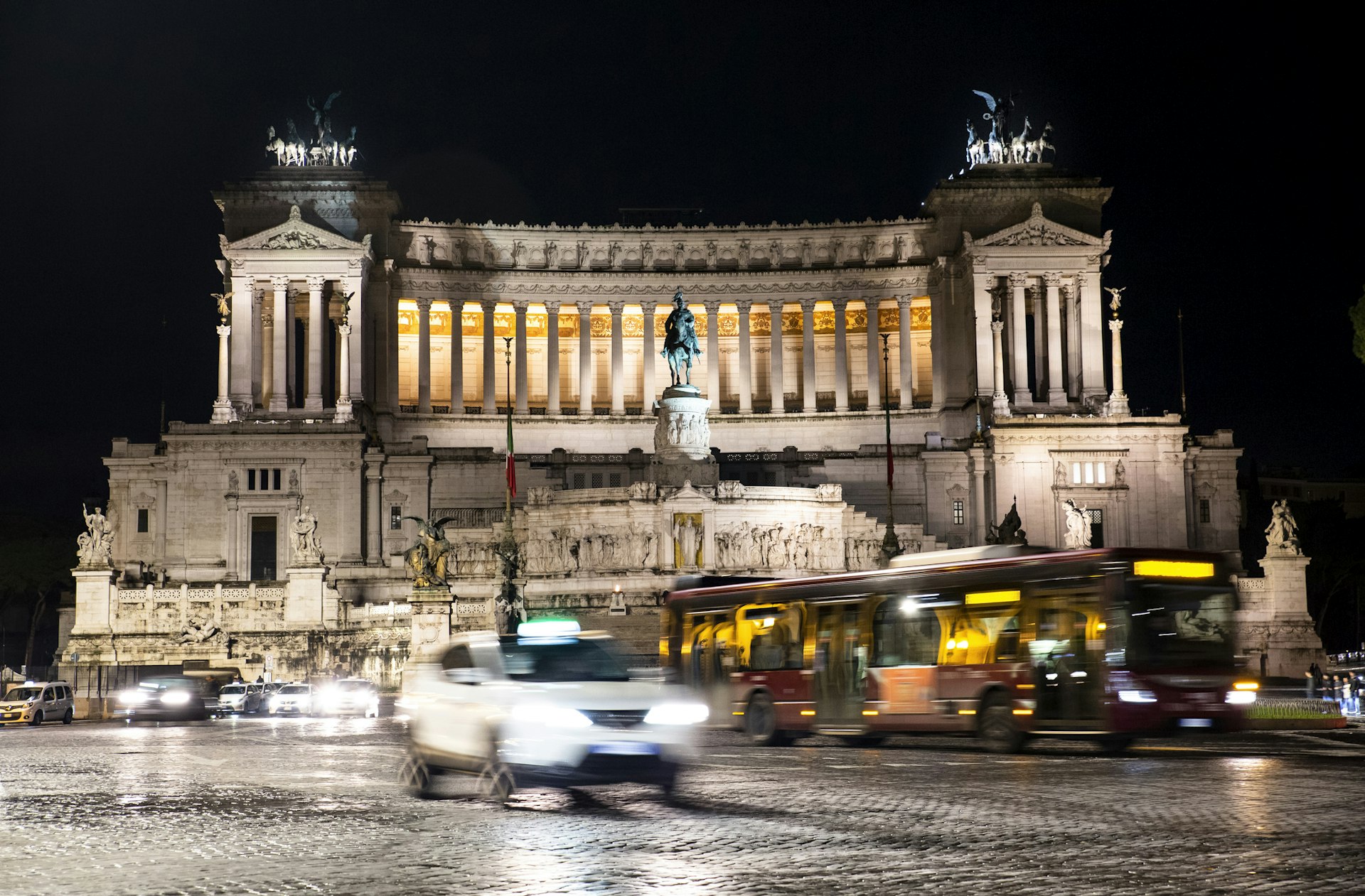
Rome's bus network is extensive
But consider that replacement bus service a good way to dip your toe in the vast bus network, which covers the most ground of any part of Rome’s mass transit system. Riding the bus is one of the best ways to immerse yourself in the cacophony of the city and though the sheer size of the network might feel intimidating, it’s worth doing.
The Atac signage at almost every bus stop can help you go in the right direction, and the Moovit app has up-to-the-minute timetables that will tell you which direction to look. And as always, don’t be afraid to ask people waiting at the same stop: you may get a few grumbles but you’re much more likely to get someone who will not only tell you whether you’re in the right place but will also make sure you actually get on the right bus.
Tickets are valid on buses, trams and metro lines
Travelers can purchase daily or weekly farecards from machines or kiosks located at the entrance to nearly every metro station, and the Tap and Go system is available to anyone with a contactless card as well as smartphones and smartwatches. You’ll be charged for single rides and each is valid for 100 minutes, as with a standard travel card. While the Tap and Go system has become quite reliable in the past year, it still has its share of hiccups and is occasionally out of service for maintenance. It doesn’t hurt to have a ticket in reserve for just such an occasion. Oh and, the ticket machines don’t give more than €6 in change so be aware before you use a €20 note to pay for a €1.50 ticket!

Walking is the best way to see some of Rome's key sites
Walking through Rome is as frenetic and romantic as you think it will be, and you’ll see icons at every turn. Much of the ancient center of Rome, which includes sites like the the Colosseum , the Forum and the Pantheon , is easily within walking distance, and on a nice day, you could cover all of these and much more.
There is always something going on and if you slow down a bit, you’ll find yourself soaking up the ambiance that makes Rome so singular. After all, it’s only by walking that you’d catch the Rose Garden hiding above the Circo Massimo , or the path that winds along the Tiber River. If you want to see Rome for what it truly can be, stop and walk for a while.
Of course, for all its magic, the center of Rome can be extraordinarily congested with foot and car traffic, so navigating these areas sometimes takes a lot of time and even more patience.
Try to avoid peak hours at places that you’re not necessarily going to enter: if you only want to walk around the Colosseum, wait until after it closes at 6pm and the crowds largely dissipate. After all, that’s the magic hour, when the light hits it just right and everything is illuminated with pink and gold hues.
Driving in Rome is best avoided
Here’s the thing. Driving in Italy is an art form, and if you can drive in cities like Rome, you've reached a new level of mastery. Romans drive with an urgency and a logic that will escape everyone else, and while it may seem that they’re aggressive (and they can be) often they’re just moving into openings in traffic that only they can see. Do not attempt to mix in this, as it will inevitably result in confusion on your part and frustration on the part of everyone around you.
Taxis are easy to find
Leave the driving to the professionals, in this case the Romans. Taxis are proliferate, and can be easily ordered via the Free Now app , which will give you fixed rates and allows you to pay through it as well. Uber is also quite reliable around the city and will give you the option of both a taxi or private hire car called an NCC, which stands for Noleggio con Conducente (hire car with driver).
Bikes and scooters are popular, but not always wise
Exercise caution with bikes and scooters in Rome. These have become a popular mode of transportation here just as in other cities around the world. Tours guides are often skilled at helping riders navigate the streets on bikes and scooters, but if you’re not used to riding in busy lanes with uneven sidewalks, you could put yourself (and others) at risk.
Rome is not very accessible
Both the national and municipal governments have been working on improving the city’s infrastructure for people with disabilities, and the ATAC website offers a comprehensive overview of the metro, tram, train and bus services for people with disabilities. According to the ATAC website, 98% of buses are equipped with boarding platforms, 70% of trams have platform level flooring, and the vast majority of metro stations have elevators as well as tactile paths and maps for visually impaired passengers, displays for those with hearing impairments, and Braille messaging. The website also has a handy search function to check whether your station has these services available, and is updated in real time for any service interruptions.
Major sites around the city offer special access to visitors with limited mobility: it’s possible to reserve a wheelchair at the Vatican museums , and the Colosseum has both ramps and elevators to facilitate movement around the monument (that said, the underground parts of the Colosseum are not wheelchair accessible). But there’s no doubt that it’s still slow going on those picturesque cobblestone streets for those with any mobility challenges, including those who might be traveling with small children and strollers. Keep it in mind as you plan your day, and if you’ve got precious cargo in hand try to schedule your iconic visits for off peak hours.
This article was first published Apr 7, 2021 and updated Jun 29, 2023.
Explore related stories
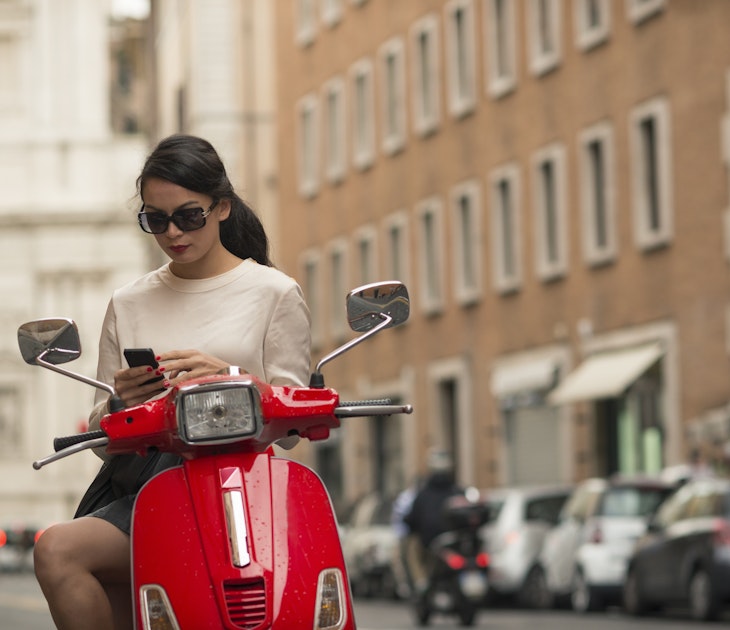
Destination Practicalities
May 30, 2023 • 14 min read
Your guide to traveling independently across Italy, from the Alps to the islands.

Apr 19, 2024 • 7 min read

Apr 8, 2024 • 7 min read
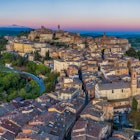
Apr 7, 2024 • 11 min read

Mar 21, 2024 • 6 min read

Mar 15, 2024 • 10 min read

Mar 8, 2024 • 17 min read

Feb 27, 2024 • 9 min read

Feb 27, 2024 • 6 min read
Itinerary: 3 Days in Rome
Day Trips From Rome
Rome's Top Attractions
Free Things to Do
Things to Do With Kids
Beaches Near Rome
Top Museums in Rome
Where to Shop in Rome
Events in Rome
The Best Food to Try
The Top Restaurants in Rome
Nightlife in Rome
The Best Time to Visit Rome
Weather & Climate
Rome Airport Guide
Tipping in Rome
Rome's Top Neighborhoods
Public Transportation in Rome
Getting Around Rome: Guide to Public Transportation
:max_bytes(150000):strip_icc():format(webp)/ElizabethHeath-Headshot-horiz-e7525e97616245958bf3d94e8db7f119.png)
rarrarorro/Getty Images
- Public Transportation
Other Transit Options
Car rentals, getting to rome from the airport.
- Accessibility
- Additional Tips
Rome has an extensive public transportation system consisting of the Metro (subway), bus, tram, and three suburban railway lines (FS) that move millions of passengers throughout the Italian capital each year. A convenient and relatively inexpensive way to get around, Rome's public transportation, operated by ATAC , will connect you to the Eternal City's most popular tourist attractions.
Here's what you need to know about getting around Rome on public transportation.
How to Ride Rome's Public Transportation
Rome's internal transportation system allows holders of tickets and passes to travel on all city transport within the time designated on the ticket purchased. The method you choose to use will depend on where you are going and your timing. For example, buses can get caught up in traffic, but the quicker-moving trams don't reach as many major tourist areas as buses do, and the three-line metro also might not be extensive enough to get you where you need to be. (Read more on the specific of each method below.) Check the ATAC site to plan your route.
Methods of Public Transportation
The Metro (Metropolitana): It consists of three lines: A (orange), B (blue) and C (green). Operating on 60 km (37 miles) of tracks with 73 station stops, the Metro is an efficient system of trains that travel both underground (subway) and above-ground. Termini Station is the main hub of Metro, with Lines A and B intersecting there.
Commuter trains (Regional State Railways or FS): There are also three commuter train lines: Roma-Lido (to Ostia), Roma-Giardinetti (a narrow gauge, on-street railway), and Roma-Nord (to outlying suburbs). Commuter lines honor Metro/bus/tram tickets, as long as you are traveling within the city limits.
Buses: Slow-moving but frequent buses ply most major thoroughfares in Rome and connect the areas that Metro doesn't reach. To determine which bus stops where, look at the tall signs at the bus stops on the sidewalk, and find the bus line(s) that stops at or near where you need to go. Increasingly, digital signs list the series of buses scheduled to arrive at a stop, so you'll know how long you need to wait for your bus.
The biggest bus depots in central Rome and the ones you're most likely to rely on for sightseeing are located at Piazza Venezia (with most stops to the right of the Vittoriano monument), in front of Termini Station. Most buses bound for Vatican City stop at Borgo/Piazza Pia (at Castel Sant'Angelo) or at Piazza del Risorgimento, in front of the Vatican Museums.
Trams: Six tram lines run across Rome, and they have a certain old-school charm. Tram stops are usually on raised platforms in the middle of busy streets, so be sure to use marked pedestrian crosswalks to get to or from these platforms. They're a bit nicer and cleaner than buses, however, these do not take you to the city center, and do not run near any major tourist attractions, so they're not your best bet for sightseeing.
Despite being overcrowded and chronically behind schedule, for the most part, Rome's buses, trams, and commuter trains are reliable and highly efficient.
Tickets & Fares
How to Buy: In Rome, you must have a ticket before boarding any public transportation. There are several places where you can buy B.I.T. tickets ( biglietti ), including kiosks at stations, in coffee bars, at tabacchi (tobacco shops) and newsstands ( edicole ). You can also buy regional and intercity train tickets online at TrenItalia and Italo , and bus/tram/commuter rail tickets via MyCicero app . Purchases by credit card can be made at automated ticket machines or online, but when buying a single ticket, cash is required.
How to Use: On the Metro, the ticket is inserted into automated ticket barriers when entering and exiting. On buses, trams and commuter rail passengers must validate their ticket in one of the yellow ticket machines inside the vehicle. Before getting on a train, you'll find green validation machines near track entrances. Most operators today accept contactless payments on smartphones, so in this case, there's no need to validate. But failure to stamp your paper ticket can result in fines of €55 and up.
Fares: Rides on all public transportation in Rome cost €1.50. Children 10 and under ride for free when accompanied by an adult.
Discount Fares: Discounted public transport passes are recommended for visitors, providing a better value than paying as you go. Purchase passes at vending machines in any metro station, tobacco shop, or newsstand. There's a way to buy tickets by SMS (text sent to your smartphone), but unless you have an Italian phone number, we don't recommend this option. Roma 24H (1-day) costs €6; Roma 72H (3-day) is €16.50; and a weekly ticket (CIS) is €24 (good for 7 calendar days).
Essential Information About Rome's Public Transportation
- Hours: Buses, trams, and commuter trains operate daily from 5:30 a.m. to midnight, with limited night bus service available. The Metro is open from 5:30 a.m. to 11:30 p.m., Monday through Friday and Sunday (until 1:30 AM on Saturdays).
- Key Routes: Some key bus routes for tourist: 40 (St Peter's), 60 and 75 (Colosseum), 62 (Spanish Steps), 64 (Vatican), 81 (Circus Maximus), H and Tram 8 (Trastevere).
- Service Alerts: Like any big city, service interruptions happen. In Italy, it's quite possible to experience a general or transportation strike ( sciopero ) during your stay. To get updated news about impending disruptions go to MIT.gov .
- Transfers: Tickets on the Metro and FS trains are only good for a single ride, however buses and trams let you transfer as many times as you want in a 100-minute period.
Most of the main tourist attractions are located in the historic center, but several important sights like papal palaces, gardens, catacombs, parks, and lakes are farther afield. Many can be reached by taking a combination of the Metro and/or bus, but others are harder to get to. Here are a few alternative transits options you should know about.
Scooters for Hire
For those who are looking for a fun and easy way to get around Rome, Scooterino is an app that sends a driver and an extra helmet to pick you up—just hop on the back and they'll take you where you want to go. There are also several companies in the city that offer electric bikes, electric scooters, gas-powered scooters and vintage Vespas for hire, too.
If you are renting a motorized scooter ( motorino ) to pilot yourself, you must have a valid drivers license (no special license is required for up to 125cc). Given Rome's hectic, often fast-moving traffic and fearless drivers, we recommend you have solid experience operating a motorcycle. Note: wearing a helmet is required by law.
Bikes Rentals
You can rent human-powered road bikes, mountain bikes, trekking bikes, E-bikes, speed bikes, and tandem bikes. Consider joining a bike tour to get the most out of the experience.
Rome's official cabs are white, have a "taxi" sign on the roof and their license number printed on the doors. You cannot hail taxis on the street, but below are other ways to can get a cab in Rome:
- Go to one of the designated taxi stands scattered throughout the city. You'll find ranks outside stations, at large piazzas, and around popular tourist sights.
- Order a cab by phone directly from the taxi company.
- Arrange a pickup with MyTaxi app . It works a lot like Uber in that you put in a request and your location and it sends the nearest taxi to pick you up.
Taxis rates are as follows : €1.10-1.60 (per km) from 7 a.m. to 10 p.m. If you're leaving from Termini train station, there's a €2 surcharge, plus a €1 charge per piece of luggage that has to go in the trunk. Fares begin when you get in or at the time you call for one (not when it arrives).
Ride Sharing Apps
In Rome, Uber is only permitted to operate its Uber Black and Uber Van service. Drivers are required to have a town car NCC license, making it significantly more expensive than using taxis.
Unless you are planning to drive from Rome to other destinations not connected by the national rail system, we recommend you avoid driving in Rome. Not only is it expensive (gas costs as much as 2€ per liter, equaling about $8 per gallon), but street parking is scarce, the city is full of poorly marked, one-way streets, and traffic fines can be steep.
To rent a car in Italy you must be over 21 years old and have held a driver's license for at least a year. If visiting from outside the EU, you may be required to have an International Driving Permit (IDP) , which you must apply for before leaving home. Check with your local automobile association for details.
There are two airports that serve Rome's metropolitan area and the surrounding regions of Lazio, Umbria, and Tuscany. Fiumicino Airport (FCO), also known as Leonardo da Vinci Airport, is a large, international hub served by long-haul flights. The second is Ciampino Airport (CIO), which is served mostly by budget airlines that fly to and from cities across Italy and Europe.
Airport transfers by train and bus take travelers to one of Rome's two main railway stations: Roma Termini (in the historic center) and Roma Tiburtina (just outside the walls). Both train stations have transit areas connecting to key destinations in Rome.
Fiumicino Airport : Located 31 km (22 miles) from the center of Rome, the easiest and quickest way to get to the main train station, Roma Termini, is by taking the Leonardo Express , a direct shuttle train. Departing from the airport's railway station every 20 minutes or so, the train costs €14 one way. A number of bus operators provide an economical option into the city with fares around €6-7 for the 45-minute journey. If you prefer to take a taxi, they charge a flat rate of €48 (to anywhere inside the Aurelian walls) but may add luggage and extra passenger surcharges.
Ciampino Airport: This airport, 15 km (9 miles) from Rome's city center, offers several city transfer options, however, there's no direct train service. Airport buses are operated by Cotral , Terravision , Roma Airport Bus , and Sit , with rides costing between €6 and €7. The journey takes about 30-40 minutes, depending on traffic. The flat-rate taxi fare (anywhere within the Aurelian walls) is €30, which doesn't include baggage and extra passenger fees.
Accessibility on Rome's Public Transportation System
- Metro Line A has the most services for disabled riders, with 39 trains providing facilities for wheelchairs, along with loudspeaker stop alarms and automatic door opening systems. Many stops are equipped with lifts and/or adaptions for the visually impaired.
- There are buses for disabled passengers circulating on all the main urban lines, however at present, not all stops are accessible due to curb height issues.
- Tram Line 8 (Casaletto - Torre Argentina) is fully accessible. For more information go to ATAC 's website.
Additional Tips for Getting Around Rome
- Be wary of pickpockets on crowded subway cars and buses.
- Take advantage of navigation apps like Google maps and Mouversi .
- Never accept a ride from a driver not in a licensed, white taxi.
- Rome is a very walkable city with key attractions reachable on foot.
Your Trip to Rome: The Complete Guide
Getting Around Seattle: Guide to Public Transportation
Getting Around Paris: Guide to Public Transportation
Getting Around Mexico City: Guide to Public Transportation
Getting Around Frankfurt: Guide to Public Transportation
Getting Around Salt Lake City: Guide to Public Transportation
Getting Around Madrid: Guide to Public Transportation
Getting Around Beijing: Guide to Public Transportation
The 14 Best Day Trips from Rome
Getting Around Naples: Guide to Public Transportation
How to Travel from Rome Airport to Train Stations by Train, Bus, and Taxi
Munich Airport Guide
How to Visit Los Angeles Without a Car
Prague: Planning Your Trip
Getting Around Lisbon: Guide to Public Transportation
How to Travel From Florence to Paris by Train, Bus, Plane, and Car

Getting around Rome
The public transport system in Rome is very varied, cheap and user friendly . These are the main means of transportation in the city:
Urban Railway
Transport tickets and travel cards, you may also be interested in.

Termini Railway Station
Roma Termini railway station is Rome’s most important train station. Every day 800 trains arrive and depart from this station, with over 480,000 passengers daily, making it the largest train station in Italy.
The Metro of Rome only has three lines and is currently the smallest metro system in Europe. Nevertheless, it reaches the city's most important landmarks.
How to get around Rome by metro, tram, bus and more
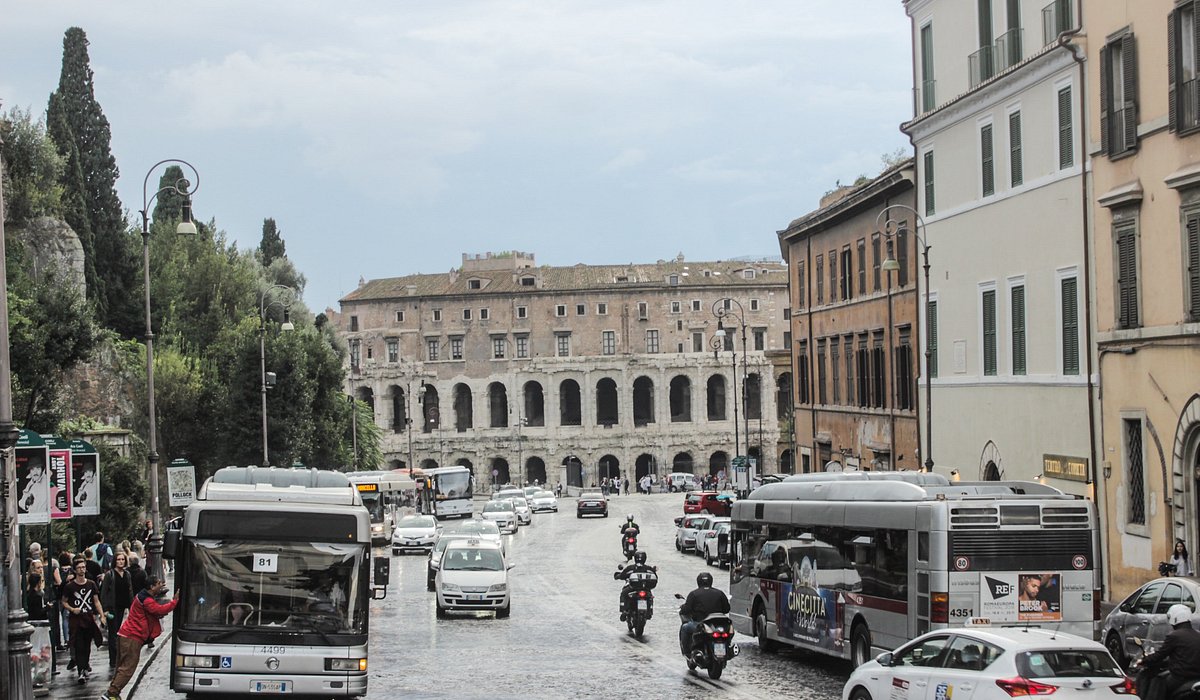
Rome is a sprawling city of over 496 square miles, which means you’ll have to navigate Rome’s transport network to travel around. Thankfully, just like most major European cities, Rome has an extensive and reliable transportation system.
Rome transport tickets and fares
Most transportation services are operated by a single company, ATAC SpA , on behalf of the local government. This makes it easy to switch between modes of transportation—the same ticket types can be used across the metro, buses, trams, and urban trains.
A BIT (one-way ticket) costs $1.58; frequent travelers can save more by getting a 24-, 48-, or 72-hour travel pass, which range from $7.39 to $18.99. Tickets can be purchased at any metro station kiosk, newsstand, or tobacco shop. ATAC has also recently implemented the contactless “tap&go” program, which automatically charges you the cheapest rate based on all your journeys over 24 hours—no mental math required.
Getting around Rome by metro

Best for: Sightseeing within the city
The metro consists of three lines that cross the city: A (orange), B (blue), and C (green). This is one of the most convenient travel options for tourists, as most of Rome’s attractions are located near metro stations, such as the Colosseum and the Trevi Fountain .
During peak hours, trains arrive almost every two to three minutes but expect to wait up to 10 minutes at off-peak timings. The metro operates from 5.30 a.m. until 11.30 p.m., with extended hours until 1.30 a.m. on Fridays and Saturdays. Check out our guide for more tips on navigating the Rome Metro .
Getting around Rome by bus
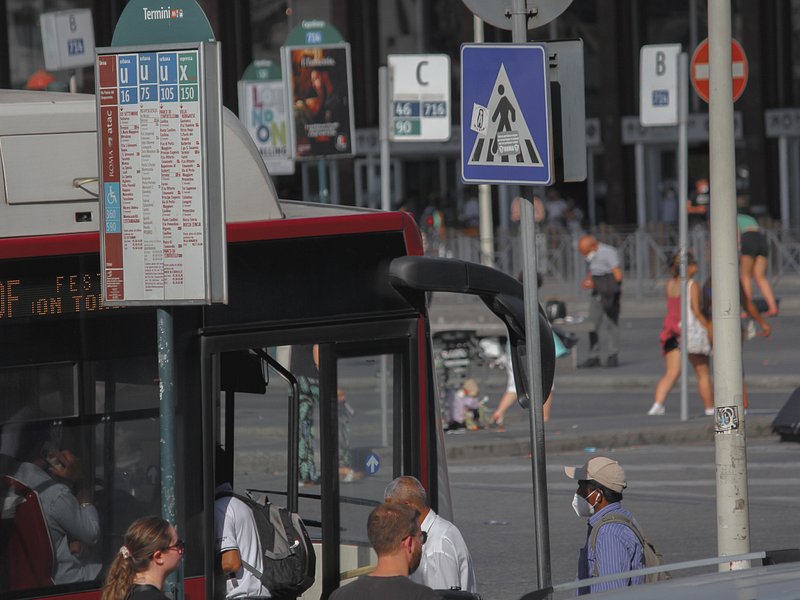
Best for: Experiencing Rome like a local
As metro routes mainly cover tourist attractions, going anywhere else via public transport will require a bus ride. For instance, if you plan on visiting the catacombs along the Appian Way , you’ll need to take a bus from Piazza Navona .
You can find bus routes and timetables at various bus stops. Most buses run from early morning until midnight, with night buses taking over the remaining hours—if you’re out late, look out for bus stops with a blue owl symbol. Plan your travel routes and stay updated on the go by downloading apps like Roma Bus .
However, keep in mind that Rome’s narrow streets tend to get congested, so public buses are often delayed and may slow to a crawl. To maximize your time in Rome, consider joining private bus tours for a more personalized journey. The Big Bus Hop-on Hop-off Open Top Tour stops at key attractions, and its open-air upper deck offers a bird’s eye view of the city.
Getting around Rome by tram

Best for: Eco-conscious travelers or families
Rome’s tram network has been around since the early 1900s, and is now fragmented and rather limited. It’s primarily used to get to residential neighborhoods like Flaminio . Parts of the tram lines are also falling into disrepair, forcing trams to slow down significantly at certain points for safety reasons.
Today, trams are gradually making a comeback as a more eco-friendly option. They also tend to be cleaner and less crowded. Get a taste of vintage Rome by hopping on the 19, which will take you to the Vatican ; gaze out the windows to watch the Tiber River and Villa Borghese flicker by outside.
Getting around Rome by urban train
Best for: Venturing out of the city
Ferrovie Urbane , Rome’s urban railway network, is useful for travelers looking to get out of the city. There are three lines, with a fourth under construction. Urban trains run every 10 to 20 minutes from 5.30 a.m. to 10.30 p.m.
Enjoy a beach getaway in Rome by hopping on the Roma-Lido railway line towards the seaside town of Lido di Ostia , where you’ll also find the Archaeological Park of Ostia Antica . This exclusive guided tour will let you skip any long lines.
Getting around Rome by taxi

Best for: Convenience
Price: Charged by distance, with base fares of $3.17 on weekdays, $4.75 on Sundays and holidays, and $6.86 at night
Whether you’re struggling with shopping bags or sore feet, sometimes a taxi ride is just what you need. The most reliable way of getting a taxi is by looking for a taxi stand , usually located near metro stations and tourist attractions. You can also call for a cab or use an app like Free Now , but the meter will start running once the driver accepts your request. While Uber is available in Rome, you’ll only be able to book an Uber Black, Lux, or Van due to lobbying by the city’s taxi drivers.
To avoid fare discrepancies, we recommend looking for licensed cabs—these are white, with a “TAXI” roof sign, meters, and the symbol of the City Council of Rome clearly visible on their front doors. Remember to ensure that the taximeter is switched on, and always ask for a receipt. Note that taxi rides to and from Rome’s airports are fixed at $50.65 for Fiumicino Airport and $31.65 for Ciampino Airport .
Getting around Rome by car

Best for: Road trips out of Rome
Price: Up to $273 per day
Thinking of taking a road trip to Pompeii or the Amalfi Coast ? Those above 21 can rent your own car or opt for car-sharing services like Share Now. However, you won’t be able to drive within the Centro Storico —where most major tourist attractions are located—and popular areas like Trastevere and Monti .
There are also plenty of private taxis and shuttles available for booking, where you can relax in an air-conditioned vehicle while your personal driver takes you on a sightseeing tour around Rome’s churches , lesser known attractions , and wineries . If you’ve done your research, you can even fully customize your itinerary . We also recommend scheduling a private transfer from the airport so that your driver will be waiting for you the moment your flight lands.
Getting around Rome by bike or scooter
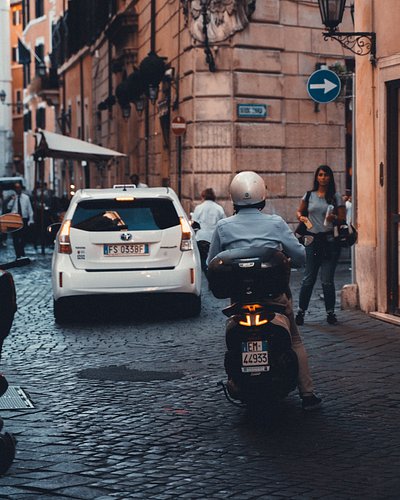
Best for: Adventurous travelers on a budget
Price: From $17 per day
Cycling in Rome is a great way to get around the city, especially as the Centro Storico is mostly car-free. If you hope to avoid bad traffic and the crowded metro, cycling is your best bet. Rome has many bike lanes, and it’s also relatively easy to find bike rental shops , especially in areas like the Circus Maximus . Bike tours are also available, whether in the city or the countryside .
Or channel your inner Audrey Hepburn and hop on a Vespa—although you’ll need a driver’s license or permit as well as a helmet to rent your own scooter in Rome. Otherwise, join a scooter tour to zip around the city on the back of a Vespa or a vintage sidecar .
Getting to Rome from the airport
1. leonardo express.

Price: $14.77
This direct non-stop train takes you from Fiumicino Airport to Termini Station in just 32 minutes. From there, you can connect to the metro. The Leonardo Express is ideal for families looking for a fast and convenient way to get into the city—children under four travel free; those under 12 travel free with every paying adult. It runs every 15 minutes, between 5 a.m. and 11 p.m. Pre-book a ticket online or buy one at the airport.
2. Airport bus
Price: From $5.28
Companies like Terravision operate shuttle buses between Fiumicino Airport or Ciampino Airport and Termini Station, each with different timings, frequencies, and fares. This is the cheapest way to get into the city, but it might take up to an hour depending on traffic.
3. Private transfer from the airport
Price: $37 per adult or $94 per group of three
Pre-book a private transfer for a hassle-free arrival. Your driver will be waiting for you once you exit the airport. Some companies charge per adult ; others charge per group .
Price: $50.65 from Fiumicino Airport, $31.65 from Ciampino Airport
Taxis are required to charge a flat fare from the airport to a location within the boundaries of the Aurelian Walls in Rome. Avoid unlicensed drivers and only get a cab from an official taxi stand.
Not sure which is the best airport for your trip? Check out our Rome airport guide for more insights.
Recommended tours and activities

More like this:
- How to see the best of Rome in 3 days for first-timers
- The best espresso in Rome: 10 of the city’s finest coffee bars
- Your guide to the best Michelin-starred restaurants in Rome
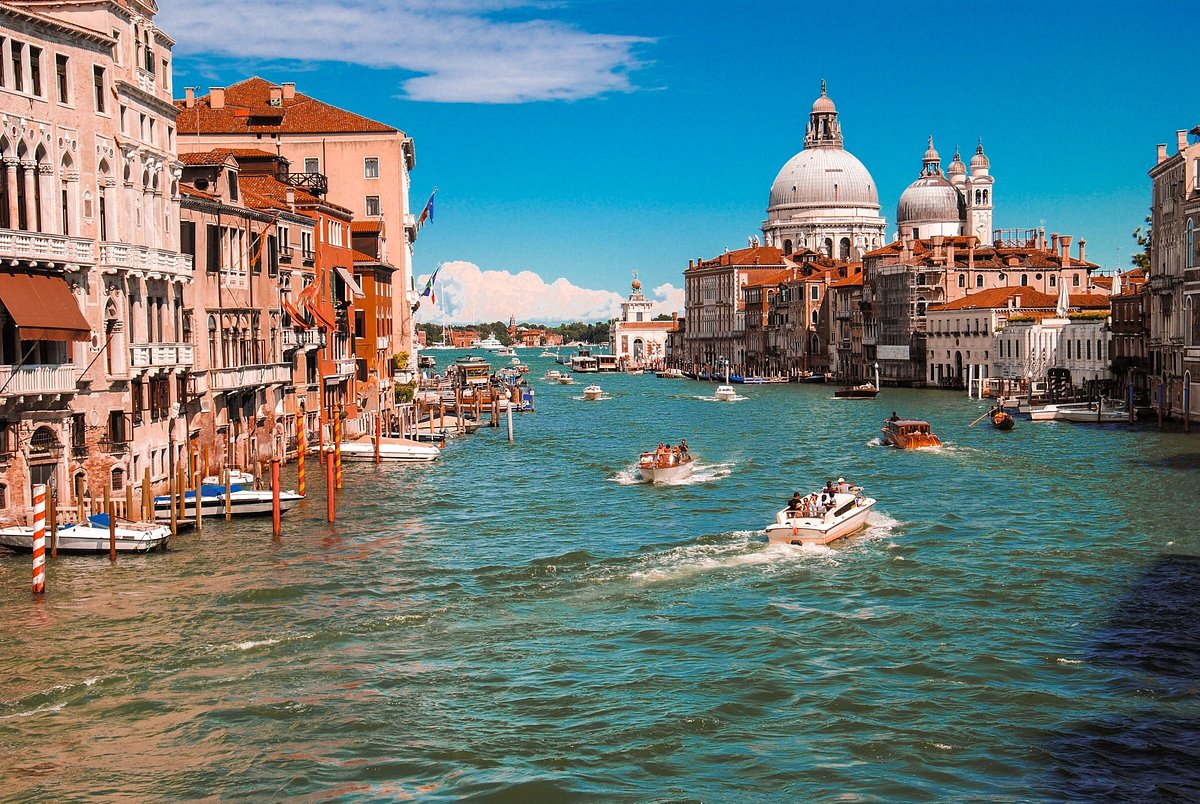
How to get around Rome: Rome transportation guide for all types of visitors
Our Rome transportation guide shows the best way to get around Rome, with options for all types of travel including airport connections and inner city transportation.
If you are planning a trip to Rome, chances are you already have a list of Rome main attractions you know you want to see.
You may even have an itinerary, with what you intend to see when, but you may be stumped about the more practical details of your day: how do you get from one Rome attraction to the other?
Figuring out how to get around Rome, is not easy if you’re never been to the city, but I am here to help!
In this guide, you will find my best tips on how to get around Rome, when and how to use Rome’s public transport service, when to rely on taxis and additional helpful transport options in the Eternal City.
Please note: this post contains affiliate links. Should you make a purchase through them, we might make a small commission at no extra cost to you.

Table of Contents
Rome Transportation Guide options at a glance
How to get around rome: airport to hotel connections.
Rome has two airports, Fiumicino/ Leonardo da Vinci (FCO) and Ciampino (CIA).
To go from Fiumicino to Rome you can choose:
- Train Leonardo Express Airport Shuttle
- Bus shuttle
- Private airport transfer
You can read here >>> my complete guide: how to get from Fiumicino Airport to Rome city center <<<

From Ciampino, you can choose between:
- Bus + train service
You can read here >>> my complete guide: how to get from Ciampino Airport to Rome city center <<<
Once you have made your way to the city, you have several ways to navigate Rome.
The best way to around Rome: inner city transport guide – Walking around Rome
If you like to walk and have no mobility issues, by far the best way to get around Rome is on foot.
Rome city center is not small however, it is rather compact and many main attractions are close to one another.
To give you an example, you can walk from the Spanish Steps to the Trevi Fountain in about 8 minutes, and from Piazza Navona to the Pantheon in less than 5!
If you have accommodation in the city center, which I consider the best area to stay in Rome , you are likely to be able to walk everywhere: you will probably end your day clocking in well over 20,000 steps, but you won’t feel them along the way as the city will keep delivering beaitufl corners and unexpected gems every step of the way!
See here >>> How far are Rome main attractions from one another? <<<
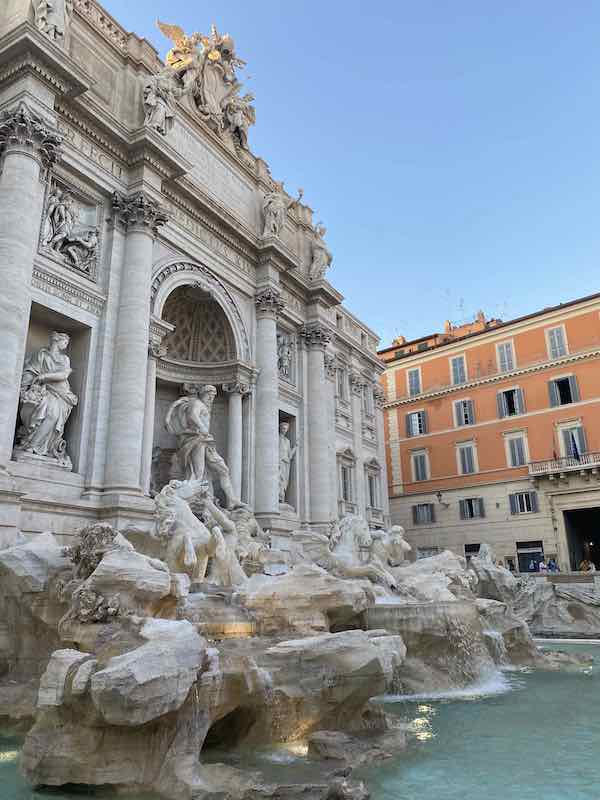
The advantages of getting around Rome on foot are:
Budget : you can spent a whole day in Rome sightseeing on foot for absolutely free
Sights : Rome city center is a true open air museums and most of its gems and secrets can only be spotted on foot, venturing into its small streets and hidden piazzas
The low environmental impact of walking and the exercise you get are of course added values too: it’s even easier to indulge in that extra slice of pizza and that gelato, after walking all day, no?
For walking in Rome, good shoes are paramount. Find here >>> the best shoes for Rome travel <<<
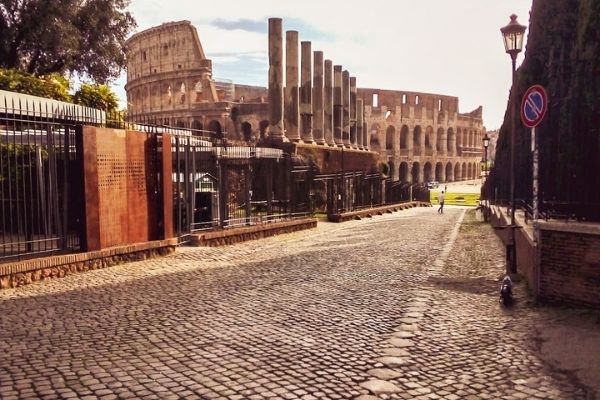
Exploring Rome by public bus or tram
Rome has a large network of buses and trams, managed by the local public transportation company ATAC.
Buses are a good option for longer inner city journeys and are cheap. However, in most cases a joinery on a Rome bus is not a pleasant experience.
Rome buses have an erratic timetable (usually not shared with the users and not respected anyway), they are often so busy you feel like you are standing in a sardine can and they are only accessible via tall steps, that make them hard for anyone without anything less than excellent mobility.
There are of course exceptions: some lines are often ok during off peak hours and if you’re not in a hurry it is often not too much of a bother having to wait for a bus.
However, the systems is far from flawless so, as much as possible, I recommend you avoid it or embrace it as ‘local experience’!
Trams are usually a little less busy and, often it is even possible to find a seat. If you have accommodation along the tram line, they are good option.
You can find here >>> my complete guide to using the bus in Rome <<<
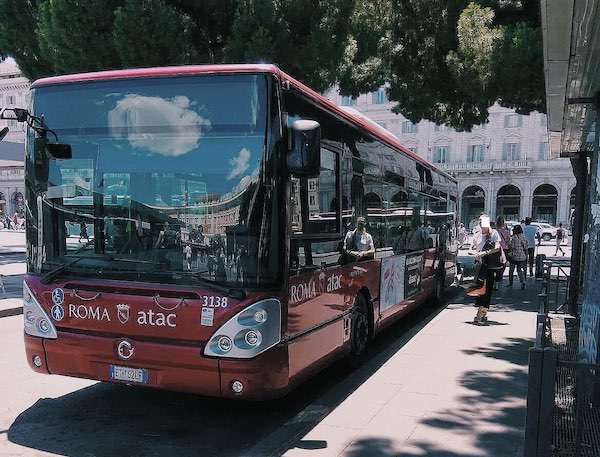
How to get around Rome by metro
Rome has a metro system which serves a few main landmarks are areas such as the train station, the Vatican and the Colosseum, among others.
Despite constant work on the network unfortunately the Rome metro system is all but flawless.
Compared with other cities in Europe, the network is limited, dirty and often erratic, with stations poorly or not at all accessible and old trains.
Despite this bleak introduction, the metro in Rome is excellent if you are staying further out of the center and close to a stop so I believe it belongs in this Rome transportation guide!
In that case, with the right expectations, you will find that the system does its job… most of the time!
I recommend you only plan on using the metro if you have no mobility issues, can walk up and down steps and you don’t have children in strollers – Rome’s metro is not stroller friendly.
Moving around Rome by hop-on hop-off buses
Hop on Hop off buses are a good option to go from one of Rome’s attractions to the next. However, they are rather pricey and they still require you to do some walking, so it is important to evaluate well if they are a good solution for your needs specifically before committing.
The main things to know about Rome hop on, hop off buses is:
There are several lines and several providers, covering different parts of the city. Since they are independent one from the other and business competitors, it is paramount to choose the line that best suits your needs as you won’t be able to use your ticket on any other.
Since buses are bulky, they are not able to reach inner piazzas, smaller streets or leave the main roads.
This means that you will often have to walk from the stop to the attractions: it may be only a few minutes, but if you have mobility issues, it is important to know they will not simply drop you in front of attractions as they usually cannot access the inner part of the city centre.
Hop on hop off buses in Rome are expensive and only really good if you take them several times in one day. in the city centre, you will often find yourself walking instead, as there are many attractions at a short distance one from another.
I recommend you plan a precise itinerary before opting for a hop on hop off bus tour as transport to make sure you make the most of your ticket.
Exploring Rome by Golf Cart Tour
Golf Carts are a popular tour option in Rome.
They are not a means of transport you can just flag on the streets and hop onto; however, they are a great way to discover the city without having to walk and without having to worry about erratic bus schedules or traffic.
They are particularly popular with families with kids, anyone who cannot walk loping distances but also people who want to spend a fun afternoon with a guide and Romes’ beautiful breeze in their hair!
The advantages of a Golf Cart Tour are:
- No walking needed: the cart will be able to reach even small streets and attractions precluded to big buses so you won’t have to walk much, to at all
- Open sides offer great views
- Suitable for all ages
- Experienced guides can help you understand what you are seeing and give you the lay of the land.
You can find here >>> our favorite Golf Cart Tour in Rome <<<
Exploring Rome by Vespa
Riding a Vespa is one of the most enjoyable ways to explore Rome. However, it is not for the faint of heart!
Photos of vespa experiences show people whizzing along the Colosseum with Rome’s warm air caressing their skin and indeed, this is just what a vespa drive in Rome feels like.

What the photos do not say though is that the experience also comes with cars beeping at your, crazy traffic from all sides, potentially slippery cobbles and the need for a lot of traffic awareness at all time.
I do not want to discourage you about vespas, they are really fun: however, if you are not used to city traffic, have never driven a vespa style scooter or you are hoping to ride with your child, please experience Rome traffic first or consider a tour with an experienced driver.
If you want to drive your own, I recommend you book a vespa with a good cancellation policy and leave the tour for day 2 or 3 in Rome, so you can first see if the traffic is manageable for you or too stressful.
Please note: to drive a vespa, you need a suitable driving licence and to be of legal driving age in Italy.
Have a look here >>> at vespa booking prices and rules in Rome <<<
Moving around Rome by bike
Bikes are getting more and more popular in Rome, mostly in response to unmanageable car traffic.
However, Rome is not a bike friendly city, especially in the city centre.
Built on seven hills, Rome has a lot of uphill areas that make cycling rather tiring.
On top of this, many areas of the city center have cobbles, which are dangerous on bikes, and the traffic is so busy and fast, it requires bikes to be extra careful at all times.
Like for the Vespa, I recommend you come to Rome and see the traffic and landscape situation before committing to exploring by bike. At quieter times it can be a fun way to see the city; at busier times you may find it overwhelming.
In general, I only recommend using bikes in Rome if you are an experienced city cyclist: I do not recommend renting them with kids, unless you to car free areas to areas served by cycling lanes (ask your bike rental shop for cycling maps of Rome).
Find here >>> example of Rome bike rental with prices <<<
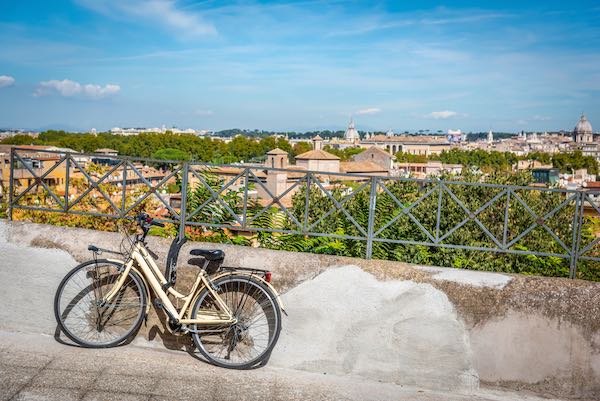
Getting around Rome by E-bike
E-bikes are going though a surge in popularity in Rome and are indeed a better way to explore the city than standard bikes as they will assist you on the many hills of Rome!
Like bikes and vespas, e-bikes in Rome are potentially dangerous for traffic.
As said above, bike lanes in Rome are few and far between, especially in the center, and cars are not gentle – they will beep at you, try to overtake you and, in the mess of Rome’s traffic, they may also not see you so you have to be alert and super careful at all times.
Need to know: e-bikes are motorized and therefore follow minimum age requirement for driving just like scooters and vespas. If visiting Rome with kids, ask your e-bike rental place what the requirement are to avoid disappointment.
Find here >>> Rome E-bike rental example with prices <<<
How to get around Rome by Taxi
Taxis are the most convenient option to get around Rome for distances you cannot cover on foot.
Official taxis in Rome operate with a meter and you never have to discuss or haggle with the driver as all fares as available in the cab, so you always know what you get.
While not the cheapest option, taxis are a great solution especially in the evening.
You can find here >>> our guide to using taxis in Rome <<<
At the time of writing, Uber is only available in Rome in the expensive ‘Uber Black’ option, which offers no advantages vs an official taxi.
However, Uber recently announced a new agreement reached with Rome taxi drivers so this may change soon. I will update this Rome transportation guide as soon as standard Uber in Rome becomes available and I can report based on personal experience.
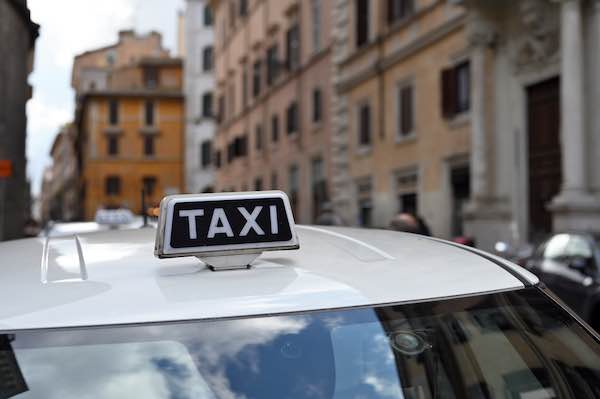
Moving around Rome by electric scooters
A Rome transportation guide would not be complete with a mention of electric scooters, a means of transport you will encounter often in Rome city center, usually unruly parked on pavements!
Electric scooters became available in Rome a couple of years ago and have received mixed reactions.
On one had, they are convenient and fun; on the other hand, the mix of cobbles, traffic and poor regulations have made them one of the most dangerous means of transport in Rome, for number and seriousness of accidents.
Like for vespas, mopeds and bikes, I recommend using caution if planning on using an electric scooter in Rome and see in person what Rome traffic feels like before committing.
If you decide an electric scooter if for you, you can find into on how to rent one in Rome here .
So, what’s the best way to get around Rome?
As you can see from all the examples above, the best way to get around Rome is on foot and by taxi.
However, several alternative options are available to suit most types of travelers so you know that, no matter what, you can explore Rome at your own pace.
I hope you enjoyed this Rome transportation guide and it helped you plan your stay.
Safe travels to Rome!
Rome Transportation guide: pin this!
Keep this Rome transportation guide with you at all times by saving it on Pinterest!

My name is Marta, I am a travel-loving mama born and bred in that messy, wonderful, infuriating, awe-inspiring unbelievably beautiful city that is Rome. A classics graduate and professional travel blogger, on this site I share my insider tips to help you plan your dream trip to Rome, Italy.
Six days in Rome with kids: how to plan your stay – day by day itinerary and tips
Viaggio nei fori, rome: all you need to know about rome’s most exciting light show, you may also like, what to wear in rome in june: full..., rome scavenger hunts for kids you’ll love (with..., how to enjoy rome on a budget: 22..., how to see the best of rome in..., visiting rome with kids: tips + all you..., the pasta making class in rome you’ll love:..., 9 fantastic kids’ attractions in rome they’ll love, how to buy tickets to the colosseum in..., how to buy colosseum tickets from the official..., piazza navona christmas market: all you need to..., privacy overview.

Getting Around in Rome
Rome Metro – by Phillip Capper (creative commons)
Rome is a sprawling beast of a city, and its marquee attractions lie dotted all over the map – so even if you’re intent on walking to get to most of the sights, you’d be smart to get acquainted with Rome’s public transportation system as well. Taking the bus or the Metro now and then will not only save you time, it’ll save your feet as well.
In Rome you’ve got a few options to choose from, and which transportation method is best will depend on your starting point and your destination. And because the Metro network isn’t extensive in any sense of the word, it’s a good idea to learn the basics of multiple ways of getting around Rome so you don’t feel stuck.
To get you started, particularly with orienting your hotel and major attractions in the city, you can use this fabulous map on the official site of ATAC , Rome’s transportation company. It’s a daunting map to look at online, but you can zoom in as needed to see neighborhoods in more detail. This map is hard to bring with you, however, so one of your first tasks upon arriving in Rome is to pick up a city map with transportation routes listed (usually available at newsstands).
Tickets for Public Transportation in Rome
Tickets for buses, trams, and the Metro are interchangeable, which is handy. There are monthly and annual transportation passes, but those are mainly for residents. You can buy tickets from newsstands, tobacco shops (called tabacchi – you’ll see a big T on a sign), and automated machines at Metro stops.
You must validate your ticket when you first use it. Validation machines are on board buses and trams, and at the turnstiles when you enter the Metro. And yes, I’ve heard about people who have played the part of the “dumb tourist” and not validated their ticket, claiming ignorance so they could keep using the same cheap ticket over and over again. I’ve also heard about people who get caught – and fined €50 or more – for doing that. So, it’s up to you. Me? I validate my tickets.
Your ticket options are:
- BIT (Integrated Time Ticket) – €1.50 – A ticket good for a single trip. It’s valid for 100 minutes, including only one Metro trip but as many bus or tram trips as you can fit into that time.
- BIG (Integrated Daily Ticket) – €6.00 – A pass good for 24 hours (on all transit methods) from the first validation.
- BTI (Integrated Tourist Ticket) – €16.50 – A pass good for three days (on all transit methods) from the first validation.
- CIS (Integrated Weekly Ticket) – €24.00 – A pass good for seven days (on all transit methods) from the first validation.
A Note About Transportation Safety in Rome
There are some routes that serve tourist attractions which are known (informally, of course) as “pickpocket express lines.” They can be really crowded, which just makes it easier for a thief to grab wallets or other valuables from tourists who are distracted by bus maps or what’s outside the window. No matter what you’re taking – bus, tram, or Metro – keep a close watch on your surroundings and your valuables. If it’s crowded, be even more alert. And if you’re uncomfortable, get off and wait for the next bus or train.
And now? Here’s an overview of your transportation options in Rome.
Buses in Rome
Buses in Rome – by ludovic (creative commons)
When you don’t know the landmarks of a city, nor the language, buses can be sort of intimidating. Unlike the Metro, they don’t automatically pull over at every single stop – you have to request a stop. Still, the bus system in Rome is the most intricate network of any of its public transit methods, so it’s a very good idea to learn the basics. And when you do figure it out, you’ll feel like you’ve just been given the keys to the city.
As mentioned above, you will need to get a Rome map that includes bus lines on it when you arrive in the city. Newsstands carry them, but be sure the map you’re buying has bus routes on it before you walk away – the word “autobus” (pronouned OW|toh|boos) is Italian for bus, so you can ask for “Una mappa con le linee autobus?” (OO|na MAHP|pah con leh lee|NEH OW|toh|boos) if the vendor doesn’t speak English.
I’d advise you to pick up this map before you actually need it – well before, in fact. Buy the map before lunch, so you can spread it out on the table and make sense of it in a leisurely fashion. Because there are so many bus lines, the stops themselves are only indicated by tiny numbers – there are not lines between them, however. You have to play connect-the-dots yourself, tracing a route from one of its numbers to the next to see where it goes. Once you know what you’re looking for, it’s not hard to figure out where you need to go. But you’ll be glad you did that over lunch as opposed to fretting about it at a bus stop.
On the streets of Rome, bus stops are indicated by a placard at the top of a signpost with the bus lines listed in columns, along with each stop that bus makes listed below it. Usually, the name of the stop at that sign is highlighted somehow – a red box around the stop name, for instance – so you know where you are. It’s also likely to be listed at the very top of the placard. The bus stops are always listed in an order that shows where they’re going, so names that are below the stop you’re looking at are coming up on that route – names above your stop are the ones that bus has already been to. If you’re at the Colosseo stop, for instance, and you see the Termini stop above the Colosseo one, you’ve got to cross the street and find a bus going the opposite direction in order to get to Termini. If Termini is listed below Colosseo, then you’re headed in the right direction.
Bus stop sign in Rome – by Jessica Spiegel, all rights reserved
Don’t rely on your bus driver or signage inside the bus to know when to get off the bus. Drivers don’t always take kindly to being asked to help you figure out where you’re going, and the buses don’t usually have signs that indicate which stop is up next. You’ll need to either know a landmark you’re looking for, follow the bus route on your map (understanding that the bus won’t stop at every point unless someone requests a stop or someone is waiting), or ask another passenger who seems friendly. The worst case scenario is that you see your stop just a wee bit too late, you request the next stop, and walk a little further than you thought you’d have to. Not a big deal.
Most buses are in operation starting at 5:00am and running until midnight, with a few routes operating Night Buses (marked with an N before the bus number) from midnight until 5:00am. The Night Bus routes aren’t identical to the regular bus routes, although they serve the busiest parts of the city.
Update: If you’ve got a smartphone…
Reader Laurel left a comment about another way to navigate the bus system in Rome, which I wanted to include here for anyone who plans to actually use his/her smartphone in Italy. Please do check with your mobile provider before you leave home, however, to make sure your phone is set up to work in Italy and to find out what it will cost you!
Laurel says:
“If you have a smartphone, use the browser and bookmark http://www.muovi.roma.it . There is a route planner, and you can also click on “bus waiting times and routes” to see when the next bus is supposed to arrive at your stop. Can also be used on desktop or laptop. You can actually follow your bus real time as you ride, noting which stop is coming up next. I use it all the time when I take an unfamiliar route.”
She also notes that some of the newer buses in Rome now have on-board signs that list the next stop, which is extremely helpful when you don’t have a smartphone!
Rome Metro – by rob kim (creative commons)
Rome’s Metro network consists of only two lines – Metropolitana Linea A and Metropolitana Linea B. Why no more, for a city this size? Because every time anyone digs underground to build anything in Rome, they inevitably run into ancient ruins. Construction on a Line C started so many years ago, only to be quickly halted and essentially turned into an archaeological dig, that it’s a running joke in Rome now. So even though subways are usually my favorite way of getting around any city blessed with an underground rail network, the Metro is not my first choice in Rome.
Having said that, if your hotel is near a Metro stop, it can be really useful for getting to some of the major attractions. And since you can use the same tickets on the Metro, buses, and trams, you won’t have to worry about buying a bunch of Metro tickets that you don’t end up using.
Metropolitana Linea A is the red line, and Metropolitana Linea B is blue. They intersect at only one place – Termini Station. On transportation maps and in the city itself, Metro stops are marked with red squares with a white M in the middle. Line A includes stops near the Vatican, the Piazza del Popolo, and the Spanish Steps. Line B includes stops near the Pyramid of Cestius, the Circus Maximus, the Colosseum, and the EUR. The Metro starts running at 5:30am and runs until 11:30pm Sunday-Thursday, and until 1:30am Friday-Saturday.
Trams in Rome
Tram in Rome – by RaSeLaSeD (creative commons)
Rome also has an above-ground light rail system, called trams. There are only seven tram lines in Rome, but they can be useful if you’re headed to a few key places – particularly the Trastevere neighborhood. And they’re on the same ticketing system as the bus and Metro, so that makes it easy to use them when they’re convenient.
Tram lines are marked on those same Rome maps with the bus lines, and they’re basically indistinguishable from the bus lines. How do you know it’s a tram you’re looking for and not a bus? It’s a small number – the tram lines only go up to line number 19.
Trams, like the Metro, stop at every station, so you don’t need to worry about missing yours. In addition to the Trastevere, trams also serve the Colosseum, the Vatican, and the Pantheon.
Taxis in Rome
Colosseum Taxis – by Robert Lowe (creative commons)
Taxis are plentiful in Rome, as are stories about people being swindled by taxi drivers. To me, they’re a last resort when getting around in Rome. They can be a safer option than the Night Buses if you need to get around in the middle of the night, but they’re not cheap, no matter when you use them.
If you’re planning to go anywhere by taxi, note that you don’t typically wave down a taxi the way you might in New York. There are taxi stands around the city, and if you need a cab you line up at a nearby stand. You’ll find taxi stands at major attractions like the Colosseum, the Vatican, and Termini Station, as well as major intersections and piazzas.
Also keep in mind that Roman taxi drivers have a somewhat deserved reputation for ripping unsuspecting tourists off, so if you think you’ll be taking a taxi at any time during your trip to Rome, I recommend you read my friend Shelley’s great article on How to Take a Taxi in Rome and Not Get Ripped Off .
4 responses to “Getting Around in Rome”
Another important way to get around Rome is walking. That would be good to include with this article, or, if you cover it elsewhere to link it. Tips might include how to cross the street (since traffic signals are sparse): Make eye contact with the approaching car and hold up your hand.
Oh, you’ve got a good point, Larry. The focus of this article was on public transportation, but now? Now I’m thinking an article on how to walk through busy cities in Italy is in order. Great call. Thanks!
Hi Jessica. A few other resources/ideas from a resident:
– The new red buses have signs like the Metro telling you the next stop. Priceless! – If you have a smartphone, use the browser and bookmark http://www.muovi.roma.it . There is a route planner, and you can also click on “bus waiting times and routes” to see when the next bus is supposed to arrive at your stop. Can also be used on desktop or laptop. – You can actually follow your bus real time as you ride, noting which stop is coming up next. I use it all the time when I take an unfamiliar route. – ProBus app takes the feed from ATAC and makes it a little friendlier, but I have found the app a bit quirky….
Thanks for the updates, Laurel! I’m so glad to hear that they’re moving in the direction of having on-bus information about the next stop. That’s invaluable. I wonder what percentage of the buses currently have that system?
The thing I worry about with recommending smartphone use is if people haven’t gotten an international plan (or they don’t know they need to) & then wind up with a whopper of a cell phone bill when they get home. I get an international data plan when I travel, but I know plenty of people who plan to leave their cell phones off (unless they’re connected to wifi) – so for them, paper maps are still the way to go. I’m going to update the post now with the information you provided, though, for people like me who can’t quite live without a smartphone, even while traveling. 🙂
Leave a Reply Cancel reply
Your email address will not be published. Required fields are marked *
This site uses Akismet to reduce spam. Learn how your comment data is processed .
Get our Newsletter
Sites i love.
- At Home in Tuscany
- Bleeding Espresso
- Ciao Amalfi
- Cook in Venice
- Dream of Italy
- Driving Like a Maniac
- Italy Beyond the Obvious
- Jessica's Personal Site
- Ms. Adventures in Italy
- My Bella Basilicata
- My Bella Vita
- Napoli Unplugged
- Revealed Rome
- Sacred Destinations in Italy
- The Bittersweet Life Podcast

Become a Member and get free shipping on your orders!
SIGN UP FOR 10% OFF ON YOUR FIRST ORDER

- Log in or Sign up
- Mother's Day
- Citrus Collection
- Giadzy Pasta
- Giada's Essentials
- Limited Edition
- Subscriptions
- Recipe Boxes
- Pasta Night
- Gluten-Free
- Easy Cooking
- Short Pasta
- Sauces & Passatas
- Whole & Sun-Dried
- Spices & Herbs
- Rice & Grains
- Spreads & Preserves
- Jams & Honeys
- Breads & Crackers
- Truffles from Alba
- Chocolate & Candy
- The Magazine
- The Membership

How To Get Around In Rome: The Public Transportation Guide

Planning a trip to the eternal city and unsure of how to get around? From where to find taxis and how to use the train, this is the guide for you!
While walking is certainly the best way to travel around the historical center of the city, there are a variety of other options at your disposal. From how to travel from the airport to easily accessible day trips, we’ve got your transportation questions covered.

How do I get to the center of Rome from Fiumicino Airport?
Fiumicino airport is located about 40 minutes away from the center of Rome. There are many different ways that you can choose to travel into the city center! Here are some options, listed from least expensive to most expensive.
$ Take the Bus
There are two bus companies that travel from Fiumicino airport to central Rome. The SIT bus costs €7 and will take you from airport terminal 3 either to Termini Station (Rome’s central train station) or near the Vatican. The Terravision bus costs €6 and travels from terminal 3 to Termini in 50 minutes. Both websites give detailed information on timetables and fares and you can either buy tickets online, ahead of time, or look for the SIT and Terravision ticket counters when you pick up your luggage.
$$ Take the Train
The Leonardo Express train travels between Fiumicino airport and Termini station every 15 minutes. For €14, you’ll reach central Rome in just 32 minutes! To look at train times and purchase tickets ahead of time, visit the Trenitalia website . You can also buy tickets from one of the train kiosks located near the baggage claim when you land in Rome. Follow airport signs for the train ( treno in Italian), scan your ticket, and begin your Italian adventure!
$$$ Take a Taxi
Taxi stands are located right when you exit the airport. Simply get in line, tell the attendant how many people and luggage bags will be in the taxi, and you’ll catch one in no time! Set at a fixed price of €50, a taxi will take you straight from the airport to wherever you need to go within central Rome. This is definitely the recommended option for families or anyone that wants to spend for ease of travel.

What public transportation is available in Rome?
The Metro (Roman Subway)
The Roman Metro has two lines (line A and line B), with a third line (line C) currently under construction. If the place that you’re traveling within Rome happens to be on one of these lines, the Metro is a great option. It is easy and affordable! A 100-minute, one-way BIT ticket with unlimited transfers costs €1.50 and can be used for all forms of public transportation (subway, bus, and tram). If you are planning on utilizing public transportation a lot, you can opt for a 24, 48, or 72 hour pass, costing €7, €12.50, and €18 respectively. You can buy tickets using the kiosk at any Metro station or use your credit card to just tap&go ! Read more about Metro ticket options here .
Major Sites You Can Access Via Metro:
- Termini Central Train Station: It has it’s own stop on line A and line B!
- The Vatican Museums: A 5-10 minute walk from Metro stop “Cipro” on line A.
- St. Peter’s Basilica: A 5-10 walk from Metro stop “Ottaviano” on line A.
- The Spanish Steps: Located right outside Metro stop “Spagna” on line A.
- The Trevi Fountain: A 10-15 minute walk from Metro stops “Spagna” or “Barberini” on line A.
- Piazza del Popolo: A 5-minute walk from Metro stop “Flaminio” on line A.
- The Colosseum, Roman Forum, & Palatine Hill: Located right outside Metro stop “Colosseo” on line B.
Because the Metro only has two fully operating lines at this time, many Romans use the bus on a daily basis. But, be warned: the bus is not the most reliable option when it comes to traveling places in a timely manner! The same BIT tickets that are used for the Metro can be used for the bus, so you can purchase bus tickets ahead of time at any Metro kiosk. If you find yourself needing to take the bus, you won’t show your ticket to the bus driver when you get on, but instead validate it using one of the validation machines on the bus. Make sure that you both have a ticket and validate it or you could be charged a hefty fine! Need to take the bus last minute, but don’t have a ticket? Check out TicketAppy , an app that allows you to buy and use public transportation tickets in Rome right from your phone!
Trying to get to the Trastevere neighborhood from the center of the city? The tram could be for you! Rome has six above ground tram lines that run through the city, but tram 8, which runs from Piazza Venezia to Trastevere, is often the most convenient one for visitors to Rome. The same 100-minute BIT tickets and validation rules as the bus apply for the tram! Check out the full tram map here .
Hours of Operation
Buses and Trams: Everyday 5:30am-12am
Metro: Sunday-Thursday 5:30am-11:30pm
Friday & Saturday 5:30am-1:30am
***For traveling between 12am-5:30am, there are a variety of night bus options .

How do I find a taxi?
For traveling further distances in the city, a taxi can be a great option! Just be aware that a car may not be able to enter certain streets in centro storico ! You can find a taxi by calling a taxi company, flagging one down at a taxi stand, or by using an app.
In Rome, you’ll have the best luck getting a taxi, not by flagging one down, but by going to a taxi stand. There are taxi stands located all over the city, usually near main tourist attractions! Look for an orange sign that says “Taxi”. Here are a few convenient ones to note:
- Near Chiesa Nuova: Via della Chiesa Nuova
- Near Piazza Navona: Piazza delle Cinque Lune, 33
- Near the Trevi Fountain: Piazza di S.Silvestro, 19
- Near the Spanish Steps: Piazza di Spagna, 42
- Trastevere Neighborhood: Piazza Giuseppe Gioachino Belli, 2
- Near St. Peter’s Basilica: Via della Traspontina, 3 or Piazza del Risorgimento, 32/33
- Prati Neighborhood: Piazza Cavour, 17
The FreeNow App
Want to call a taxi using an app? Download the FreeNow app ! Similar to companies like Uber and Lyft, this app will allow you to order a taxi to and from a specific location, quote a price, as well as update you on the status of arrival.
Can I take a day trip from Rome without a car?
Assolutamente! There are tons of great day trip spots from Rome that you can reach by train! Here are a few of our favorites:
- Tivoli: A wonderful town only 45 minutes away by train with three fantastic sites to see: Villa Adriana, Villa D'Este, and Villa Gregoriana. Check out our full guide here !
- Orvieto: We adore this hilltop town in Umbria! With an incredible duomo , gorgeous views, vineyards nearby, and only 1 hour and 30 minutes from Rome, Orvieto is not to be missed.
- Bracciano: This breathtaking medieval town is perched on Lake Bracciano and is just an hour train ride away. Wander the cobblestone streets of its centro storico , visit the Orsini-Odescalchi Castle, or walk down the hill to the idyllic lakeside beach!
- Ostia Antica: Most people have heard of visiting Pompeii, but have you heard of Ostia Antica? This well-preserved ancient Roman city is a true marvel to see. The best part? You can reach it by public transportation! Take the Rome-Lido suburban train line from the Piramide Station (on the Metro B line) and 30 minutes later, you’ll be at the Ostia Antica stop.
- The beach: Want to visit the beach? Take the same Rome-Lido suburban train line that you would take to Ostia Antica, but get off at Lido-Centro to reach Ostia Beach (only 35 minutes from Rome). Willing to go a bit further? Santa Marinella Beach can be reached by train in about an hour!
For all train ticket prices and schedules, visit Trenitalia’s website and check out our tips for navigating train travel in Italy. Need more tips and tricks for your trip? Check out Giada's Guide to Rome !

Michele Becker is a writer, teacher, and Italy fanatic based in Boston, Massachusetts. Michele's expertise lies in ancient Italian history, food traditions, and Roman life, having lived in Rome multiple times. When she isn't researching Italy's best restaurants, planning her next trip, or writing, you can find Michele color coordinating her myriad of cookbooks.
Shop The Story

Pecorino Romano DOP Cheese

Artichoke Spread

Taralli Cacio e Pepe

Soft Amaretti Cookies in Rome Tin
More articles.

17 April 2024 - By Michele Becker
Meet the Dangerous Beauties That Gave Sorrento Its Name

03 April 2024 - By Michele Becker
How to Travel by Ferry Along the Amalfi Coast

13 March 2024 - By Jill Manassee
Lecco is the Perfect Place to Enjoy the Local Side of Lake Como

11 March 2024 - By Regan Hofmann
The Most Beautiful Villas on Lake Como You Can Visit

04 March 2024 - By Jaclyn DeGiorgio
Resta di Como, the Northern Italian Easter Bread You’ve Never Heard Of

21 February 2024 - By Michele Becker
5 Dishes You Must Try in Lake Como

13 February 2024 - By Regan Hofmann
The Local’s Guide to the Most Romantic Places in Italy

06 February 2024 - By Regan Hofmann
Spend Valentine’s Day in Verona, Italy’s Most Romantic City

02 February 2024 - By Michele Becker
Everything You Need to Know About Carnevale, Venice’s Mardi Gras
© 2024 Giadzy Privacy Policy Terms of Use Giadzy is a registered trademark. All rights reserved.
Join us and get nice things
Free stuff and general goodness
*By completing this form you're signing up to receive our emails and can unsubscribe at any time.
Rome Transportation 101: How to Get Around in Rome
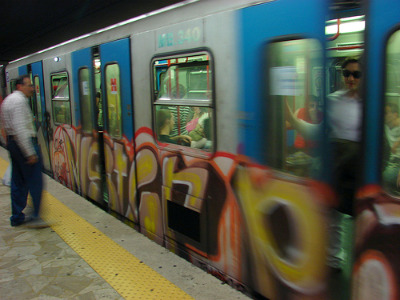
How to Use Public Transportation in Rome
There are several ways to get your body around Rome to see the sights, not to mention getting to and from your hotel or hostel in Rome . They vary in terms of cost and speed, so you’ll have to figure out which one balances the two to your satisfaction. >> Find out whether one of the Rome discount passes that include transportation will save you money on your trip.
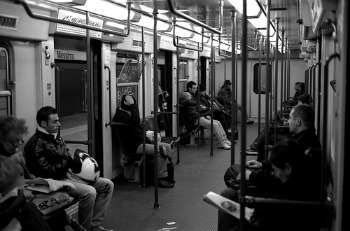
- BIG – Integrated Daily Ticket – Good for 24 hours from validation, €4
- BTI – Integrated Tourist Ticket – Good for 3 days from validation, €11
- CIS – Integrated Weekly Ticket – Good for 7 days from validation, €16
There are monthly and annual passes, too, but those are more geared toward residents. If you’re a lucky person and you’re staying longer than a week, then definitely ask about the monthly or annual tickets! All of the tickets that work on the Rome Metro also work on other forms of public transportation in Rome – the buses and the trams – so that makes it easy to switch back and forth depending on what’s close by and what’s most convenient. When riding the Rome Metro, especially when it’s busy and crowded, you’re well-advised to keep a close eye on your belongings – from your purse to your camera to your wallet. Of course, this is something you should do regardless, whenever you’re in a crowded and unfamiliar place, but it bears repeating for the subway in Rome.
Buses in Rome

You can buy bus tickets at most news stands in Rome as well as most tobacco shops, and if the bus stop you’re at is big enough there will also be automated ticket machines at the bus stop where you can buy tickets. These are the same tickets you’ll use on the Metro, so that means you can also buy them at the automated ticket vending machines in the Metro stations in Rome. Remember to validate your ticket when you board the bus – there are usually machines at the front and the back of the bus, and sometimes in the middle as well – by inserting the ticket into the machine until it gets a date/time stamp. These stamps not only indicate what time you got on the bus (and started the clock ticking on your 75 minutes, if you’re using a single-use ticket), they also cleverly tell you what time that ticket expires. You’ll hear about people who buy one ticket and never bother to validate it, playing the “dumb tourist” card if/when they get stopped by the transportation police, but if you risk it and you get caught you could be facing a €50 (or more) fine. In my opinion, it’s just not worth the risk. Buy whatever ticket makes sense for your visit to Rome, and validate it when you board the bus. The same safety warning I mentioned above about riding Rome’s Metro also goes for the buses, especially the tourist routes and especially at busy times. For more information, check the official site of the Rome transportation company , ATAC. And the folks at Venere have a few tips about bus travel in Rome, too.
Trams in Rome
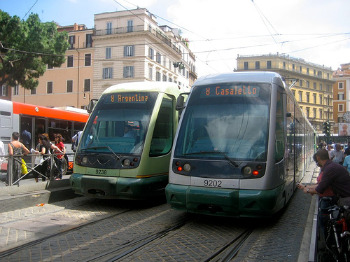
Taxis in Rome
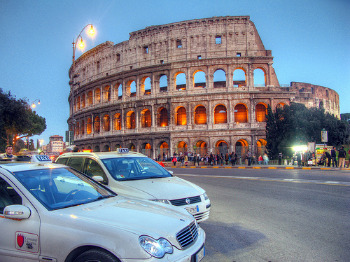
Rome Travel Guide
Courtesy of joe daniel price | Getty Images

Getting Around Rome
The best way to get around Rome is on foot. And because many of the best attractions are clustered together in traffic-free zones, walking makes the most sense. However, some places, like Vatican City, are pretty far from the central historic district, necessitating the use of the metro or a taxi. A nonstop express train (the Leonardo Express) can take you from the Leonardo da Vinci-Fiumicino Airport (FCO) to the Rome Termini railway station in a little more than 30 minutes; one-way tickets cost 14 euros (about $17). Buses are also available, but these aren't recommended because of crowded conditions aboard and heavy traffic outside. If you must bring a car to Rome, you should park it as soon as possible once you enter the city limits. Otherwise, you'll find heavy traffic, impatient drivers and pedestrian-only areas make driving around virtually impossible.
Explore More of Rome

Things To Do

Best Hotels

You might also like

# 2 in Best Honeymoons in Europe for 2024

Tuscany, Italy
# 1 in Best Wine Vacations

Amalfi Coast
# 1 in Best Honeymoons in Europe for 2024
If you make a purchase from our site, we may earn a commission. This does not affect the quality or independence of our editorial content.
Recommended
The 18 Best Napa Valley Wineries to Visit in 2024
Lyn Mettler|Sharael Kolberg April 23, 2024

The 25 Best Beaches on the East Coast for 2024
Timothy J. Forster|Sharael Kolberg April 19, 2024

The 50 Best Hotels in the USA 2024
Christina Maggitas February 6, 2024

The 32 Most Famous Landmarks in the World
Gwen Pratesi|Timothy J. Forster February 1, 2024

9 Top All-Inclusive Resorts in Florida for 2024
Gwen Pratesi|Amanda Norcross January 5, 2024

24 Top All-Inclusive Resorts in the U.S. for 2024
Erin Evans January 4, 2024

26 Top Adults-Only All-Inclusive Resorts for 2024
Zach Watson December 28, 2023

Solo Vacations: The 36 Best Places to Travel Alone in 2024
Lyn Mettler|Erin Vasta December 22, 2023

26 Cheap Beach Vacations for Travelers on a Budget
Kyle McCarthy|Sharael Kolberg December 4, 2023

The 50 Most Beautiful White Sand Beaches in the World
Holly Johnson December 1, 2023

Awesome, you're subscribed!
Thanks for subscribing! Look out for your first newsletter in your inbox soon!
The best things in life are free.
Sign up for our email to enjoy your city without spending a thing (as well as some options when you’re feeling flush).
Déjà vu! We already have this email. Try another?
By entering your email address you agree to our Terms of Use and Privacy Policy and consent to receive emails from Time Out about news, events, offers and partner promotions.
Love the mag?
Our newsletter hand-delivers the best bits to your inbox. Sign up to unlock our digital magazines and also receive the latest news, events, offers and partner promotions.
- Things to do
- Restaurants
- Los Angeles
Get us in your inbox
🙌 Awesome, you're subscribed!

20 travel tips every first-time Rome visitor should follow
Whether you are a Roman novice or expert, these travel trips for Rome should be followed at all times

Don’t get us wrong, Rome is a very friendly place. But it’s not always the easiest to navigate. And unless you want to find yourself waiting for a coffee for three hours or queueing for the Vatican for three hours, there are some things you should know before you go.
And don’t panic. Our local writer Livia Hengel has the inside scoop on every rule, custom and hack for the big city. If you want to absolutely smash a weekend in Rome, read this list (and read it before you go. Trust us). Here is every travel tip you’ll need to do Rome as the Romans do.
RECOMMENDED: 📍 The best things to do in Rome 🍝 The best restaurants in Rome 🏛️ Unmissable attractions in Rome 🛍️ Where to go shopping in Rome 🏨 The best hotels in Rome
Livia Hengel is a writer based in Rome. At Time Out, all of our travel guides are written by local writers who know their cities inside out. For more about how we curate, see our editorial guidelines .
An email you’ll actually love
Travel tips for visiting Rome

1. Don’t order a cappuccino after noon
You may or may not have seen this one crop up on TikTok from time to time. But basically, don’t you dare order a cappuccino after noon. Cappuccinos are thought of as heavy drinks more suitable for breakfast, and paired with a cornetto. If you’re craving one in the afternoon, order a caffè macchiato instead.

2. …But gelato is acceptable any time, any season
Great news for gelato lovers. You can order one of these bad boys anywhere, anytime. Before lunch, after lunch, whatever you desire. The gelato world is your oyster in Rome, and their flavours change seasonally, so you’ll never get bored. Think ciccolato fondente (dark chocolate), pistacchio and mandorla (almonds). Delicious.

3. Buy Vatican tickets online to skip the line
Housing one of the world’s greatest collections, the Vatican Museums are one of Italy’s most popular attractions, visited by over 5 million people annually. Though you’ll inevitably face a crowd, you can skip the long lines by purchasing your museum tickets on the Vatican website. The extra Euros for booking online are well worth the time you’ll save by not waiting in line.

4. Free museums on first Sundays
Rome’s state-owned museums, galleries, archaeological sites, parks and gardens are free on the first Sunday of each month, so be sure to drop by and soak in some art if you’re in town these days. Lines quickly form outside the main attractions, so plan to show up early or visit a lesser-known destination (warning: you’ll still need to pay a fee to browse through special exhibitions).

5. Note museum closures
Many of Rome’s city and state-owned museums, like Galleria Borghese and Palazzo Barberini, are closed on Mondays, so plan your schedule accordingly. The Vatican Museums are closed on Sundays instead, so they’re very crowded on Saturdays and Mondays; if you can, try to visit Tuesday through Friday.

6. Order coffee at the bar
Have you guessed the Italians are quite particular about their coffee yet? Coffee etiquette actually makes up a fair few of the biggest culinary crimes you can commit in the capital. You might notice people in Rome tend to order an espresso and drink it standing up, before even leaving the bar. That’s the way things are done. Italians don’t order coffee from the table and have it brought to them, and in fact, that’ll likely slap you with service charge and almost double your bill. Do as the Romans do, and neck that espresso before you go anywhere.

7. Buy bus tickets ahead of time
Rome’s public transportation leaves much to be desired, but if you need to take a bus in the city centre, stock up on bus tickets ahead of time because you can’t buy them on the bus. You can buy tickets at any tabaccheria in the city, little convenient shops that are designated with a large T. Tickets are €1.50 each, or opt for a 24-hour, 48-hour or weekly ticket for a discounted price. Tickets are valid for all forms of public transportation in Rome (bus, metro, tram and local train).

8. Take your bus ticket straight to the beach
Speaking of public transportation, your €1.50 ticket is also valid on the local commuter trains in Rome, including a line that goes straight to the beach. You can catch a train at the Piramide Metro Station that will take you directly to Ostia Lido, Rome’s local beach. Although it’s not the most glamorous beach near Rome, Ostia is perfect for an inexpensive day trip, with some sunshine and fresh seafood.

9. Dress modestly in church
Rome has over 900 churches that house some of the city’s most beautiful works of art, so don’t miss stepping inside to marvel at their treasures, whether you’re devout or not. Just be sure to dress appropriately to enter these holy spaces: women’s shoulders should be covered, and skirts should hit at or below the knee, while men should wear pants or shorts that extend to the knees. Linen pants are a great option for the summer, and a scarf is a perfect last-minute cover-up if you’re wearing a tank top.

10. Watch your bags
Always be mindful of your bags on public transportation and around key tourist attractions. The city is safe, but petty crime is rampant, especially on crowded buses and metros. Thieves in Rome are stealthy, so always keep your bags zipped and held in front of you; wallets should ideally be tucked in your inner jacket pockets. Some thieves also snatch bags, so keep them in close reach at all times.
[image] [title]
Discover Time Out original video
- Press office
- Investor relations
- Work for Time Out
- Editorial guidelines
- Privacy notice
- Do not sell my information
- Cookie policy
- Accessibility statement
- Terms of use
- Modern slavery statement
- Manage cookies
- Advertising
- Time Out Market
Time Out products
- Time Out Worldwide
- Android app
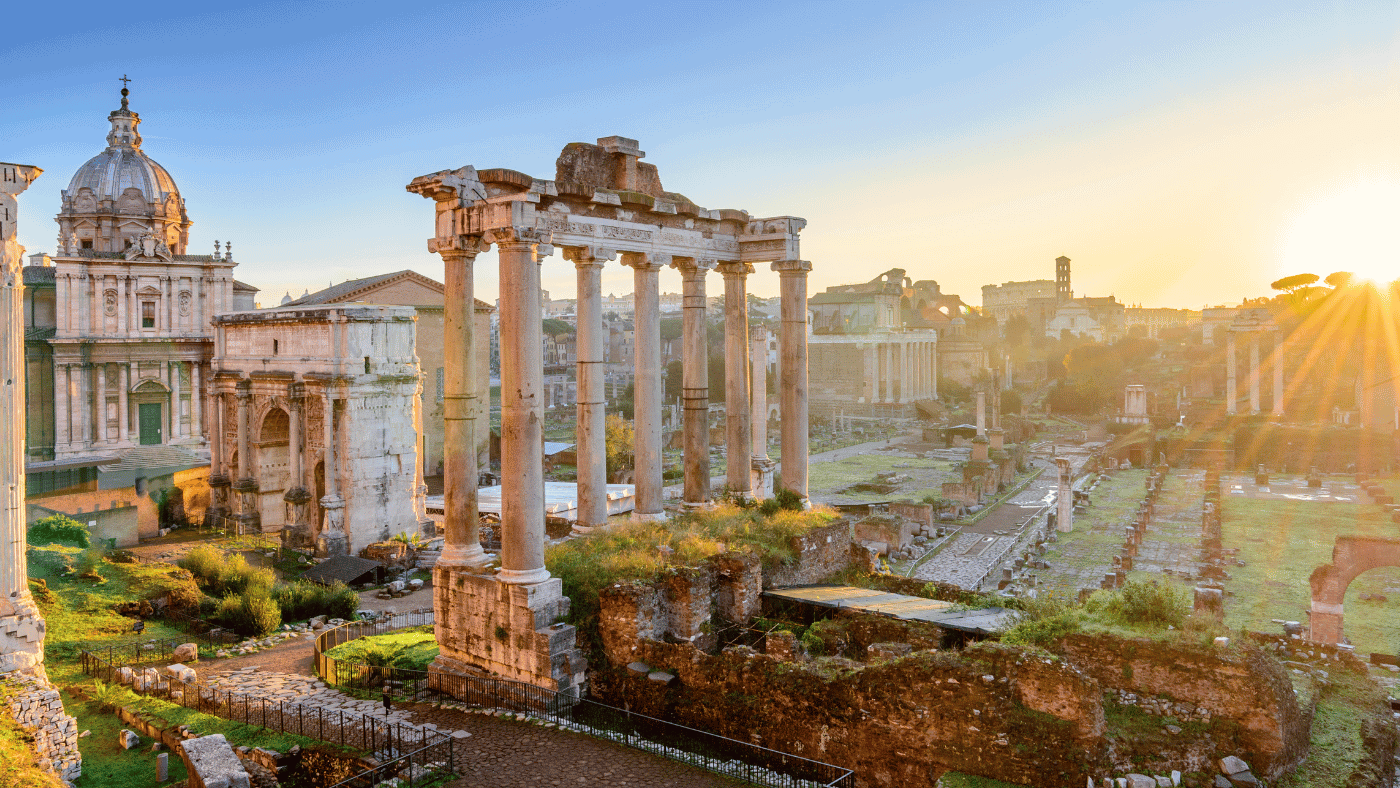
How to Get Around Rome: A Guide to Navigating the Eternal City
Rome, the Eternal City, is a wondrous destination for travelers who want to experience the fusion of ancient history and modern life. Whether visiting the Colosseum or Vatican City, there’s a rich array of sites to see. Navigating this beautiful city can be overwhelming, but with the following guide, you’ll have a better understanding of Rome’s transportation system and public transportation network, making your trip smoother and stress-free.
Understanding Rome’s Transportation System
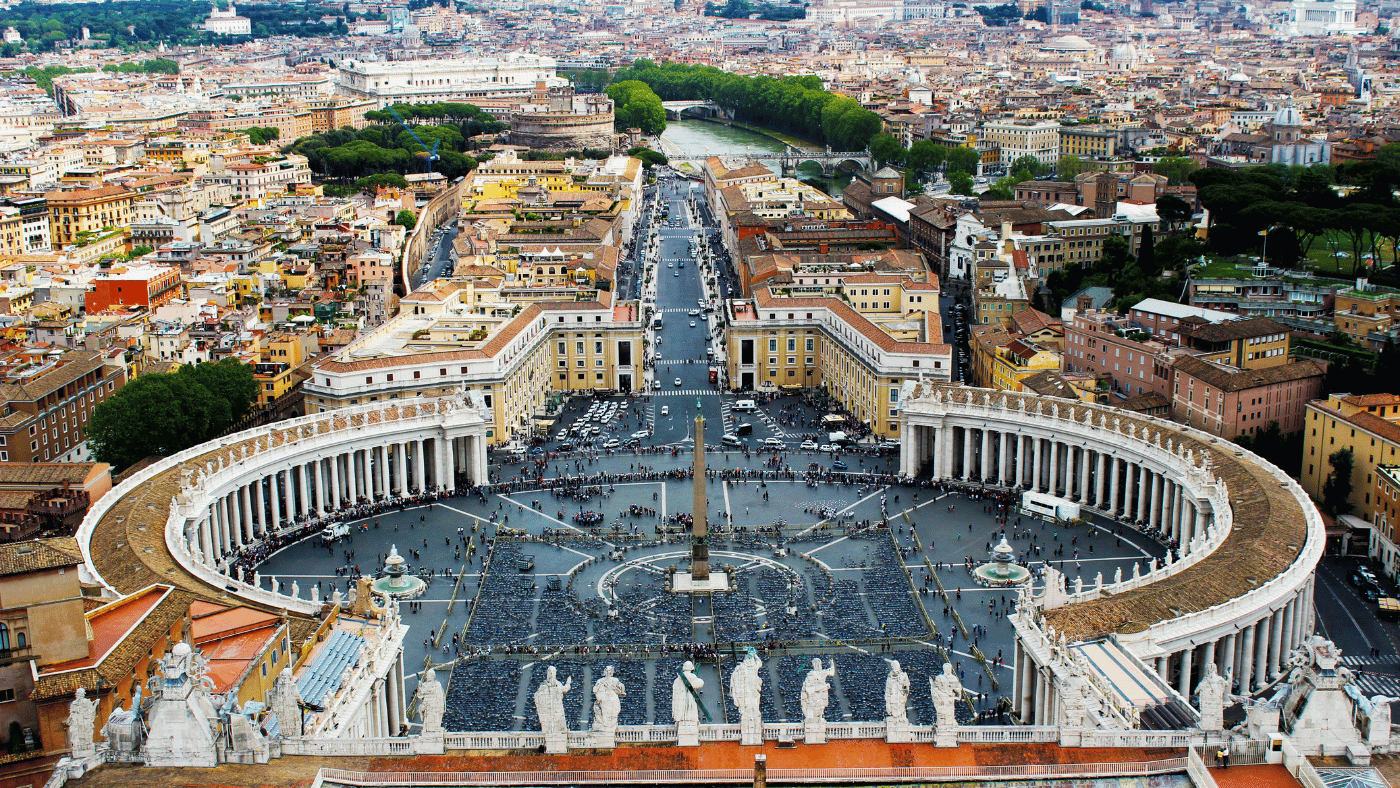
Rome is a bustling metropolis filled with history, culture, and delicious food. To fully immerse yourself in everything the city has to offer, it’s important to understand the various public transportation options available to make getting around efficient and cost-effective. The most popular modes of transportation for Romans and tourists alike are public transportation, taxis, ridesharing services, bicycle and scooter rentals, and walking.
Let’s take a closer look at each mode of transportation and what you need to know before using them.
Public Transportation Options
The most commonly used public transportation options in Rome are buses, trams, and the metro system. Buses and trams operate from 5:30 am to midnight, and buses and trams run on an extensive network that covers most parts of the city. Additionally, the metro system operates three lines in the city and runs from 5:30 am to 11:30 pm.
It’s important to note that the public transportation system in Rome can be crowded, especially during peak hours. If you’re traveling with luggage, it’s best to avoid using public transportation during these times, as it can be difficult to navigate with bulky bags. Also, be sure to validate your ticket before boarding any public transportation to avoid fines.
Taxi and Ridesharing Services
For those who prefer a more direct form of transportation, taxis and ridesharing services are readily available in Rome. Taxis are a bit more expensive but offer a comfortable ride, often with air conditioning. Ridesharing services, such as Uber and Lyft, are also available and can be significantly cheaper than taxis.
It’s important to note that taxi drivers in Rome can be notorious for overcharging tourists, so be sure to agree on a fare before getting in the car. Ridesharing services, on the other hand, offer upfront pricing, so you know exactly how much you’ll be paying before you even get in the car.
Bicycle and Scooter Rentals
For those who want a bit more adventure while experiencing Rome’s beauty, there are many bicycle and scooter rental services. This mode of transportation is eco-friendly, and you can explore the city at your own pace. But be cautious – riding in Rome can be dangerous, and it’s important to wear a helmet and follow all traffic laws.
Additionally, be aware that some areas of the city are not bike-friendly, and you may need to dismount and walk your bike through certain areas. It’s also important to note that scooter rentals require a valid driver’s license, and you must be at least 18 years old to rent one.
Navigating Rome on Foot
Walking is one of the best ways to experience Rome’s beauty while getting around. It’s an eco-friendly, cost-effective way to traverse the city’s winding streets. Walking is also an excellent way to discover hidden sites and discover local gems.
However, keep in mind that Rome’s streets can be uneven, and some areas may require walking up steep hills or stairs. It’s also important to wear comfortable shoes and stay hydrated, especially during the hot summer months.
Overall, Rome’s transportation system offers a variety of options for getting around the city. Whether you prefer public transportation, taxis, ridesharing services, bicycle and scooter rentals, or walking, there’s a mode of transportation that will suit your needs. Just be sure to plan ahead and take necessary precautions to ensure a safe and enjoyable experience.
Rome’s Public Transportation Network
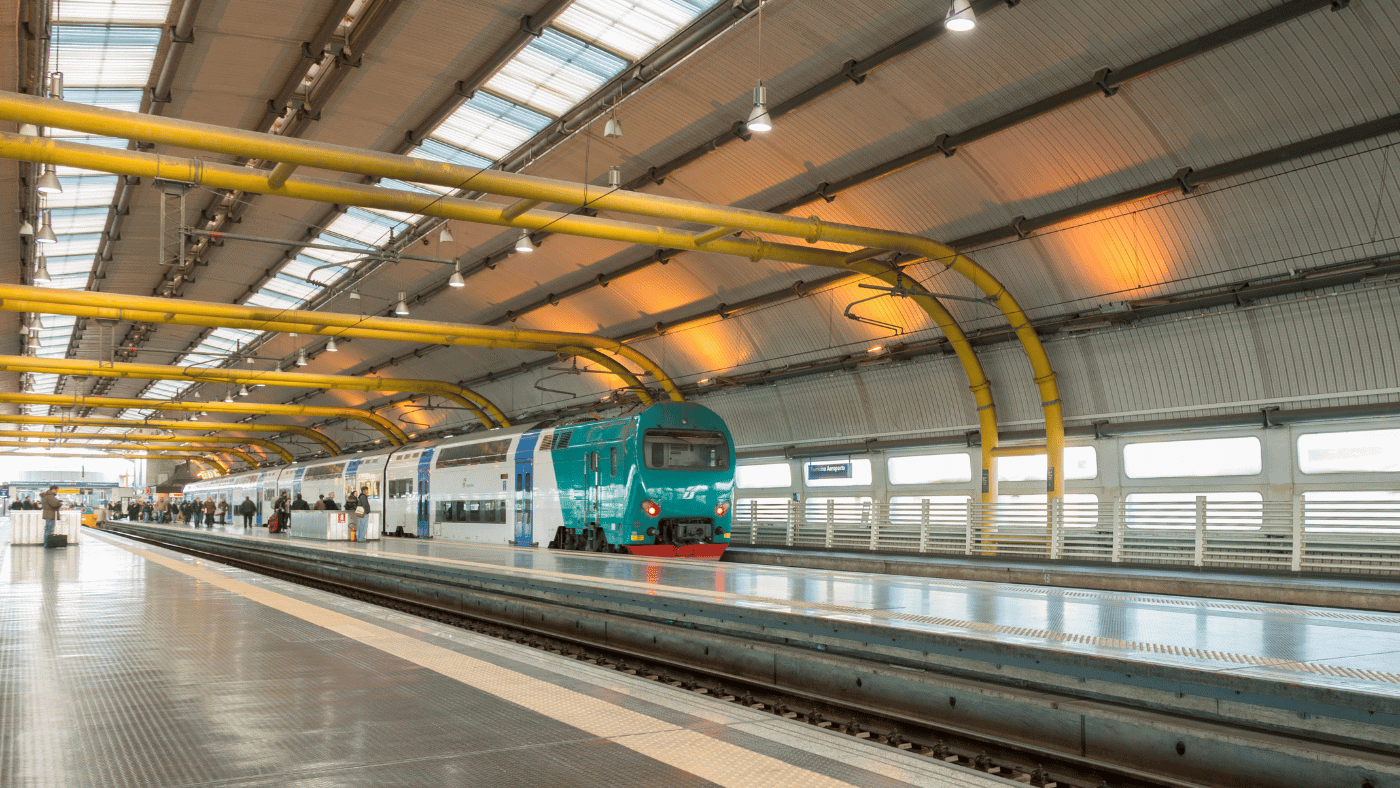
Transportation network in Rome is modern, and the Metro, tram, bus and train lines cover all parts of the city. Understanding each system’s advantages and disadvantages can help you plan your daily commutes and choose the best transport options that meet your needs.
Rome Buses and Trams
Buses and trams are the most common mode of public transportation in Rome. Bus routes serve the entire city, with many Metro stations and bus terminals being the main departure points. Buses are available in different sizes and comfort levels, ranging from smaller buses to tourist buses. Trams operate on six different lines, with the terminus located in the heart of the city.
Rome Metro System
The Rome Metro system is the most efficient, clean, and cost-effective mode of public transportation in all of Rome. It has three lines and covers all the major landmarks, including the Vatican, the Colosseum, the Spanish Steps , and more. The metro runs every five minutes and operates on a pre-paid ticket system.
Rome Regional Trains
Rome is an important transportation hub and has many national and international connections via train services. Local trains are a useful form of transportation to explore areas outside Rome’s city limits. Local trains connect to different towns and cities, tourist destinations , and eye-catching countryside sights.
Rome Tickets and Pricing
The public transportation system in Rome operates on a ticket-based system. Tickets are available at vending machines, tobacco shops, and newsstands. The price of a single ticket is €1.50, and it is valid for 100 minutes, including any bus transfers. Alternatively, daily and weekly passes are available for frequent travelers or for those in Rome for a more extended period.
Tips for Using Taxis and Ridesharing Services
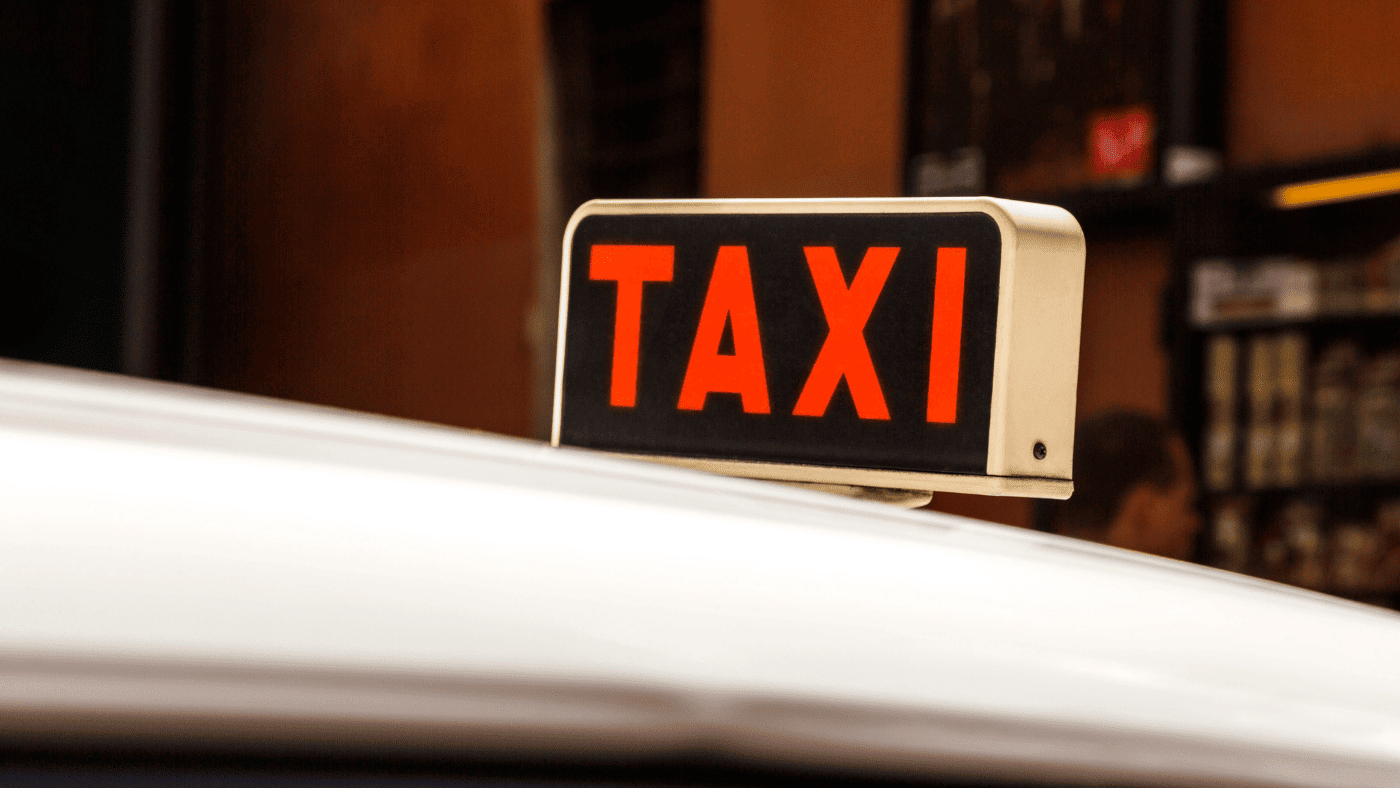
Taxis and ridesharing services are an excellent option if you’re short on time or want to avoid the crowds. However, it’s essential to know the pricing, safety, and etiquette of using these services in Rome.
Finding a Taxi in Rome
There are taxi ranks throughout the city, including near major metro and train stations. Fares are metered and regulated by the municipality. However, there are additional charges for luggage, travel outside the city limits, and late-night travel.
Using Ridesharing Apps
Ridesharing apps are also an excellent alternative to taxis in Rome. Uber, Lyft, and other services are widely available and easy to use. These services can be less expensive than taxi services and offer safety features such as real-time location tracking.
Estimated Costs and Payment Options
The estimated cost of a taxi ride in Rome ranges from €5 to €20, depending on the distance traveled and the time of day. Payment options are cash, credit card, and contactless options. Ridesharing apps usually charge a base fee and then a per-kilometer charge. Payment is made via the app, which saves the need for cash.
Safety Tips and Etiquette
For safety reasons, ensure you only take licensed taxis and ensure that you sit in the backseat. Additionally, ridesharing services are recommended for solo travelers as they provide transparency in fare costs and safe navigation.
In conclusion, traveling around Rome can be both overwhelming and exciting. But with this guide’s help, you’re now equipped with the knowledge to navigate the city’s transportation system. Follow these guidelines, and you should have a stress-free journey, whether you want to explore Rome on foot, bike, scooter, public transportation, or taxi.


How to Buy Pantheon Tickets in Rome

How to skip the line at St Peter’s Basilica

How to skip the line at the Borghese Gallery

How to skip the line at the Colosseum – 2024

How to skip the lines at the Pantheon

How to skip the lines at the Vatican – 2024

Should I get a Roma Pass?

The best time of day to visit the Colosseum

The best time of day to visit the Vatican Museums | Opening hours 2024

The cheapest way to skip the lines at the Vatican | 2024

What are the official websites to buy tickets for Rome’s major attractions?

Vatican and Sistine Chapel tickets

How to get past Colosseum ticket buying problems – 2024

How do I travel to Rome from Fiumicino airport? 2024

How do I get into Rome from Ciampino Airport? 2024

How do I book train tickets around Italy?

Hop-on-hop off bus tours

August 15th is Ferragosto, a national holiday, and many things in Rome are shut

How do I buy a slice of pizza in Rome?

How do I buy cigarettes in Rome?

How do I mail a letter in Rome?

How do you use the bidet when on vacation in Rome?

How much cash to bring with you to Italy

How to buy vape supplies, e-cigarettes and juice in Rome

How to cross the street in Rome (and live to tell the tale!)

How to get English-speaking medical treatment in Rome

How to order a coffee in Rome

How to visit Rome with children

How to visit Rome’s Olympic Stadium

How to visit the mosque in Rome

The difference between St. Peter’s Basilica, the Sistine Chapel, and the Vatican

The difference between the Colosseum, Roman Forum, and Palatine Hill

What is the dress code in Rome?

What kind of electrical adapter do I need to bring to Italy?
What should I see if I have only one day in Rome?

Where are the best views of Rome?

Where can I buy a used bike in Rome?

Where can I find a wifi cafe in Rome to work in? 2024

Where can I run in Rome?

Where’s the bathroom in Rome?

12 reasons you shouldn’t drive a car in Rome

Avoid common problems with Rome’s public transport

Can I travel to Rome at the moment?


Can I use Uber or Lyft in Rome? 2024

Getting to and from Rome Ciampino airport at night

How do I get to and from Fiumicino Airport (FCO) at night?

How to buy a ticket for Rome’s public transport system using an app

How to get from Rome’s Civitavecchia port into the city

- How to not get pickpocketed

How to use Rome’s public transportation network – with map – 2024

Rome’s “secret” train that gets you across the city in 20 minutes – for only 1 euro

Scooter sharing: renting an electric scooter in Rome
The best way to get from the airports into Rome (and back again)

Aperitivo: Rome’s low-cost drink and food extravaganza

Become a Spritz Specialist and a Pasta Pundit

Beer in Rome

Do I need to tip in Rome?

Food tour in the heart of Rome

Hooch and History: the Tipsy Tour of Rome

How to avoid being ripped off at a tourist trap restaurant in Italy

How to cook perfect pasta

How to eat gluten free in Rome

How to eat vegan and vegetarian in Rome

How to use an Italian stovetop coffee pot

Pasta and Tiramisu class

The truth about sandwiches in Rome

What to order in a restaurant in Rome

What’s the difference between a Ristorante, an Osteria, and a Trattoria?

Why you never need to buy water in Rome
- Where to stay in Rome

Colosseum Arena tour with Forum and Palatine Hill

How to visit the Coppedè Quarter in Rome

Off the beaten track to see the beaten track: Via Flaminia Antica

Orientation tour: self-guided piazza walk

Rome Vacation Tips Eternal City Night Walk

Rome Vacation Tips guided walk of the Baroque City

Rome Vacation Tips tour of the Colosseum, Forum, and Palatine Hill

Rome Vacation Tips VIP Vatican Tour

Self-guided walking tour around the ancient city

Terrifying ghost tour of haunted Rome

The Popes, Domes, and Tombs Tour of St Peter’s

Where can I see Caravaggios for free in Rome?

Basilica di San Clemente: the most interesting historical site in Rome

Guided Modern Architecture Tour Of Rome

Guided Street Art Tour in Rome

Rome’s other “Jewish ghetto”

San Lorenzo in Miranda – a church in a temple

The optical illusion of St Peter’s Basilica from Via Niccolò Piccolomini

Villa Torlonia: ersatz architecture and Mussolini’s home in Rome

Where can I see street art in Rome?

Can I splash in the fountains in Rome?

How to avoid the African bracelet scam

How to get a Covid test in Rome with English language certificate – 2024 update

Special rules for visiting the Vatican during the coronavirus pandemic

What to do in Rome in an emergency

What’s with all the trash in Rome?

Why do shopkeepers in Rome never seem to have any change?
- Book train tickets around Italy
- Day trip to Tuscany
- Day trip to Pompeii
- Things to do in Florence
- Things to do in Milan
- Things to do in Naples
- Things to do in Tivoli
- Things to do in Venice
- How to Vacation in Dublin
- How to vacation in Istanbul
How to get around Rome by public transport
One very cheap fare or transport card allows you to use almost all means of public transport in Rome with the exception of taxis and airport transport. Buses, subway trains, trams (streetcars), and light rail are operated by the same company called ATAC. You can hop on any of their transport using the same ticket. Here’s how.
Where can I buy single tickets for the Rome public transport system?
Tickets are available from machines at all Metro stations. These machines allow you to select an English Language interface (shown by the British flag not the stars and stripes). They take euro bills and coins, but not credit cards even though many of them have a credit card slot. But beware: they never dispense more than €6 in change ( resto )! The machine will happily eat your €20 bill but won’t give any of it back until you’ve bought €14 worth of tickets.
However recently many of the machines won’t accept bills of more than €10. Finally the depressingly common fuori servizio or guasto signs both mean ‘out of order’. All is not lost though: you can also buy these tickets in most tabacchi – tobacco stores, distinguished by the “T” sign outside. Go to the cash register and ask for un biglietto (oon beel-YET-oh) or “ X biglieti ” ([number] beel-YET-ee”) to get the standard 100-minute ticket (below).
Things are changing though: new, orange ticket machines are being rolled out slowly throughout the Metro network that take credit cards and dispense all types of tickets.
Can I use contactless payment in Rome’s public transport system?
Yes, but right now only on the Metro. All turnstiles are fitted with a contactless payment tab that will accept contactless credit and debit cards, as well as NFC-enabled phone payment systems (i.e. G-Pay and Apple Pay).
Tapping your payment method will automatically debit your account by €1.50, granting you 100 minutes’ use of the transport system including one Metro ride.
ATAC claims it will roll out the same “tap-and-go” system throughout the entire system, including trams and buses, but until then you will need a ticket to board these means of transport (unless you’ve already tapped into the system in a Metro station).

Is there an app that I can use to buy tickets?
The “ MyCicero ” app allows you to buy tickets for the Rome transport system.
How to buy a ticket using MyCicero…
Can I get a city card that includes the Rome public transport network?
The most famous city card is the Roma Pass . This gives unlimited access to the city’s public transportation system for 2-3 days, two free entries to major sights, and discounts to museums, though not to the Vatican. However this option does not include airport transfers, the card has to be physically picked up from an office, and some visits still have to be booked in advance. Read more…
What lines can I use my transport ticket or card on?
Lines shown below can all be accessed with the ATAC tickets mentioned below. This includes all the way to the beachside town of Ostia Lido – you can honestly get there for €1.50 each way! Note for the gray lines on the map – commuter rail lines – stations in red indicate the furthest extent of ticket validity: i.e. you can’t use the standard ticket to travel beyond the station in red; after that you would need a train ticket purchased in the originating station. You can also use your ticket on the “FL” main train lines that cross the city , but again only within city limits.
Does Rome’s public transport go to the airports?
Unfortunately the network does not extend to the main Fiumicino Airport. To get to FCO you must take a train or private transport. Read more here…
Ciampino Airport is in fact served by the public transport network, but it is a slow and tricky journey involving bus and Metro. Read more here…
How reliable is public transport in Rome?
It’s not always reliable, but public transport in Rome is cheap and there’s a lot of it. The bad news is it can be slow and subject to delays and strikes .

How do I use the metro in Rome?
Rome’s Metro is simple. It’s just a big X that meets in Termini. There are two fully viable lines: Linea A (red) and Linea B (blue). Linea B splits at Bologna and either goes to Rebbibia or Jonio. Both lines are rather superannuated. The third line, Linea C (green) is partially constructed.
Modern, efficient, clean driverless Linea C runs from Montecompatri way outside the city to join the rest of the network at San Giovanni where you currently have to leave one part of the station and enter another part (be reassured that your single-use metro ticket will allow you to do this) but will eventually cross the entire city.
Locals’ tip: the new part of San Giovanni station has a fantastic display of some of the thousands of artefacts that were dug out of the ground during its construction .
How early/late does Rome’s Metro run?
The first train from each end of the metro lines (see map) is 5.30am every day. The last train leaves from the ends of the metro at 11.30pm on weeknights, and 1.30am on a Friday and Saturday night. That means if you’re in the center and it’s just after 11.30/1.30 you may still be able to catch your metro.
What kind of ticket should I buy to use the Rome public transport system?
There are numerous kinds of ticket available:
- 100 minutes . Probably the best value for money for individual trips, this gives you just over 1 and a half hours to use ANY means of transport mentioned above (although it only allows one ride on the Metro), for the teensy price of €1.50. Note that these are the standard tickets available from the tabaccaio .
- Day ticket . Not recommended. It costs €7 and expires at midnight of the day you buy it. It’s only good value if you take at least five journeys more than 100 minutes apart, which is probably unlikely.
- 48 hour . €12.50. Also poor value: see ‘day ticket’ above.
- 72 hour . Again, a false economy. If you need transport for three days and are sightseeing too then it’s probably worth considering a Roma Pass instead.
- Weekly ticket . Bad value: the price of €24 means you need to make 16 journeys in seven days in order to break even. It expires at midnight on the seventh day, so unless you buy one early in the morning you are automatically cheated out of half a day.
In all of the above ‘daily’ cases, unless you’re going far and wide with many journeys, it’s probably far more cost-effective to fill your wallet with a small stack of 100-minute tickets since they don’t expire and can be rolled over to the next day.
- Monthly ticket. The tessera mensile is amazingly good value at only €35 for unlimited travel. If you’re staying for a while it’s definitely worth considering. However these cards only run from the first day of the calendar month to the last, so if you arrive mid-month you can still buy one, but should probably consider other options. Available from ticket offices in major stations.
- Roma Pass . If you’re touring Rome for three days or so, this is fairly good value. It provides public transport for two or three days ( not 72 hours: it expires at midnight on the third day after you buy it), as well as free entrance to two museums, but not including the Vatican. Read more.. .
How do I validate my ticket?
When you board the Metro or commuter train, you pass through a turnstile that will automatically validate your ticket for you (it prints the expiry time and date on the back of the ticket using the word “scadenza”). However if you take a bus or a tram you have to do the validation yourself – if it is the first time you have used your ticket during its allotted time period. If you’ve already validated it once and it’s still valid, you don’t need to do this, and nor do you need to validate a travel pass such as the Roma Pass .
Note that travelling without a validated ticket can get you up to a €150 fine. Once you have figured out which bus or tram to take – try this website – board the bus and you will note a little blobby machine attached to a pillar at the front and back of the vehicle. Insert your ticket and it will be stamped with the expiry on the back, and you’re good to go. (If the bus is particularly crowded, and you wave your ticket and indicate the machine, the friendly Roman crowd will usually pass it to the machine for validation then pass it back to you!)How do I use the metro in Rome?
Now make sure you don’t miss out: plan your visit in advance:
| Plan your vacation
| emergency.
Read this now >
| Book your hotel
| popular articles.
- How to use Rome’s public transportation network – with map – 2024
- How to skip the lines at the Vatican – 2024
- How to skip the line at the Colosseum – 2024
| Recent articles

Related posts

Photo credit: AFP
Tickets in advance!
Because of ticket supply problems following the end of Covid restrictions, it is strongly advised that you buy tickets and tours in advance to visit attractions in Rome.
Buy your tickets now to avoid disappointment.
Rome Public Transport
Rome’s public transportation system consists of buses , trams , metro , and train lines conveniently connecting every corner of Rome.
Although Rome is a very walkable city, sometimes you need to rest your feet up or travel a little further afield. Public transport is a great, cost-effective way to get around the Eternal City – here’s what you need to know.
Types of Public Transport in Rome
For an ancient city, Rome has excellent modern public transportation.
Receive the Rome Travel Card at home
You can now receive your 72-hour Rome Travel Card (+ audioguide) via mail at home. Read more on the website of Mobizz
The metro is an efficient and cost-effective way to get around Rome, even if it isn’t the most extensive system. Rome’s metro is the smallest in Europe, but almost a million people use it daily.
There are three lines, A (orange/red), B (blue), and the smallest, C (green), but only the former two are likely to be used by visitors. You can get to the Vatican , Spanish Steps , and Colosseum easily via the metro, but it doesn’t connect to areas in the southwest of the center, making it slightly limited.
A train will arrive approximately every 5-10 minutes, from 5:30 am until 11.30 pm.
Buses are the most widespread means of public transportation in Rome, with 338 bus lines and over 8000 stops. They’re frequent, but I wouldn’t expect them to always come on time. You can reach practically every corner of the city via bus, so if you’re venturing out of the historic center, it’s likely you’ll become familiar with the system.
Hop-on hop-off buses are not part of the public transport system, so don’t expect your ticket to be usable on them.
Trams aren’t as widespread in Rome, but there is a small network consisting of 6 lines and 192 stations. It’s a smooth and quick way to travel, perhaps the most comfortable of the four types.
Both buses and trams run from 5:30 am until midnight every day, but there is a scaled-back night bus service available after these hours.
There are urban trains in Rome, besides the inter-city lines stopping at Termini. The overground trains aren’t going to be used by people wanting to travel around the historic center, but are great for reaching outer boroughs or the cruise port of Rome, Civitavecchia.
How to Use Public Transport in Rome
How to buy tickets.
Buying tickets for buses and trams in Rome is a little different to most cities in Europe and, in many ways, a bit outdated. You don’t normally purchase tickets on the bus, for example – and there’s no contactless card system as of yet – but buy them beforehand from places such as:
- Newsagents (tabaccai or bar tabacchi)
- Newspaper kiosks
- Ticket machines are located next to main bus stops and at metro stations
- Atac booths in metro stations
The Atac booths in the following metro stations sell the weekly CIS ticket and others:
- Line A: Anagnina, Battistini, Lepanto, Ottaviano/San Pietro, Piazza di Spagna , Termini.
- Line B: Laurentina, Eur Fermi, Ponte Mammolo,Porta San Paolo, Termini.
Buying tickets for the metro is very straightforward; the ticket machines are at each station, and you have to pass through a gate to enter, which immediately validates the ticket. There’s also a contactless system in place, meaning you can just tap your card when you enter and exit to pay.
For the buses and trams, however, it’s important to buy your ticket in advance from one of the places mentioned previously – you don’t want to be caught out rushing to catch a bus only to realize you forgot to buy a ticket. Many people will buy multiple single-use tickets at once for this reason (if they’re not buying a pass with a longer duration).
How to Plan Routes
It’s easier than ever to plan your route around the Eternal City. Gone are the days of staring at maps and asking for help in broken Italian – if you have a phone, you’re good to go.
Google Maps is a simple choice, as many of us already have it installed on our phones or can easily access it. You can get around Rome easily just by using Google Maps, as it will show you the quickest way to reach your destination through public transport, whether that involves a single journey on the metro or catching a bus, tram, and metro all in one trip.
It isn’t the best choice available, however, as it doesn’t give real-time updates on times and delays to the same degree of accuracy as some other apps.
Moovit is a great alternative to Google Maps, which helps you to plan your route while staying updated with any delays, while Probus Rome is another useful app for keeping an eye on time.
When on the metro, you may find it useful to have a downloaded version of the metro map. This will help you keep an eye on the number of stops left until you get off after you inevitably lose your connection to the internet.
How to Navigate the City
Using an app is the easiest way to navigate the city, but it’s important to remember just how walkable Rome is.
It’s probably not worth jumping on the metro for one or two stops, and if you’re going from the Pantheon to the Trevi Fountain or another central site, it is far quicker to walk. Public transport in the city is great whenever you need it, and it’s easy to find your way around – but don’t rely on it completely and utterly.
Rome’s Public Transport Passes and Fares
Public transport fares are very reasonable in Rome – it’s one of the cheapest ways to travel around the city.
Types of Tickets and Fares
Besides finding a place to purchase your ticket (and later validating it), you’ll find that the ticket system in Rome is actually quite straightforward. You can buy a ticket that allows you to use the bus, metro, trams, and some urban trains, rather than having to buy a separate ticket for each.
Ticket Options Available in Rome
- Single-use (BIT) ticket : usable on buses, trams, and metro lines for up to 100 minutes from the first time it is stamped.
- 24-hour ticket: unlimited use of buses, trams, and metro lines, as well as some urban train lines for ticket duration; valid from the first time it is stamped for the next 24 hours.
- 48-hour ticket: same as above, except for a validity of 48 hours.
- 72-hour ticket: useful if you want to make the most of public transport for a long weekend.
the three-day option has an alternative worth considering: the Roma Pass. Also valid for three days of unlimited travel in the city, it additionally offers entry to two sites and reduced prices on many sights, museums , theatres , and cinemas. There’s also a 42-hour Roma Pass available.
Week Pass (CIS)
Starting on any weekday, usable on buses and metro lines from the first day, it is stamped until 24:00 of the seventh day.
For a next-level tourist pass, look to the Omnia Card . It’s expensive but includes access to several popular tourist sites , as well as unlimited use of public transport for 72 hours.
Ticket Validation
Always remember to validate your ticket. There are hefty fines if you’re found to be without a validated ticket – just having an unvalidated ticket on your person often isn’t enough.
On the metro, this isn’t a concern, as you will validate your ticket by simply passing through the turnstiles. The only thing worth noting with the metro is that if you’ve bought a single-use ticket, you can swap lines, but once you have exited through a turnstile, you won’t be able to get back in on the same ticket.
For buses and trams, you will have to remember to stamp the ticket in the machine onboard to validate it. The validity will depend on your ticket type, but a standard single-use ticket lasts for 100 minutes (and you can swap buses within that timeframe). Transportation to the airport isn’t included in the travel passes.
Navigating Popular Tourist Sites Using Public Transport
Getting to major tourist sites like the Colosseum, the Vatican, and the Pantheon is simple using public transport. Remember that downloading an app like Moovit will help you plan.
You can catch a bus that will take you either right outside or very close to practically every popular tourist site in Rome, while the metro also leads to a handful of the most notable spots.
The Colosseum has a metro station, Colosseo, which is on Line B, as well as a tram stop (lines 3 or 8) and several buses that arrive just outside (including 38, 75, 175, and 271). This is also the best way to get to the Roman Forum and Monti neighborhood.
To get to the Vatican, you can catch metro Line A to Ottaviano or, again, several buses, including 62, 64, and 81. There is also an overground train that stops at the nearby train station, St Pietro, but this would be more useful for people traveling in from Civitavecchia.
Many of the other sites in Rome are very close to one another – the Pantheon, Trevi Fountain, and even the Spanish Steps are within easy walking distance of each other. You can catch metro Line A to Spagna station for the steps and walk down to the others from there. A few buses that stop near the Pantheon are 51, 60, and 62, but you should check an app for the best option.
Keep an eye out for the bus 40 Express, which is a special bus for tourists going through most of the famous sights:
- Vatican area and St.Peter’s Basilica – stop Borgo Sant’Angelo (beginning/end of the line)
- City center (Pantheon, Spanish Steps, Piazza Navona , Trevi Fountain) – stop Piazza Argentina
- Colosseum (Imperial and Roman Forum) – stop Piazza Venezia
- Termini Train Station (beginning/end of line)
Sometimes it’s better to walk if places are close to one another. Equally, if you’re hoping to avoid crowds – for example, if you’re going from the Colosseum to the Spanish Steps – public transport will allow you to skip the busy streets.
Best Times to Use Public Transport in Rome
Everyone knows that rush hour is a less-than-ideal time to travel, wherever you are. Rome is no different, so the mornings and evenings around the typical working day will see buses, trains, and all public transport rammed full of commuters.
An app like Moovit can give you updates on how crowded a train or bus is, making it a useful tool for avoiding the busiest periods. Generally, though, any time outside of these commuter hours is fine to use public transport – except perhaps in mid-afternoon in the height of summer, when these buses and trains tend to get very hot.
Accessibility and Inclusivity
Public transport in Rome is relatively accessible, though some modes of transport are better than others. The buses are the best option for disabled passengers, with 98% of the fleet equipped with a boarding platform and wheelchair area. Newer buses are also equipped with next-stop announcements to aid the visually impaired.
Trams and the metro are a bit more mixed in terms of accessibility. Line B is accessible, but Line A is less so: stops Spagna, Barberini, Repubblica, Vittorio Emanuele, and San Giovanni all do not have lifts or stair lifts connecting with the platforms. 70% of trams have a platform-level floor to ease boarding, but many have steps instead.
The trains of the Termini-Centocelle line are also not accessible to passengers with reduced mobility, though there are some buses that run the same route.
Parents with strollers will also want to avoid the metro where possible or use a sling to carry small children as it can get quite crowded. Buses are a better alternative.
Benefits of Using Public Transport in Rome
While not always the most luxurious way to travel, there are some great benefits to using public transport in Rome:
- Cost-effectiveness – besides walking, this is by far the cheapest way to travel around the city.
- Convenience – you can get pretty much anywhere in Rome with public transport, as you’re never too far from a bus stop or station.
- A time-saver – the metro comes regularly and skips all the traffic on the roads. The same trip in a taxi would take much longer.
- The environmentally -friendly way to travel – public transport is more eco-friendly, making it the greener choice.
Buses , trams , the metro (a subway system), and trains are all available in Rome.
You purchase tickets from any Tabbachi shop (newsagents), newsstands, Atac booths in metro stations, and ticket machines, which can be found at metro stations and larger bus stations. The ticket in Italian is biglietto .
Yes, besides the 24, 48, and 72-hour passes, there is a weekly pass. Limitless use of public transport is often a feature of tourist passes , including the Roma pass .
Download an app like Moovit to help you plan your route, see live times, and know when transportation is crowded.
The peak times are similar to most countries: morning and evening when commuters are traveling to and from work. Avoid traveling between 8 and 9 am and 5 and 6 pm when possible; use an app to see live updates on passenger density.
The options aren’t fantastic, but the buses are generally accessible. 98% of buses are equipped for wheelchair users. Metro Line B is another option, but Line A should be avoided.
Like any major city, you should have your wits about you in Rome and on public transport, as there is always a slight risk of theft. Keep your valuables in a zipped cross-body bag to avoid pick-pockets.
Getting Around Rome: What You Need to Know

Alexander Meddings
Verified writer.
- Write an email
PUBLISHED ON Apr 3, 2023

GUIDED TOUR From €395.00
Rome Golf Cart Tour See all experiences
Exploring Italy’s capital might conjure up images of Audrey Hepburn and Gregory Peck cruising the Eternal City on a Vespa. But the reality of getting around Rome is very different.
Rome is the biggest city in Italy, covering 496 square miles and incorporating 4.5 million residents. Stretching from the coastline of Ostia in the southwest to the foothills of Tivoli in the northeast, the Italian capital is a big beast to behold, and an even trickier city to cross.
Luckily, Rome’s city centre is quite compact (not surprising given it took shape nearly 2,000 years ago). You can walk from the Vatican to the Colosseum in under an hour; Termini train station to the Roman Forum in 30 minutes; and the Trevi Fountain to the Pantheon in the time it takes to devour a gelato.
Most of Rome’s main sites are connected by ATAC ‘s 24/7 bus, tram and metro service. But in today’s world of Uber, apps, and car shares, getting around Rome has never been so easy. Here’s all you need to know for exploring the Eternal City.
Getting around Rome with public transport
The best way to explore Rome is on foot . No matter how much you have planned, leave time to lose yourselves among the pock-holed ancient temples, stunning baroque churches, and busy aperitivo bars of the historic centre. Or even better – join us on a walking tour to get your bearings and see Rome’s must-see sites.
If walking isn’t your thing or you’d rather conserve your energy for the museums, your best options are to take buses, metros, trams or trains. Tickets can be purchased from tabaccherie (tobacconists), edicole (newspaper shops), ticket machines inside the stations or through the MooneyGo app and cost €1.50 for 100 minutes.
→ Download MooneyGo to purchase all public transport tickets in advance
Please be aware that tickets must be validated before travelling otherwise you risk fines of €50 if paid on the spot or €100+ if deferred. Twenty-four, 48-hour and 72-hour tickets are active from the time of the first validation.
Validating electronic tickets is easy. Just feed them through the barriers at the metro station or insert them into the machines in train stations or against the machines aboard buses and trams.
You can also tap your debit or credit card against the ticket machines on most modern buses. Just give it to officials if they come around to check.

Getting around Rome by bus is the best way to travel from A to B while getting your bearings. The city is well-serviced 24/7 with Roma Termini and Piazza Venezia acting as the central hubs.
Buses can get pretty packed, especially during rush hour. So if you value personal space at a premium, plan your journey times accordingly. Remember to validate your paper tickets using the machines when you step on the bus or via the app if you’ve purchased them virtually, and make sure you keep hold of them as officials do come around and check.
Taking the metro is usually the quickest way to cut across the city. Rome’s metro system consists of three lines (or two and a half, if we’re being honest) – A, B, and to a certain extent C.
Line A runs from Cornelia and the Vatican (Cipro / Ottaviano) in the northwest to Cinecittà and Anagnina in the south. Take Line A to reach such sites as the Vatican, Borghese Gallery, Spanish Steps, and Via Appia . Line B runs from Laurentina in the south to Rebbibia in the northeast. Take Line B to reach such sites as Testaccio, Circus Maximus , and the Colosseum. You can change lines at Termini .
Line C has been in construction since what seems like the Age of Augustus. You can join it via Metro San Giovanni on Line A and use it to head east. (Though apart from the trendy, studenty area of Pigneto there’s not a whole lot worth checking out).
Rome’s tram network serves two main purposes: connecting Trastevere to Piazza Venezia and joining the neighbourhoods of San Lorenzo (near Termini), the Colosseum, Circus Maximus, Testaccio, and Trastevere. You’ll probably only ever use it when getting to/from Trastevere, where there’s plenty to see , to the bus terminal of Piazza Venezia in the shadow of the Altar of the Fatherland .
If you’re staying near Roma Termini, Roma Tiburtina or Roma San Pietro, taking the train might be the best way of getting around Rome.
Guide to Private Transport and Sharing Apps
If you don’t want to break the bank by taking Uber and taxis, and risk getting caught up in crawling Roman traffic, your best bet is to check out Rome’s vehicle-sharing options.
Rome’s centre is well serviced by bikes, e-scooters, and motor scooters you can rent. It works by downloading the app of the respective brand, submitting an ID and a payment form, and then paying per minute or by purchasing a discount package. Download the app Free Now to find your nearest vehicle.
A word of caution.
Helmets are not provided with bike and e-scooter shares, but if you are planning on renting one it would be worth bringing or buying your own. Roman traffic follows its own laws and you should always treat Rome’s roads with caution and respect. Not doing so could transform your Roman holiday into a prolonged and costly visit to the A&E, and nobody wants a stint in hospital as a memory to take back home.
- E-bike Shares. E-bike-sharing is the best, most convenient, and safest way to get around Rome using shared transportation. Bird and Dott are the industry leaders for eco-friendly transport, and their fleets of e-bikes come complete with front baskets, adjustable seats, and electric pedal assist.
- Scooter Shares. E-scooters (or monopattini as they’re called in Italian) have really taken off since 2020. Around 14,500 e-scooters are located throughout Rome, but serious questions surrounding driver safety and an increasingly devil-may-care approach to their use are now driving the Roman authorities to impose stricter rules. There are a number of operators in Rome including Bird , Lime , Helbiz , Dott , Wind and Link . Prices vary per minute, but all operators charge €1 per unlock. Please only drive e-scooters on cycle paths and safe, pedestrianised areas though, and never allow more than one person per scooter if you want to avoid a hefty fine.
- Motor Scooter Shares . EU citizens with a valid driving license can download the Cooltra app and apply to the scooter sharing scheme operating in the centre of Rome. Validation of your license and ID normally takes 24 hours after which you can scan any scooter you find around Rome, pop open the trunk, put on your helmet and go! Rides cost €0.21 per minute with discounts available through the purchase of travel packs. Just be aware that Roman driving is unforgiving for those unfamiliar with the rules of the road so please do this only if you already have experience.

Hiring a car in Rome
While we wouldn’t recommend getting around Rome in a car, it does give you the most freedom to explore Rome’s outskirts.
Driving is by far the quickest and most convenient way to visit places like Tivoli’s Villa D’Este in the hills east of Rome and the papal residence of Castel Gandolfo in the Alban Hills to the southeast. It also means you can drive down to Naples (in just under 3 hours) and Pompeii or Florence (in just under 4 hours) and Chianti.
→ Visit Discover Cars to compare the best car rental prices and deals.
Rome Transport FAQs
What is the best way to get around in rome.
The quickest and most scenic way to get around Rome is by scooter. But if you value life and limb, you might want to take advantage of Rome’s public transport network of buses and trams for shorter distances, and metros and trains for longer distances.
What’s the cheapest way to get around Rome?
A standard public transport ticket costs €1.50 and is valid for 100 minutes from activation. Travellers visiting Rome for longer might want to consider purchasing passes for 24 hours (€7), 48 hours (€12), or 72 hours (€18.50).
Is public transport safe in Rome?
Rome’s public transport is perfectly safe. Of course, there are instances of petty crimes like pickpocketing, as in any other major city, and you should exercise common sense in flashing valuable jewellery and technological gadgets late at night or among crowds. But Romans tend to be neither quiet nor complicit when they see criminal acts and are likely to step in.
What’s the best way of getting around Rome with a baby?
We’d suggest either walking or taking the bus, depending on the distance. Buses can get pretty packed, especially around the centre. But Italians are nothing if not family-friendly and will always make way for you and your baby. Bear in mind that the city’s cobbled centre isn’t especially stroller-friendly. Combined with the crowds, you might want to opt for a baby carrier instead.

Alexander Meddings is a professional copywriter and postgraduate in Roman history from the University of Oxford. After graduating with his MPhil, he moved to Florence and then Rome to carry out his research on the ground and pursue his passion at the source. He now works in travel, as a writer and content consultant, and in education as a university lecturer and translator.
Be in Touch!
" * " indicates required fields

Best of Rome Private Walking Tour
Experience a private walking tour of Rome’s must-see sites!

Pasta & Tiramisù Cooking Class
Indulge in the best Roman cuisine has to offer on our authentic food tour!

Rome by Night Walking Tour
Beat the heat, avoid the crowds, and experience having Rome's historic centre to yourself!
Rome Golf Cart Tour

Spritz & Spaghetti Cooking Class

VIP Vatican Small Group Tour
Explore the Vatican Museums and Sistine Chapel on our skip-the-line small group Vatican tour.

VIP Small Group Colosseum Tour
Experience a small group Colosseum tour with max 13 guests with a visit to the Palatine Hill & Roman Forum.

Wonders of Rome Walking Tour
- Where to Stay
- Where to Eat
- Best Time to Visit Rome
- Top 10 Tips for Rome
- Bathrooms in Rome
- What to Pack & What to Wear
Money Matters
Getting Around
Getting to Rome
- Learn Italian
- Can You Travel to Rome Right Now?
- Italy Green Pass - do you need one?
- Rome Coronavirus News & Updates
- Rome & Vatican Tours
- Italy Tours
- Transfers & Transport
- Sign up & get a FREE ebook Subscribe Today!
- Romewise Home Page
Rome Metro How to get around using Rome's underground subway system

By Elyssa Bernard
Dec 13, 2023
The Rome metro ( Metropolitana ) can be a convenient and fast way to get around Rome.
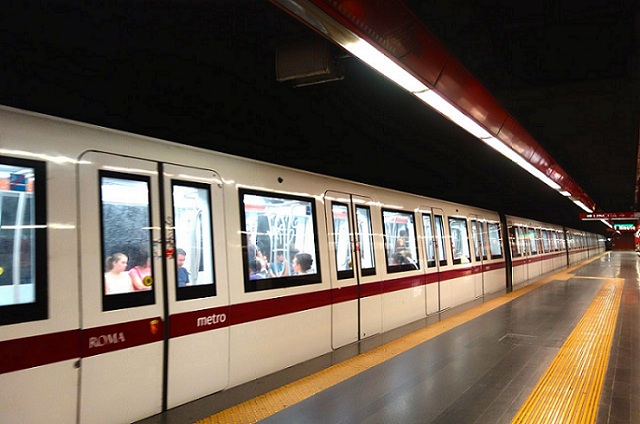
Everything You Need to Know About Using Rome's Subway
The metro system in Rome is really easy to use, and a great way to get around between the sites. Find out:
- where to buy tickets and passes
- which types of tickets to get
- who is eligible for discounts and free entry
- where to get the metro
- where it can take you
- how to use your ticket
Quick Things to Know
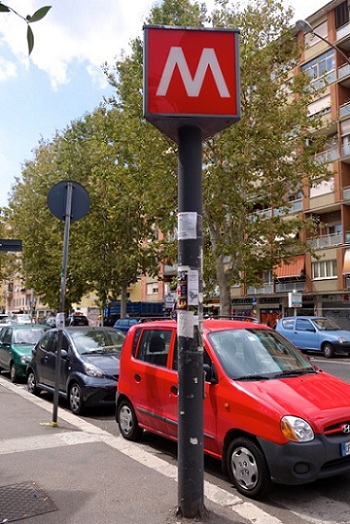
- The metro runs from 5:30am to 11:30pm Sunday to Thursday, and until 1:30am on Friday and Saturday.
- Like any big city with a metro system, this is prime pickpocket territory . Always hold on tight to your stuff, and keep wallets and money out of reach.
- Trains come along about every 3-4 minutes .
- During typical rush hours, and very busy tourist seasons, the trains can be very crowded . I always try to go to the very end of the platform to get on the last (or first) car, in hopes of it being less crowded.
- Most Metro stations may be accessed from multiple street corners. Look for the big M.
Rome Metro Map - Stations
Below is a map of the subway (underground) system in Rome.
The red line (shown kind of orange here), crosses the blue line at Termini.
The green line is the new line C, which is coming along nicely. Where it's dashed, it means it's still under construction.
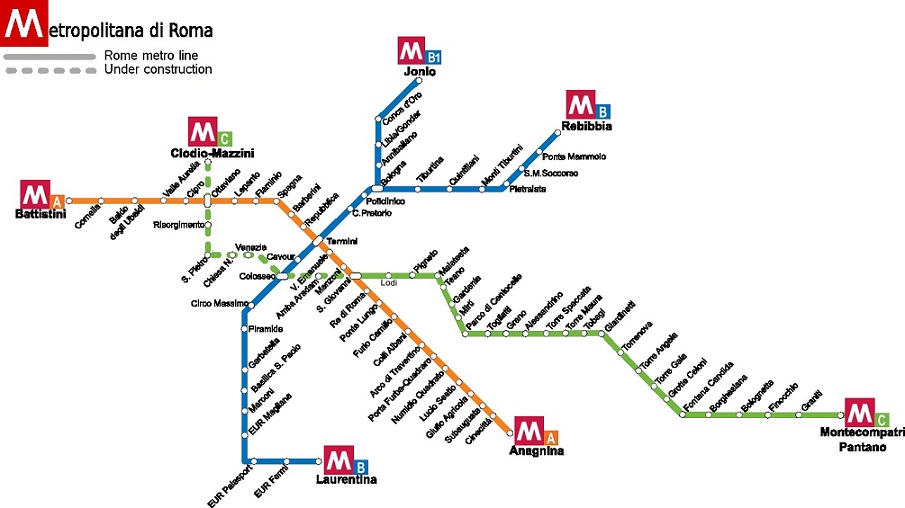
Rome Metro - Where Can it Take you?
The Metro can be very useful for getting to and from certain major tourist attractions in Rome.
The most common use of the Rome Metro is to get from Termini station (the main train station in Rome), to the Colosseum (blue line B, 2 stops) or the Vatican (red line A to Ottaviano, 6 stops.)
But if you look at a map of the Metro superimposed on a Rome city map (below), you will notice that there is a huge section of the center of historic Rome where the Rome Metro does not go. Can you guess why?
Looking for places to stay near the Colosseum? Visit our dedicated page here .
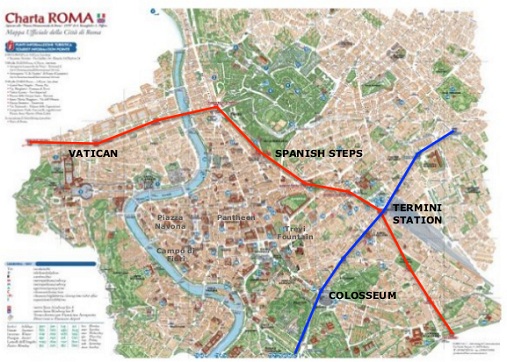
It's full of ruins! Every time they try to dig, they find more ancient stuff.
That said, they are working on a long-term project to add a third line, C, which, among other conveniences, will (one day) take people from the Basilica of San Giovanni to the Coliseum to the Vatican .
For more information, visit the official site of the Rome Metro (Italian only, but there are specific maps of each line if you like.)
From Termini, the red line A also takes you to common stops such as:
- San Giovanni to the southeast (where you can visit another of Rome's four major basilicas, San Giovanni in Laterano , or Saint John in Latern. Also a popular inexpensive neighbourhood to stay while in Rome).
- Barberini to the northwest (easy access to the Trevi Fountain and the via Veneto).
- Spagna to the northwest ( Spanish Steps ).
- Flaminio to the northwest ( Piazza del Popolo , also a tram stop for taking you further north).
🔐 Store your bags and luggage securely! 🧳
We're parterned with Radical Storage who have locations across Italy for you to keep your luggage safe before and after check-in, while on day trips and for everything else between 👌
Click here to book now and use code ROMEWISE to save 5%!
Blue Line B
From Termini, the blue line B also takes you to common stops such as:
- Tiburtina to the northeast (where the newest Rome train station is).
- Circo Massimo to the southwest (the stop after the Colosseum , where you can visit the Palatine Hill , the Aventine Hill and the Caracalla Baths ).
- Piramide to the southwest (so-called because of the nearby Pyramid of Cestius , and from where you may visit Eataly, or get on another local train to Ostia to visit either the ruins there , or the beach ).
- Basilica San Paolo to the southwest ( one of the four major basilicas , this one is worth a visit just to see the images of every pope since Saint Peter, lining the walls all around the interior).
Where the Rome Metro does not go
You will not be able to use the metro in Rome to easily access the Trevi Fountain , Pantheon , Piazza Navona , Largo Argentina or Campi di Fiori , among other important tourist attractions .
It also does not go to Trastevere .
But there are buses and trams so you can use those, alone or combined with the metro...or walk!
If you want to take a taxi, find out all about how to get one and what they cost here .
🤙 Roaming in Rome? 📱
Get yourself an Italian eSIM for calls, messages and data when traveling here.
Save on data charges with plans from just 19€ from Holafly - our recommended eSIM provider!
Click here to get yours now and use code ROMEWISE to save 5%!
Rome Metro and Bus - Passes and Ticket Types
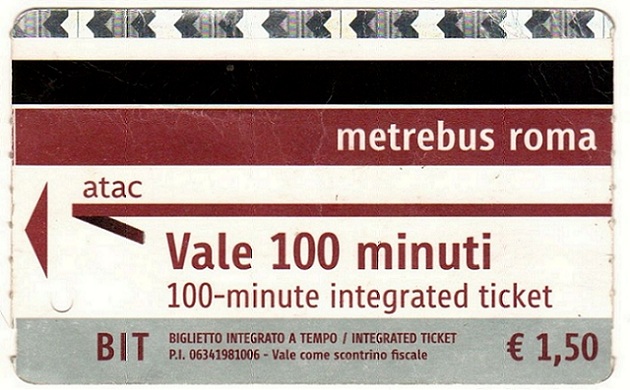
The Rome Metro system (lines A, B and C) is run by ATAC and the Metromare line to Ostia is run by Cotral.
They use the same tickets and you may combine the two systems. For example, you may decide to take the metro from Rome Termini station to Piramide, and from there, take the overground line to Ostia Antica .
- BIT ticket ( one-time use ) - The most basic one-way metro ticket costs 1.50€. For this ticket, you are allowed to change train or bus once (same direction, not round-trip.) It's valid for 100 minutes from the moment you validate it.
- Roma24 - You may also buy a 7€ pass, which is valid for unlimited use for 24 hours from the moment you validate it. So if you will use the bus/metro more than 4 times in one day, this could be worthwhile.
- Roma48 - You may also buy a 12.50€ pass, which is valid for unlimited use for 48 hours from the moment you validate it.
- Roma72 - If you want a 3-day metro/bus pass, it costs 18€. It's good for unlimited bus/metro use around Rome from and including the day you validate it, for 72 hours from the moment you validate it.
- CIS ticket ( 7-day use ) A 7-day pass costs 24€, and is good for unlimited travel on the buses and metro in Rome from and including the day you validate it, until midnight of the 7th day.
- Roma Pass ( tourist package ) - You may also consider getting the Roma Pass, which allows for unlimited travel on Rome's bus and metro system for a 2 or 3 day period, depending on the pass. It also gives you discounted rates to many of Rome's museums and archaeological sites . Click here to visit my Roma Pass page .
For more information, visit the ATAC website, Rome's official public transportation portal. Unfortunately the site does not work well in English.
The perfect 3-day itinerary in Rome
Trying to figure out how to organize your visit to Rome? I've got the perfect 3-day itinerary for first-time visitors (or those who have not been here in a while.) It works for a 2.5 day visit as well.
In my 3-day itinerary, you'll see all the major must-see Rome attractions like the Vatican , Colosseum , Trevi Fountain , Pantheon , Piazza Navona , Spanish Steps , Castel Sant'Angelo , and much more.
And if you have more time, or want suggestions for extra/other things to do, you'll find that there too.
Visit my page with the best 3-day itinerary in Rome for first-timers .
Who is eligible for discounts and free entry
Children 10 and younger may use Rome's public transportation free, as long as they are accompanied by an adult.
There are no discounts for the elderly or for the disabled (unless you are a Rome resident, and purchase an annual ticket).
How to travel for free in Rome:
At the end of 2023, ATAC and Cotral, in conjuction with city hall, announced for that a select number of dates, all buses would be free in Rome.
This is part of a initative to reduce car use in the city, and is likely be repeated.
When planning your trip here, do some research and find out if you can travel for free, and spend the money you save on some extra gelato or spritzes!
Rome Metro - Where to Get Tickets
You may buy several tickets at once. They last for months if not years, until the moment of validation. So if you know you want to have, say, 4 tickets for your stay in Rome, you can just get them all at the same time.
You can buy metro/bus tickets from tabacchi (tobacco shops), or at the green newsstand kiosks you see around Rome, however, since the end of 2023 this has become difficult at times.
This is because of the introduction of new rechargeable/reloadable tickets, designed to reduce the amount of single-use tickets being issued.
You will find machines offering these rechargeable tickets at all metro stations and major bus stops.
Select the type you want (instructions are available in clear English) and follow the on screen info.
To use your ticket, just place it on the little yellow circle on the metro platform barriers. This will deduct a use from your ticket - once you have used up your ticket, return to a machine to recharge it.
You must purchase your tickets before you board any type of public transportation in Rome as it is not possible buy tickets on board .
Ready to plan your trip?
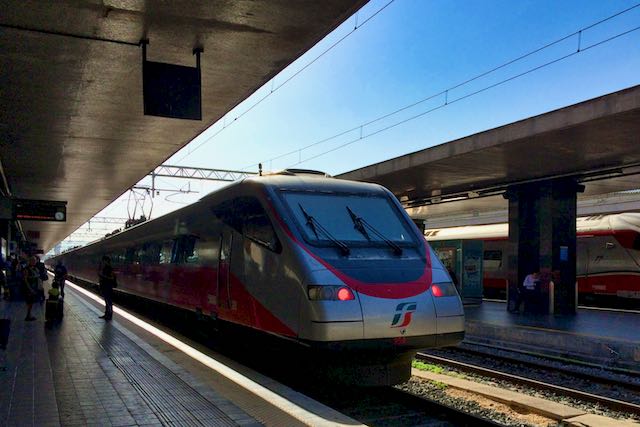
No matter what season you visit Rome, here are 4 things never to leave at home:

Disclosure: If you make a purchase through a link on this page, I may receive a small commission - at no extra cost to you. Thank you for supporting my site!
How to Validate Tickets on the Rome Metro
If you have a single-use ticket, insert it into the machine, with the stripe facing up and the arrow facing into the machine.
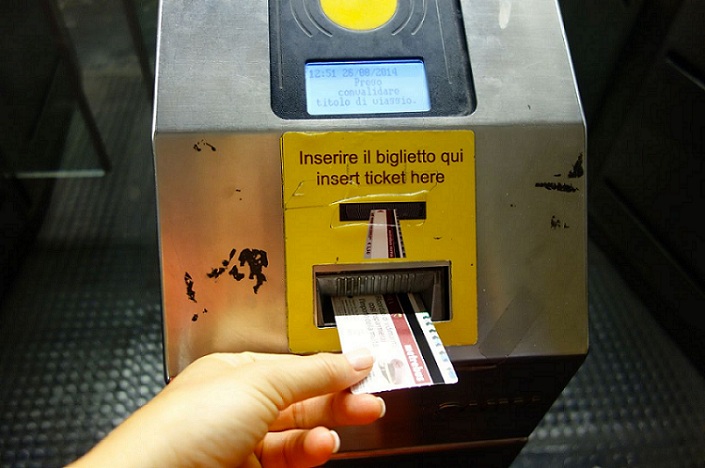
This part is just as important : when the ticket is validated, it pops back up. You must take the ticket with you, and keep it with you until you have fully exited the metro system!
Never enter the metro or bus system of Rome without a validated ticket. You will risk a hefty (60€ minimum) fine. And playing the ignorant tourist will get you nowhere. Trust me I have witnessed this in action.
If you have one of the new rechargeable tickets, place it on the yellow circle at the top of the barrier (you can see this in the photo) above which will validate it.
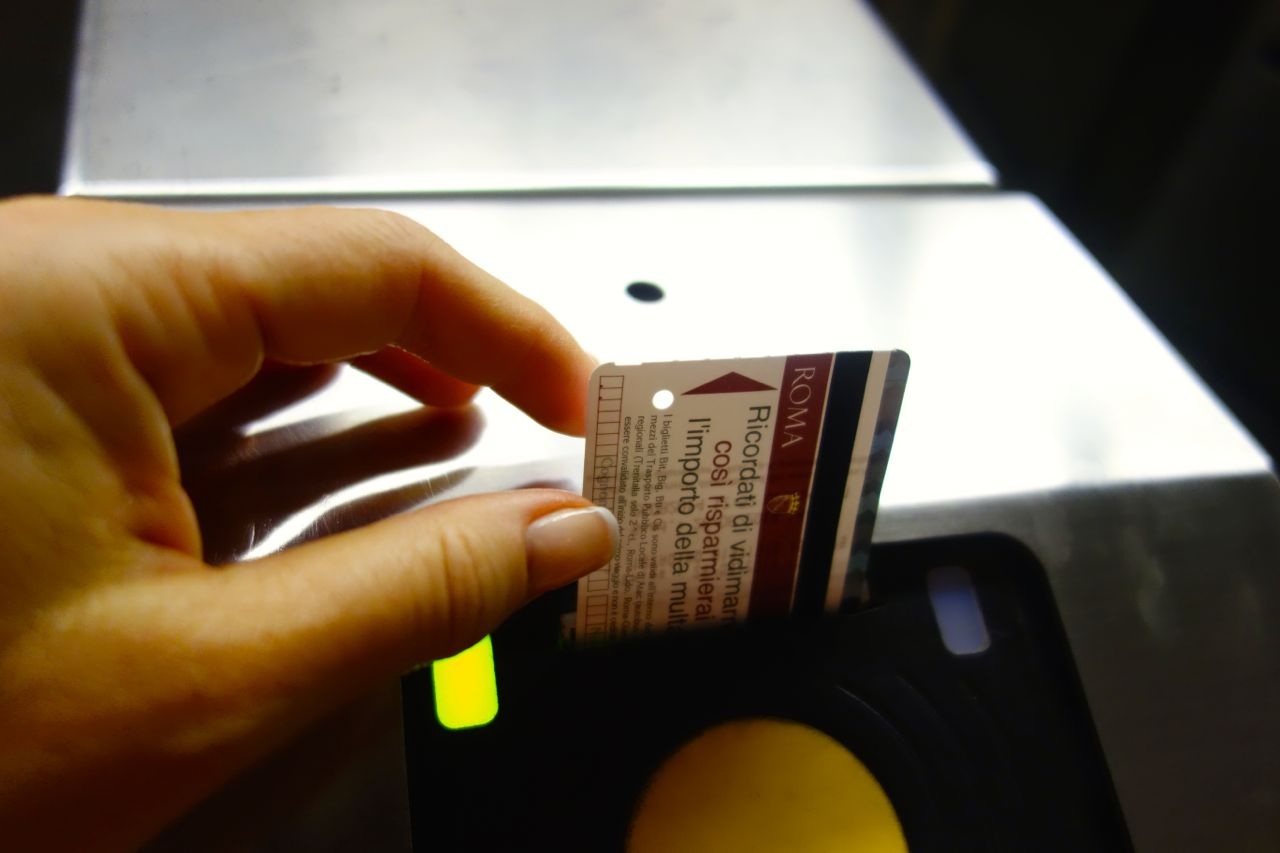
If you have a Roma Pass , press it against the yellow dot also. The gates will open.
Want to save this to Pinterest? Pin it here!
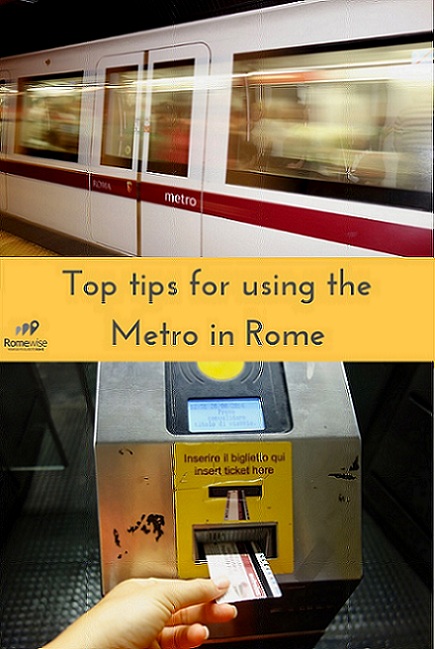
Get your 100% free Rome trip planner now!
Simply sign-up today for our free newsletter and get the Romewise Quick Start guide to Rome:
We are committed to respecting your data. Click for our Privacy Policy .
Comments? Questions? Suggestions?
Please come over to the private Romewise Facebook group and join in the conversation.
You will often find me there, happy to answer your questions / comments!
You will also meet other Rome lovers and experts, too.
What are you waiting for?
Come join in the fun !

Read here about our sponsorship policy
Top attractions and tours

- Colosseum - Don't miss visiting Rome's most iconic monument
- Vatican Museums - This is where the Sistine Chapel is
- Pantheon - Book ahead and skip the line
- Galleria Borghese - You'll need to book ahead for one of Rome's best museums
- Castel Sant'Angelo - See Rome's history through its architecture
- Rome City Pass - A great way to make your Rome visits easier
Disclosure : If you make a purchase through a link on this page, I may receive a small commission - at no extra cost to you. Thank you for supporting my site!
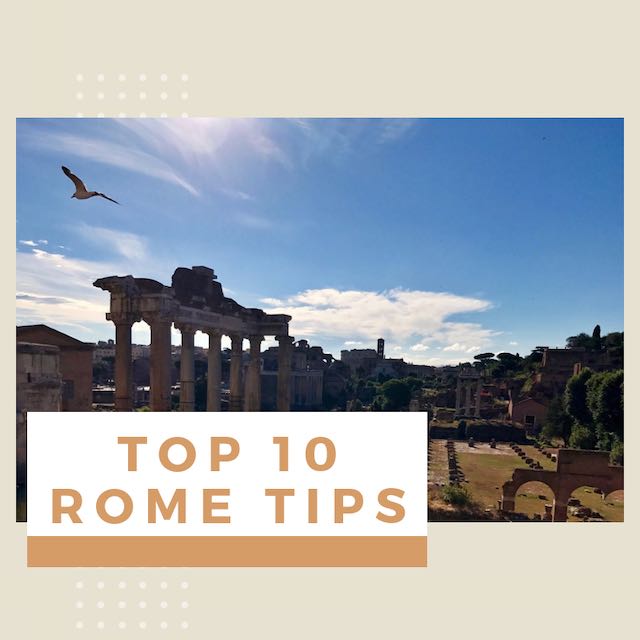
New to Romewise? Start Here
Get the most out of Romewise
Coming To Rome?
Weather in Rome
Accommodation
Already in Rome?
Things to Do
Home | About Me | Privacy Policy | Legal Disclaimer | Affiliate Disclosure | Contact Me
Copyright © 2009-2024 by Elyssa Bernard, Romewise.com | All Rights Reserved.

Where to Stay in Rome: Our Favourite Places And Neighbourhoods (2024)
Written By: Sara Oprasic
Published On: May 5, 2024
So you’ve finally bit the bullet and are planning that trip to Rome? That’s fantastic, and I’m sure you’ll love the city every bit as much as I did. And if you need help figuring out where to stay in Rome, you’re in the right place because I’ve got hotel recommendations in all the best neighborhoods!
From the best boutique hotels in Trastevere to the top luxury hotels in the Eternal City, this guide offers something to every type of traveler. I’ve got a place in mind whether you want to stay around the corner from the Trevi fountain or far from the noise and crowds of Rome’s historic center.
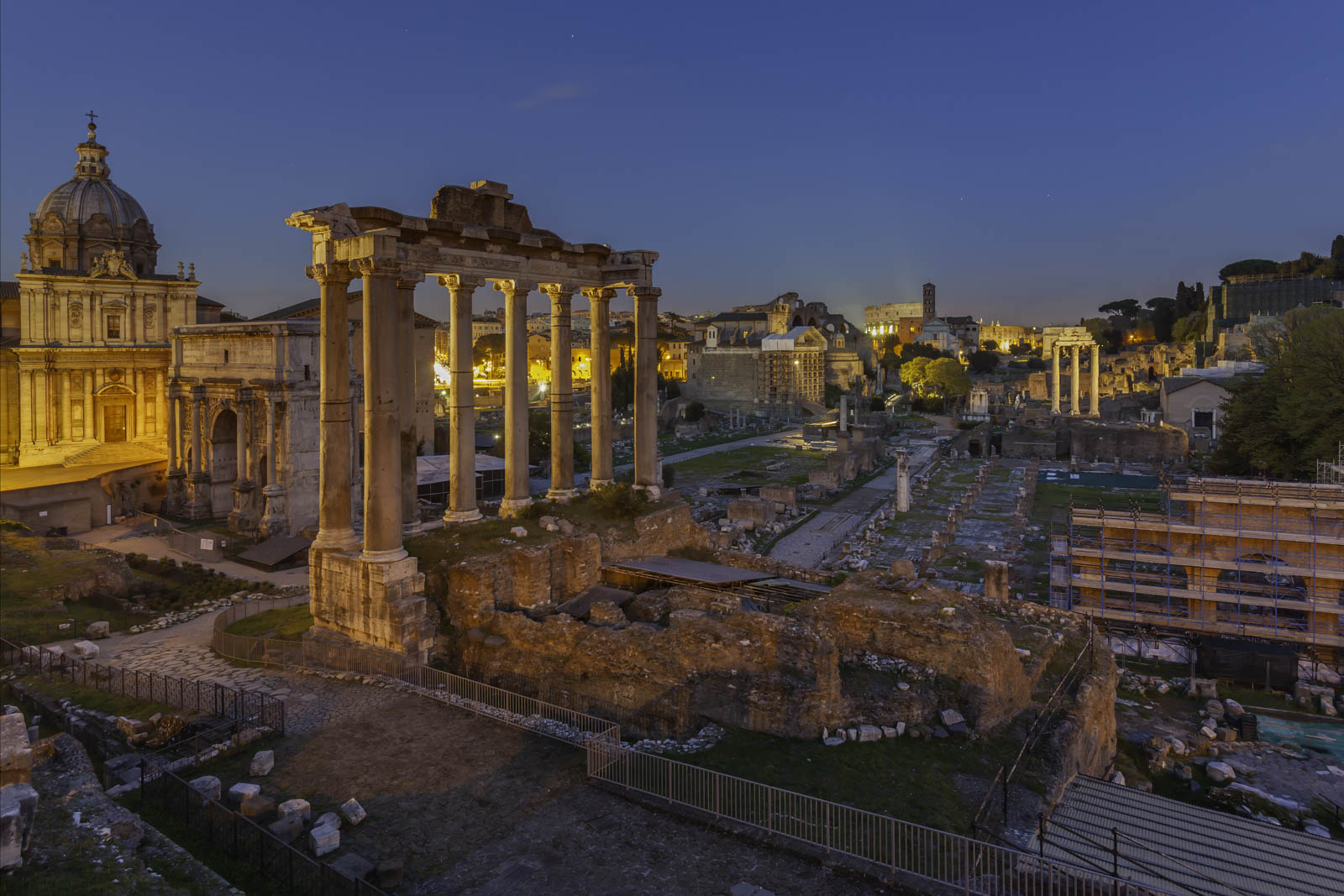
You should listen to me because I practically became an expert on Rome after visiting at least 6 times over the years. I learned how to avoid most tourist traps, see (almost) all the sights that interested me, how to find accommodations appropriate for my budget and travel preferences. Combine that with the amount of times Dave and Deb have visited and you will see why we know the best places to stay in Rome.
Where To Stay In Rome
Keep two things in mind when booking a hotel in Rome – the location of the accommodation in relation to public transport and the density of tourist crowds in the area. The city is massive and it’s not realistic to walk everywhere all the time, especially if you’re in town for a while. Buses are the slowest mode of public transport, but the main one for getting around Centro Storico.
Trams and metro are faster, with the latter being the quickest option for traveling from, say, the Colosseum to the Spanish Steps, but they don’t cover the city as extensively. As for the crowds, let’s just say that if you don’t like being in a sea of people, you will not enjoy exploring Rome’s historic center. Book a hotel farther from the tourist areas to experience a more quiet and peaceful vibe in this mega-popular metropolis.
Don’t Have Time To Read The Full Article?
- First-Time Visitor: Being close to sights that interest you is essential for a first visit, so consider Eccelso Hotel , Harry’s Bar Trevi Hotel & Restaurant , and Nerva Boutique Hotel.
- Overall Our Favorites : The hotels we loved the most are Hotel Nazionale , Apollo Boutique Hotel , and Villa Agrippina Gran Meliá .
- Alternate Accommodation : My recommendations for apartment stays are Babuino 79 , Germanico Luxury Apartment , and Splendor Suite Rome .
Where We Stayed in Rome
Dave and Seb stayed at Hotel Nazionale in Centro Storico for the first time and recommend it to other travelers who prefer a centrally located hotel. All the top sights are within walking distance, and you’ll enjoy spacious rooms with comfy beds.
I stayed at Morgagni House , and I recommend it to travelers on a tight budget who want to get the best value for money. If you don’t mind riding the metro, you’re only 15 minutes away from the heart of Rome.
Trastevere: Our Recommendation
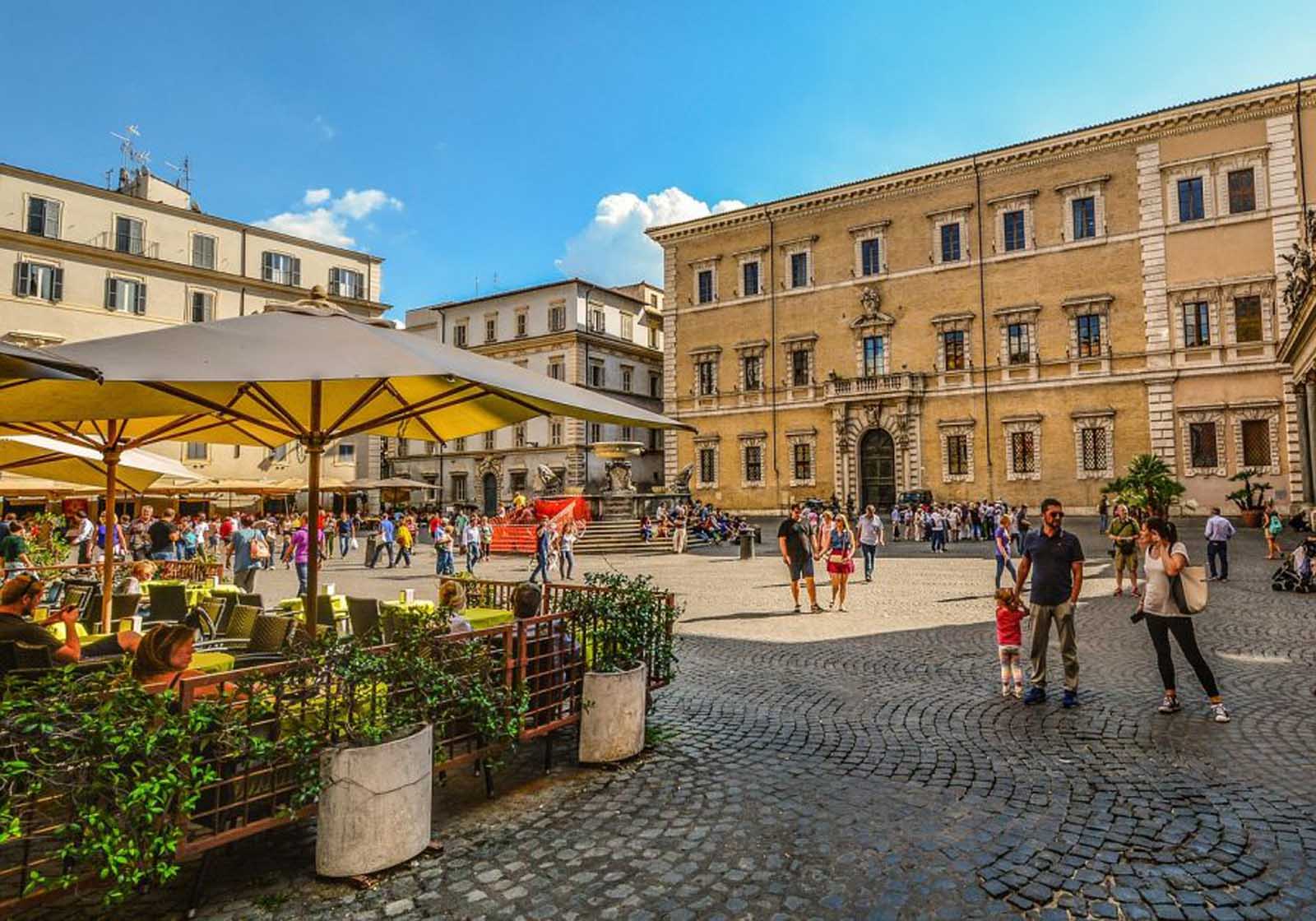
Trastevere is a trendy neighborhood separated from Ancient Rome by the River Tiber. Anyone can stay here and enjoy it; most of the popular attractions in the historic center are within walking distance, but the crowds are nowhere near as bad as in Centro Storico.
Also, the hotels in Trastevere are cheaper than those on the right bank of the River Tiber, with plenty of options in every price range. The same can be said for restaurants and bars; from fancy rooftop lounges to cheap local bars, Trastevere is one of Rome’s best areas for nightlife and Italian cuisine .
The area is walkable and offers plenty of interesting sights every few steps. Go for a 15-minute walk from your hotel, and you’ll stumble upon a fantastic church but also a quaint cobblestone alley decorated with plants and statues.
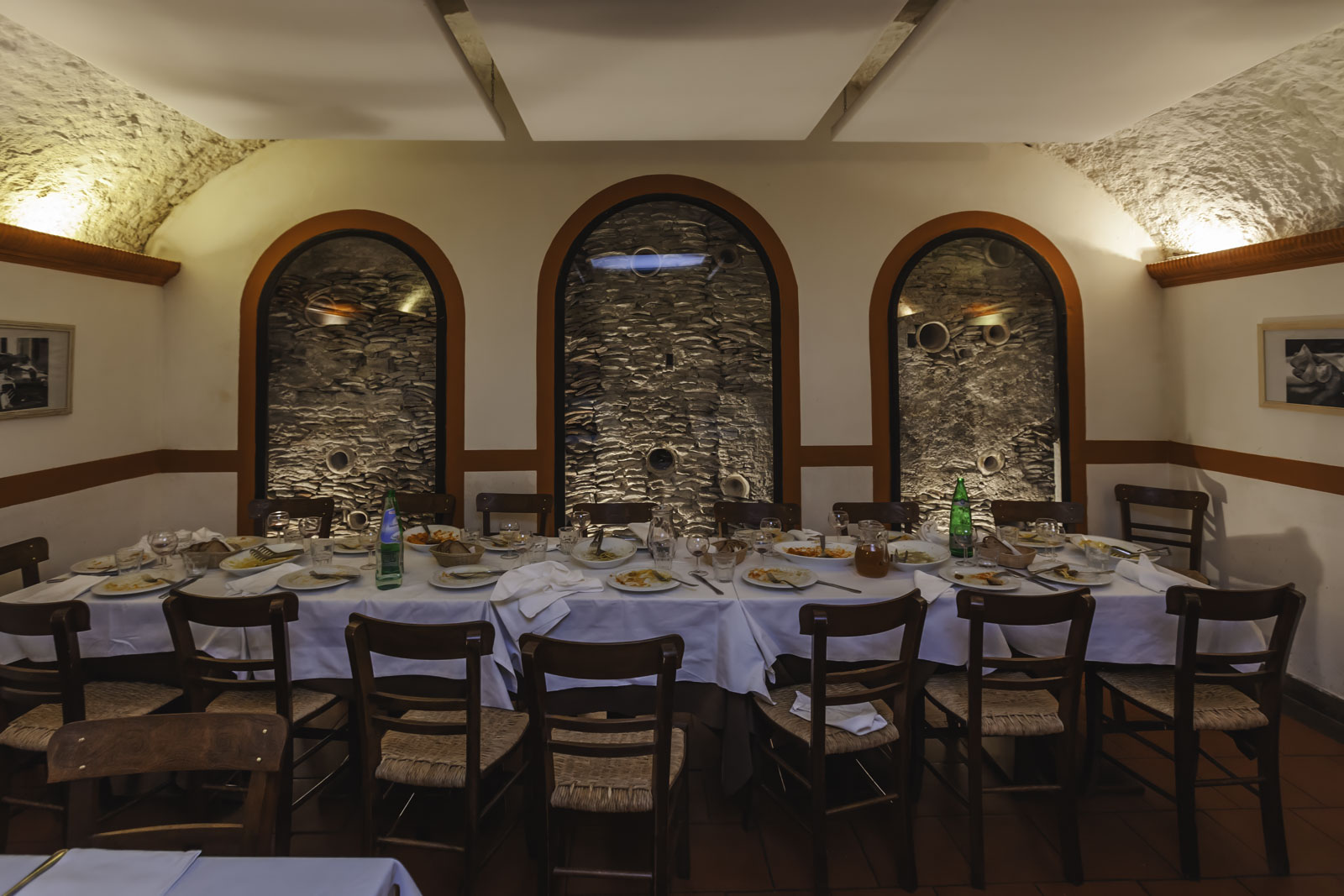
Pros and Cons of Staying in Trastevere
- Fewer crowds than in the historic center
- Cheaper hotels and restaurants
- Good nightlife
- Not a super central neighborhood
- No metro stations
- Fewer historic landmarks
Highlights of Staying in Trastevere
Trastevere doesn’t offer as many famous landmarks as Rome’s historic center, but it does have several spectacular basilicas with exquisite interiors.
- Janiculum Hill is home to a panoramic terrace that offers a fantastic view of Rome. It’s well worth the uphill climb, especially if you stop by the Botanical Garden of Rome on the way up.
- The Basilica of Saint Cecilia is situated in the western part of Trastevere, near the river. You can enter the church for free, and you should absolutely do it because the painted ceiling is one of the best things I’ve seen in my life.
- Basilica of Santa Maria is a grand church on Piazza Santa Maria that is famous for its opulent gold interior. Featuring 22 Roman columns and mosaics that date back to the 12th century, this fantastic church leaves no visitor indifferent.
Best Places to Stay in Trastevere

In Trastevere, it’s best to stay either in the north or in the southeast of the neighborhood – as long as you’re within walking distance of a bridge over the Tiber River, you’re good. Hotels in the north are closer to Prati and the Vatican, while those in the southeast are closer to the Colosseum and Roman Forum.
Villa Agrippina Gran Meliá
Villa Agrippina Gran Meliá is Trastevere’s only five-star hotel and the best option in the neighborhood for luxury travelers. It’s a ten-minute walk from The Vatican and Castel Sant Angelo and just 15 minutes from Piazza Navona in historic Rome.
The hotel offers spacious rooms with modern ensuite bathrooms and decorations in the form of stunning Roman art. My favorite part of this charming hotel is the garden, which features an outdoor swimming pool. The pool might not be special on its own, but coupled with the fabulous views of Castel Sant Angelo and Vatican City, it’s easily the best thing about the hotel.
This excellent hotel boasts three restaurants and two bars, some of which observe seasonal working hours. Enjoy refreshing cocktails by the pool in the summer, but head into the library for some warm tea if you come to Rome in the winter.
Loly Boutique Hotel
Loly Boutique Hotel is a chic four-star hotel with a nice rooftop terrace bar. It offers beautiful modern rooms with ensuite bathrooms, TVs, and desks. Every room also has either a private patio or a balcony, which is a nice touch.
In terms of room amenities, all guests will have access to free WiFi, a kettle in the room, and a fridge. As far as other facilities go, Loly Boutique Hotel prides itself on offering a fantastic restaurant and bar on-site.
The only thing that I’m not entirely happy about is the hotel location. It is great for exploring Trastevere but slightly less convenient for getting to other areas of Rome as it’s not close to the metro. The boutique hotel is near tram and bus stops; the tram can quickly get you to within a block of Largo di Torre Argentina, which is a good starting point for exploration of the historic center.
Bloom Hotel Rome
Bloom Hotel Rome is a three-star hotel with a surprisingly nice interior. If you’re planning to go to Rome in the off-season, this might just be the best hotel for you because the average nightly rate in the fall is around $120 for two travelers.
That’s a good deal considering that all the rooms are spacious and include a private bathroom, TV, and a desk. Also, it’s not just because the rooms are well-equipped; they’re all beautifully decorated with colorful wallpaper and sleek modern furniture. You can get a private bathroom and a TV in a cheaper 2-star hotel, but they’ll usually look like something out of a previous century.
The location of this budget hotel is great as it’s within walking distance of the Vatican and very close to public transport stations that can take you into the heart of Ancient Rome in 10-15 minutes.
Centro Storico: Best For Sightseeing
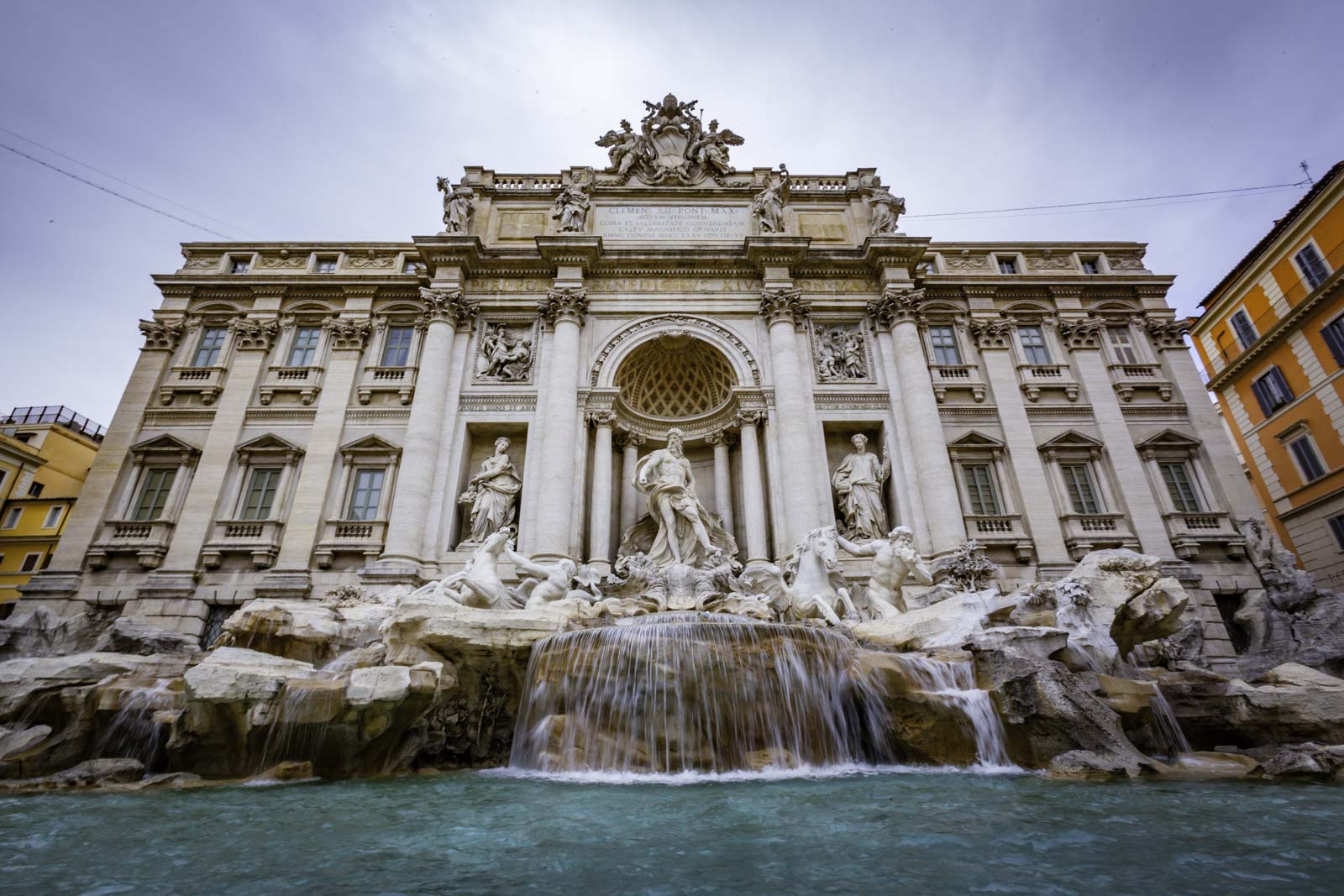
Centro Storico is Rome’s historic center and the home of most of the sights anyone who comes to the Eternal City wants to see. It’s where you’ll find the Trevi Fountain, Piazza Navona, Campo de Fiori, the Pantheon, Piazza del Popolo, and almost everything else Rome is famous for around the world.
The historic center is where Dave and Deb stayed and is also home to some amazing fine-dining restaurants and shops, ranging from indie boutiques to popular chain stores. Unfortunately, it’s also the most crowded part of Rome, and that’s the main reason why someone wouldn’t want to book a hotel here.
Accommodation in Centro Storico sells out fast. Unless you’re planning the trip many months ahead, you might struggle to find a room in one of the area’s best hotels.
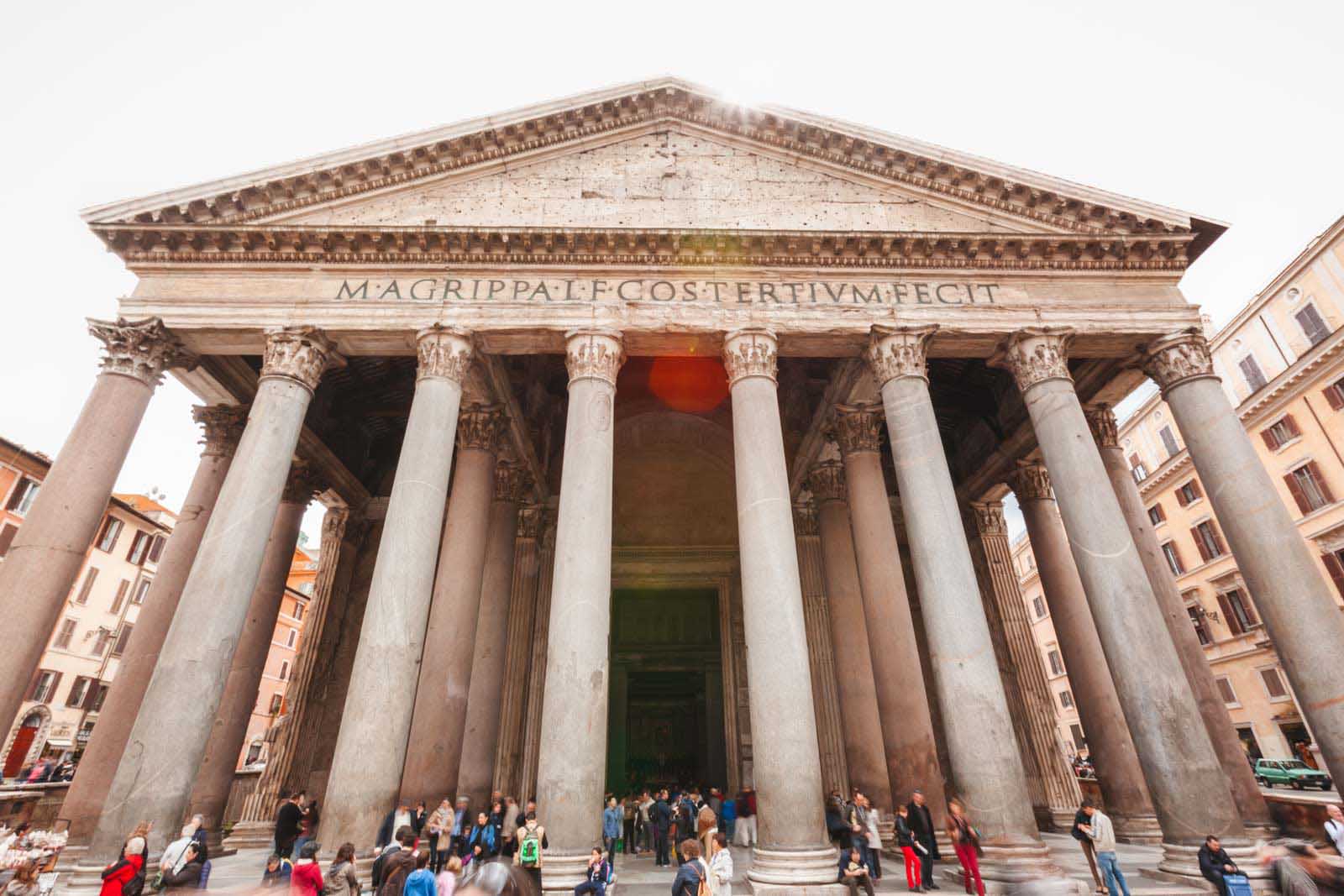
Pros and Cons of Staying in Centro Storico
- Home to many of Rome’s major attractions
- Countless options for restaurants
- Plenty of hotels to choose from
- Extremely crowded
- Expensive hotels
- Lots of tourist traps
Highlights of Staying in Centro Storico
Centro Storico is packed with historic sights and interesting things to do. The ones below are just some of the best, but they’re certainly not the only noteworthy sights!
- Campo de’ Fiori is an open-air market on the namesake square. It’s a bit of a tourist trap, but the prices aren’t outrageous, and they’ve got some really interesting souvenirs. Just watch your belongings, as the market is often packed with people and it’s frequented by pickpockets.
- Trevi Fountain is the highlight of any visit to Rome. Nicola Salvi’s rococo fountain draws tourists from all over the world and is jam-packed throughout the day. But it’s every bit as stunning in person as it is in photos.
- The Spanish Steps on Piazza di Spagna are another iconic Rome sight that’s busy pretty much all the time. The place is worth visiting despite the crowds; many people hang out on the square, but I recommend you go all the way up for a fabulous view of Rome’s rooftops.
- Piazza del Popolo is a sprawling city square known for the Flaminio Obelisk and tall city gates. The best way to experience it is to come by metro to Flaminio station, and as you exit you need to pass through the massive gate, over the square, and through Via del Corso into the city center.
Best Places To Stay In Centro Storico
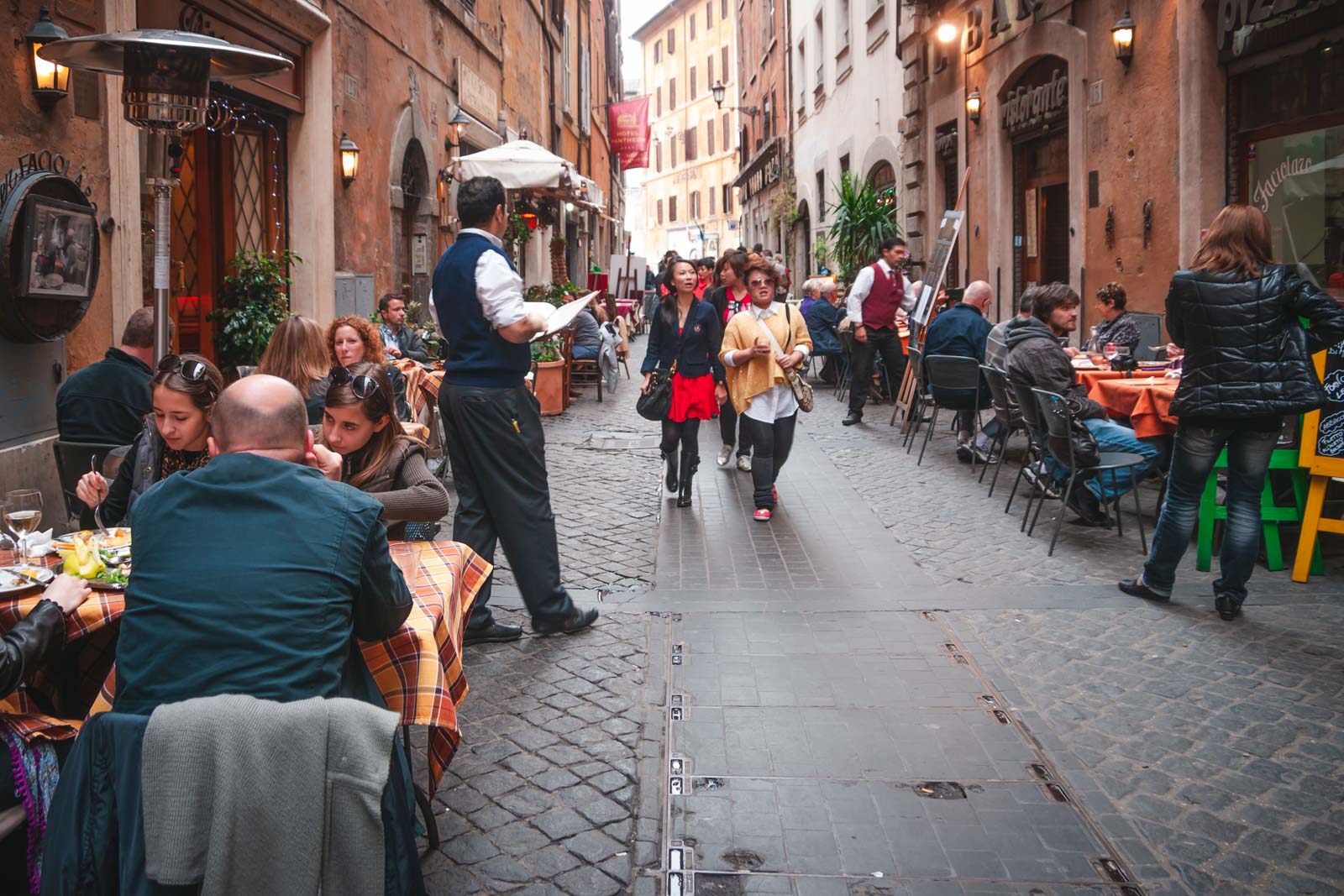
One good thing about Centro Storico is that, no matter where you stay, you will be within walking distance of an ancient Roman landmark. The heart of the Eternal City features countless interesting attractions, making it one of the best areas for tourists who want to stay in the part of Rome steeped in history.
Harry’s Bar Trevi Hotel & Restaurant
If you’re going to stay at a five-star hotel in the heart of Rome, then it might as well be one just around the corner from the Trevi Fountain. Harry’s Bar Trevi Hotel & Restaurant is a luxury hotel in the same building as Vicus Caprarius, an archeological site that offers a peek into the water system underneath the Trevi Fountain.
The hotel offers large modern rooms with luxury furniture, an ensuite bathroom, a desk, and an extra seating area. All the rooms feature full-length mirrors, and the bathrooms are spacious and spotless.
The fantastic rooftop terrace has to be my favorite feature of this high-end hotel. Only a few hotels in Rome can boast that they offer a view of the Trevi Fountain from their rooftop, and this is one of them!
Hotel Nazionale
Deb and Dave stayed at Hotel Nazionale on their last trip to Rome, and they enjoyed it enough that they want to recommend it to other travelers. The four-star hotel offers spacious rooms with classic furnishings. Every guest room has a private bathroom, a desk, a flat-screen TV, and a small seating area.
The hotel location is amazing because it’s smack dab in the middle of Centro Storico, and you’ll always be close by if you’re just sightseeing. I must have walked past the hotel building at least twice a day, every day I was in Rome , which just goes to show how centrally situated it is.
Breakfast is included in the nightly rate, and it’s a fabulous buffet with many savory and sweet options. The hotel also has a bar, but it lacks a proper restaurant. The good news is that at least two dozen excellent restaurants serve delicious Italian cuisine just five minutes from the lobby.
Hotel Locanda
Hotel Locanda is one of the best affordable accommodation options in the heart of Rome. Situated just a couple of minutes from Piazza del Popolo and Flaminio metro station. The nightly rate at this hotel varies quite a bit depending on the season, but the average is around $140.
The rooms are a bit basic but offer everything you might need during your stay. Each guest room includes an ensuite bathroom, TV, desk, and an AC unit, and some even offer a private balcony. The hotel also offers triple and quadruple rooms, but these aren’t available with a balcony option.
Stay here if you want easy walking access to Rome’s best attractions for an affordable price. Just bear in mind that this is a busy and often noisy area of the city, so it’s not exactly a quiet hotel.
Monti: Best For Nightlife & Ancient Ruins

Monti is a large neighborhood that partly belongs to Centro Storico but extends beyond the limits of Old Rome. It’s the part of the city where you’ll find the Colosseum, the Roman Forum, and several other iconic sights.
The great thing about Monti is that it’s far enough from central Rome that the crowds are significantly smaller but close enough that you can walk to most attractions. And if you don’t feel like walking, there’s public transport to take you virtually anywhere else in the city.
In addition to the countless ancient ruins, Monti is known for traditional trattorias, lively pubs, and boutique shops. It’s a good place to stay for almost anyone, whether you want to experience the nightlife in Rome or just focus on the historic landmarks.
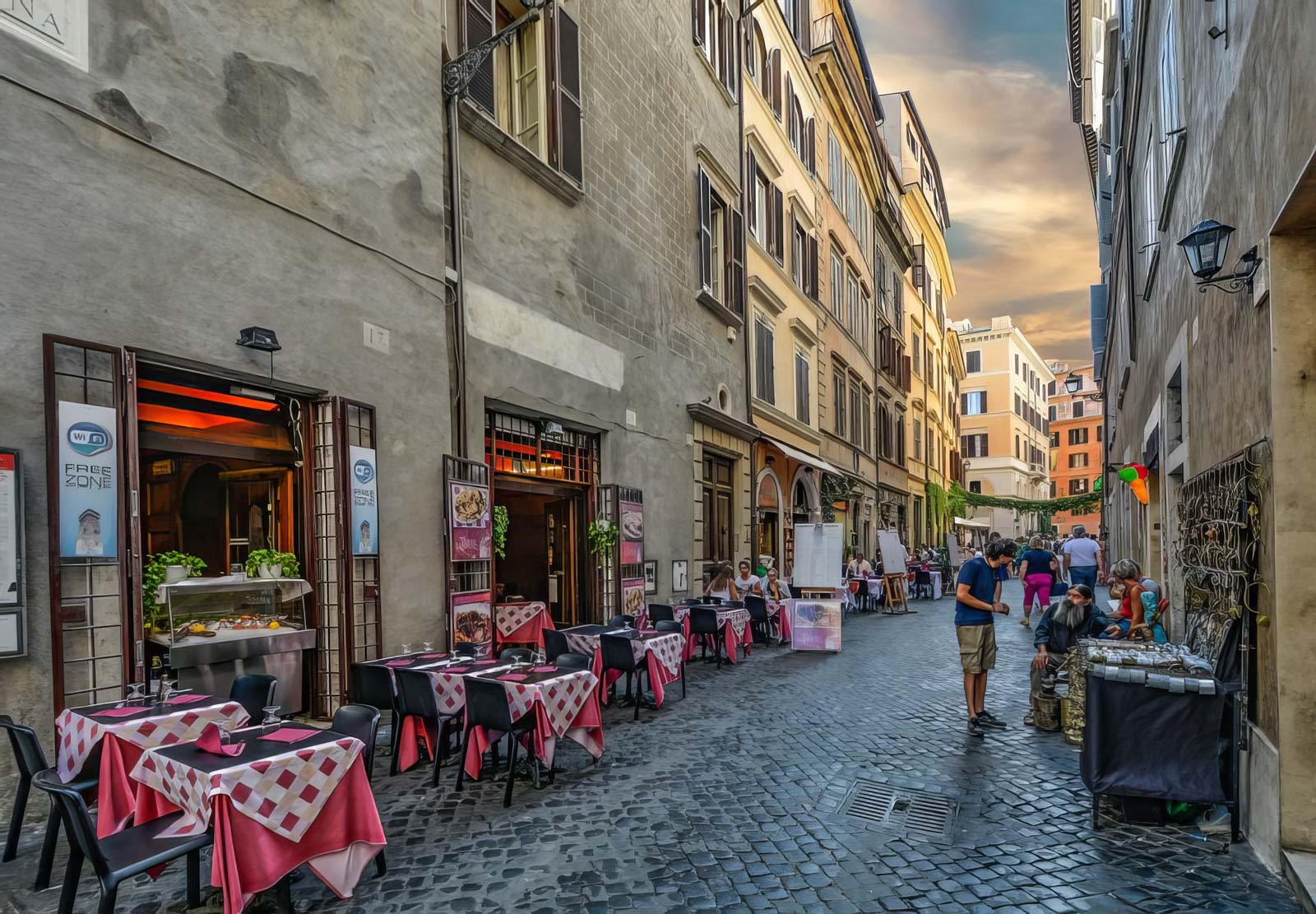
Pros and Cons of Staying in Monti
- Home to some of Rome’s best sights
- Excellent nightlife and shopping
- Great food scene
- Hotels are pricey
- Often crowded with tourists
Highlights of Staying in Monti
Monti is home to several ancient landmarks that were once at the center of the Roman Empire. If you’re fascinated by Italy’s rich history, I don’t doubt this will be your favorite part of the city.
- The Colosseum is every bit as amazing as you’re expecting and it’s well worth the hassle to get the tickets. You can buy the tickets only online, and they’re often sold weeks in advance, so try to purchase them as soon as you start planning your trip to Rome !
- The Roman Forum is included with the Colosseum ticket and it’s probably the best thing you’ll see in all of Rome. Get the pricier tickets so you can go inside all the different museums at the Roman Forum and discover fantastic artworks, interactive exhibits, and a plethora of other mesmerizing sights.
- Altare della Patria is a grandiose monument with statues, terraced steps, a museum, and marvelous city views, built to honor Italy’s first king, Victor Emmanuel II. I’m struggling to convey just how extraordinary this landmark is, and you really need to stand before it to grasp its magnitude and importance.
- Fori Imperiali is a series of smaller forums that once formed the center of the Roman Empire. They’re absolutely worth checking out, as you can walk around the area for free. But they can’t quite compare to the Roman Forum.
Best Places To Stay in Monti
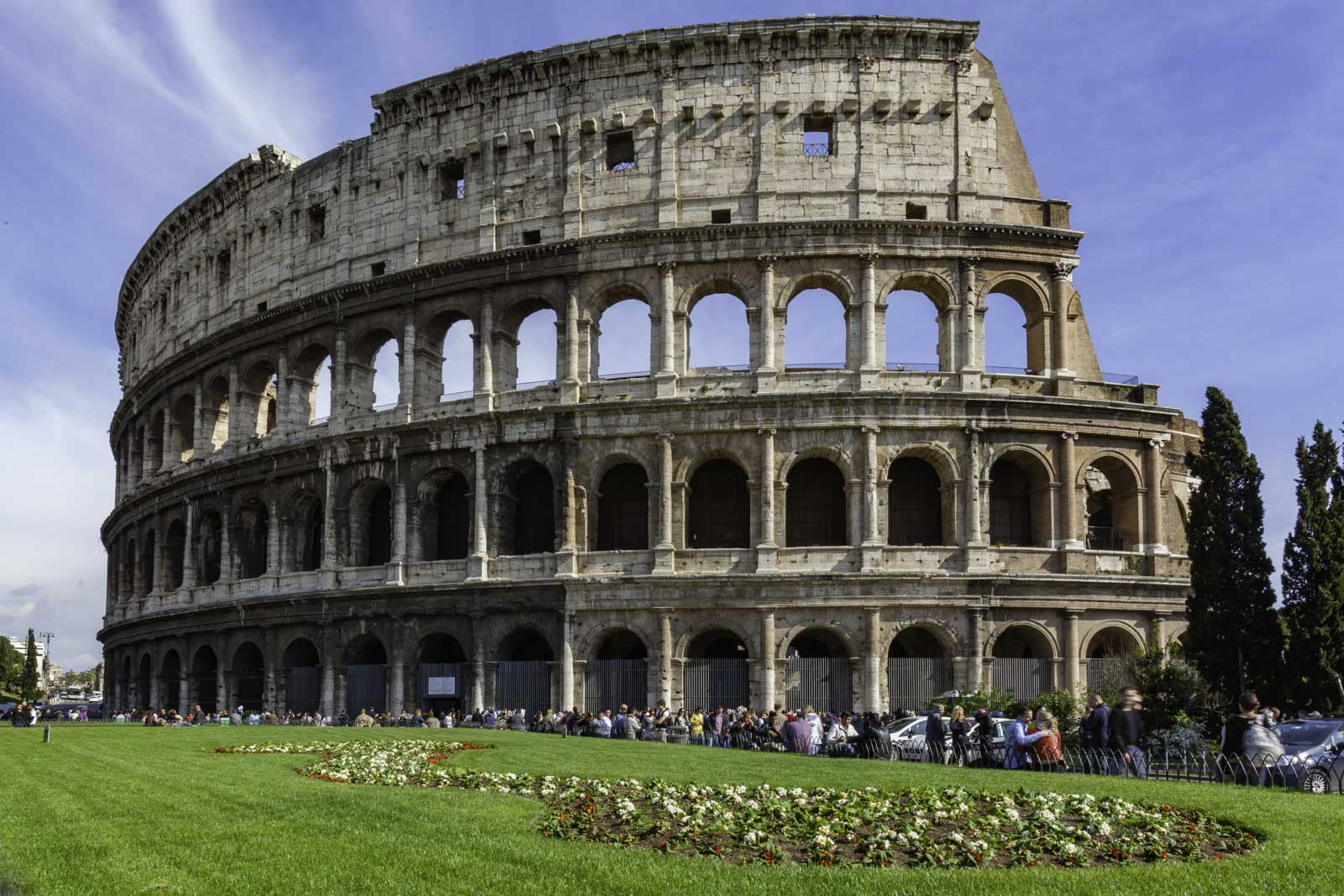
Wherever you stay in Monti, you’ll be close to public transport stations and just around the block from an ancient landmark or building. The area has great accommodation options in every price range, including some of Rome’s best boutique hotels.
The Fifteen Keys Hotel
The Fifteen Keys Hotel is a fantastic four-star hotel just a 15-minute walk from the Colosseum. Set close to the Cavour metro station, it boasts an excellent location that offers easy access to popular attractions all over the city.
The guest rooms are extra spacious and equipped with comfortable double beds. Every room has an ensuite bathroom, desk, TV, and an electric kettle so you can make tea or coffee in the room. Deluxe rooms and suites also have a private balcony.
Breakfast is included in the nightly rate of every room, and that’s always a bonus. The Fifteen Keys Hotel also offers bicycle rental and yoga classes, but there’s no wellness center or gym on the premises.
Nerva Boutique Hotel
Consider this excellent boutique hotel for a unique stay in one of Rome’s best areas. Nerva Boutique Hotel offers just 20 rooms, and it is situated in a stunning historic area of Rome.
The hotel is just around the corner from Foro di Augusto and just a short walk from the Altar of the Fatherland and the Roman Forum. The Colosseum is also just down the road, so the location is perfect for an in-depth tour of Rome’s historic sights.
The rooms are modern and cozy, with colorful touches and spotless ensuite bathrooms. Every guest will have access to a TV and free WiFi in the room, but not everyone will get a desk. The hotel has a restaurant on the premises, with delicious local cuisine.
New Generation Hostel Rome Center
New Generation Hostel Rome Center is a good option if you’re looking for a budget stay in the historic area. Guests can choose between double rooms with private bathrooms and classic dormitory accommodation in this hostel just 10 minutes from the Colosseum.
Cavour metro station is just a couple of minutes from the hotel, which provides easy access to other attractions in the Eternal City. The location is excellent, and there’s even a historic city tower in the building across the road from the hostel.
All guests staying here get free breakfast and WiFi, which is great value for money, considering that the nightly rate starts at around $55.The hostel also offers a garden, kitchen facilities, and a dining area where you can mingle with other guests.
Prati: Best For Access To Vatican City
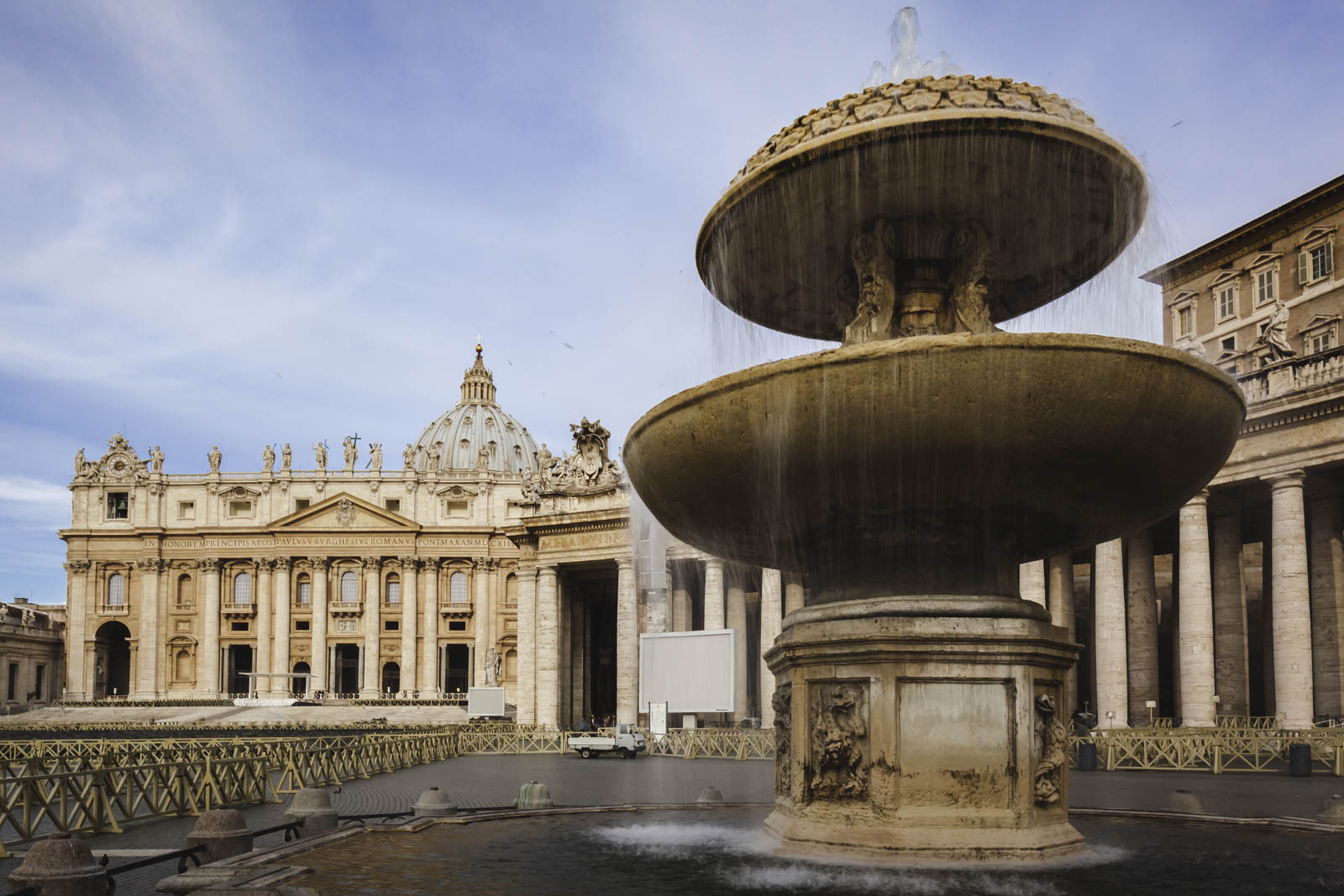
Prati is a neighborhood where I considered staying the last time I was in Rome, but ultimately decided on something else. It’s right next to Vatican City, so it’s ideal for all travelers who want to visit St. Peter’s Basilica and the Vatican Museums.
On the other hand, Prati also offers a metro connection to other areas of Rome and it’s within walking distance of Centro Storico. You can easily walk from Castel Sant Angelo to Piazza Navona, and enjoy some marvelous views along the way.
Additionally, Prati is known for some excellent (and affordable) eateries, particularly Pastasciutta. Just walk past this tiny restaurant, and you’ll spot a bunch of people either standing around or sitting on the sidewalk devouring their pasta.

Pros and Cons of Staying in Prati
- Close to Vatican City
- Walking distance to popular landmarks
- Great food scene
Cons
- The location is not super central
- Limited nightlife options
- Somewhat higher prices
Highlights of Staying in Prati
Prati is an affluent neighborhood and one of the safest areas in Rome. It’s not quite as packed with attractions as Centro Storico, but it is home to several important landmarks.
- The Vatican Museums are as amazing (and crowded) as they’re rumored to be. Take a day to tour this magnificent building, see the Sistine Chapel, and marvel at the Vatican Gallery of Maps.
- St. Peter’s Basilica is the second most iconic landmark you can easily access from Prati. While I didn’t get a chance to go inside the Basilica due to a massive queue, I did stand at the square in front of it and was taken aback by the size and grandeur of the entire place.
- Castel Sant’Angelo is a wonderful historic landmark and probably the least crowded attraction I visited in Rome. We walked around the grounds and enjoyed the view of the circular castle. Go inside the building to see the Renaissance apartments and an amazing collection of statues.
Best Places To Stay In Prati
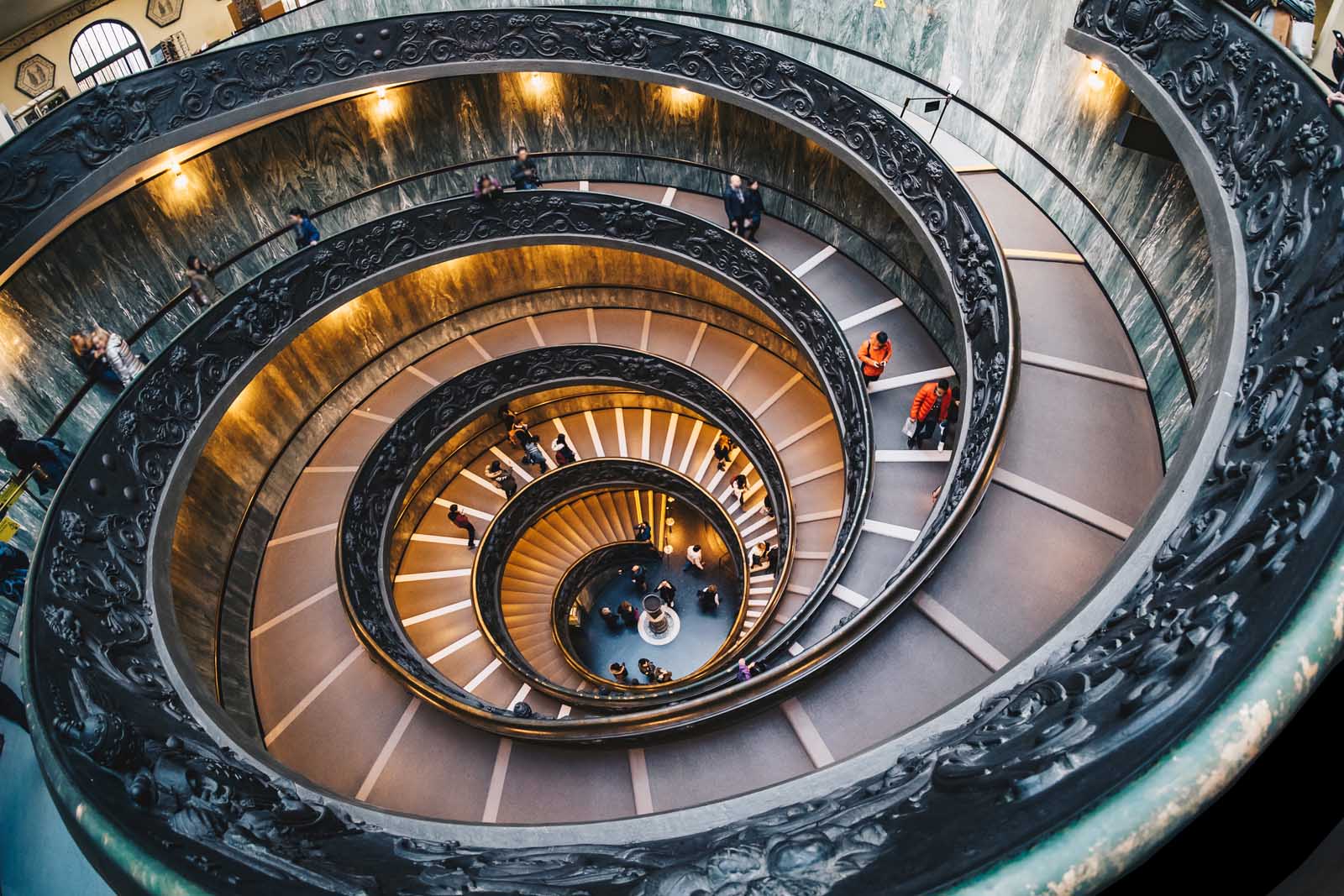
Prati is a relatively small and walkable neighborhood with loads of hotels in every price range. Travelers on a tighter budget might struggle to find suitable accommodation, but mid-range and luxury travelers will be spoiled for choice in this affluent Rome area.
The First Musica
The First Musica is an outstanding five-star hotel on the bank of the Tiber River. The location is fantastic because it’s just a short walk from Castel Sant Angelo on one side and the historic center on the other.
The luxury hotel offers spacious rooms with modern furnishings and floor-to-ceiling windows. The best rooms offer a view of the river, but the city views from rooms on the other side of the hotel aren’t too shabby either. Every room has a private bathroom, flat-screen TV, and a coffee machine with an excellent choice of coffee capsules.
Other hotel facilities include a bar and two restaurants, as well as select wellness services. Guests can book massages and beauty treatments for an extra cost, but there’s no proper spa center or fitness center on the hotel premises.
Apollo Boutique Hotel
Consider Apollo Boutique Hotel even if you’re not specifically interested in the Prati area but are just looking for the best hotels in the city. It’s down the road from the Lepanto metro station and just a short walk from Piazza del Popolo, so the location is superb.
This hotel offers large rooms with comfortable beds and modern furnishings. Colorful accents are included in the decor of every room, giving them that little extra charm.
Every guest room features an ensuite bathroom, seating area, TV, and a desk. The hotel also offers free WiFi and breakfast, plus it has a garden that all guests are welcome to frequent. And it even has a bar on-site.
Eccelso Hotel
Eccelso Hotel is an affordable option close to the entrance into Vatican City, so it is great for travelers who want to focus more on this part of Rome. The Ottaviano metro station is just a few minutes from the hotel, allowing you to reach the Spanish Steps in 10-15 minutes.
The rooms are surprisingly nice and spacious, considering that the nightly rate starts at roughly $90. Every guest room includes a private bathroom with free toiletries, a desk, a kettle, and a flat-screen TV.
Most rooms also have an additional seating area and sizeable closet space. The hotel offers a breakfast service that includes coffee and some pastries, but it’s worth noting that there’s no restaurant or coffee house on-site.
Nomentano: Best For Budget Travelers
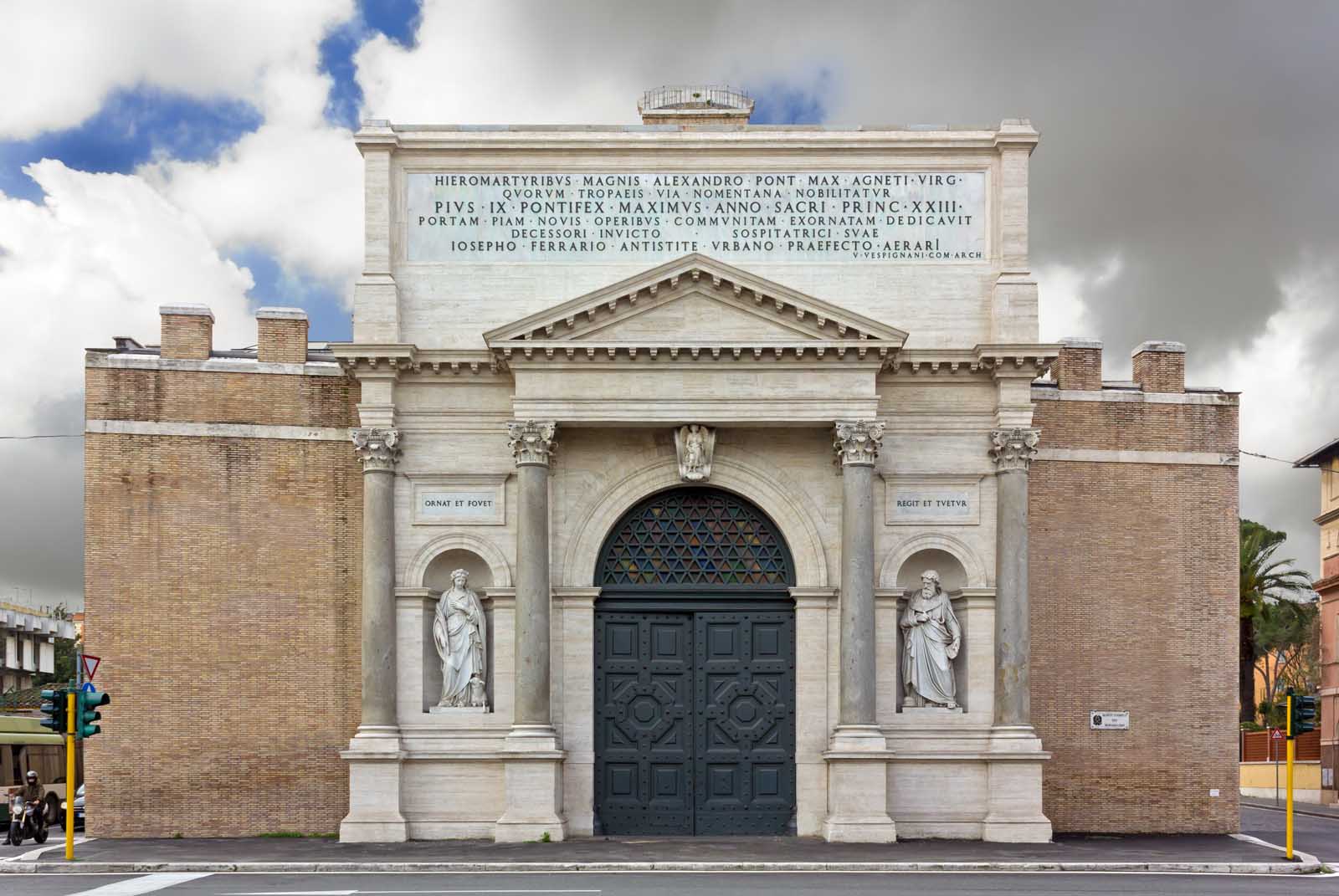
Nomentano is a neighborhood northeast of the historic center, and it’s one of the best areas of Rome for budget travelers. Most hotels here are a 40-45 minute walk from the heart of the city, and they’re generally significantly cheaper than accommodation options with a more central location.
Is it the most exciting part of Rome you could stay in? No. But is it quiet, local, and cheaper than other areas? Absolutely, and that’s why I’m recommending it to budget travelers. Also, the neighborhood is connected with the metro to the city center, and it takes only 10 minutes to get to the Spanish Steps in the heart of Rome.
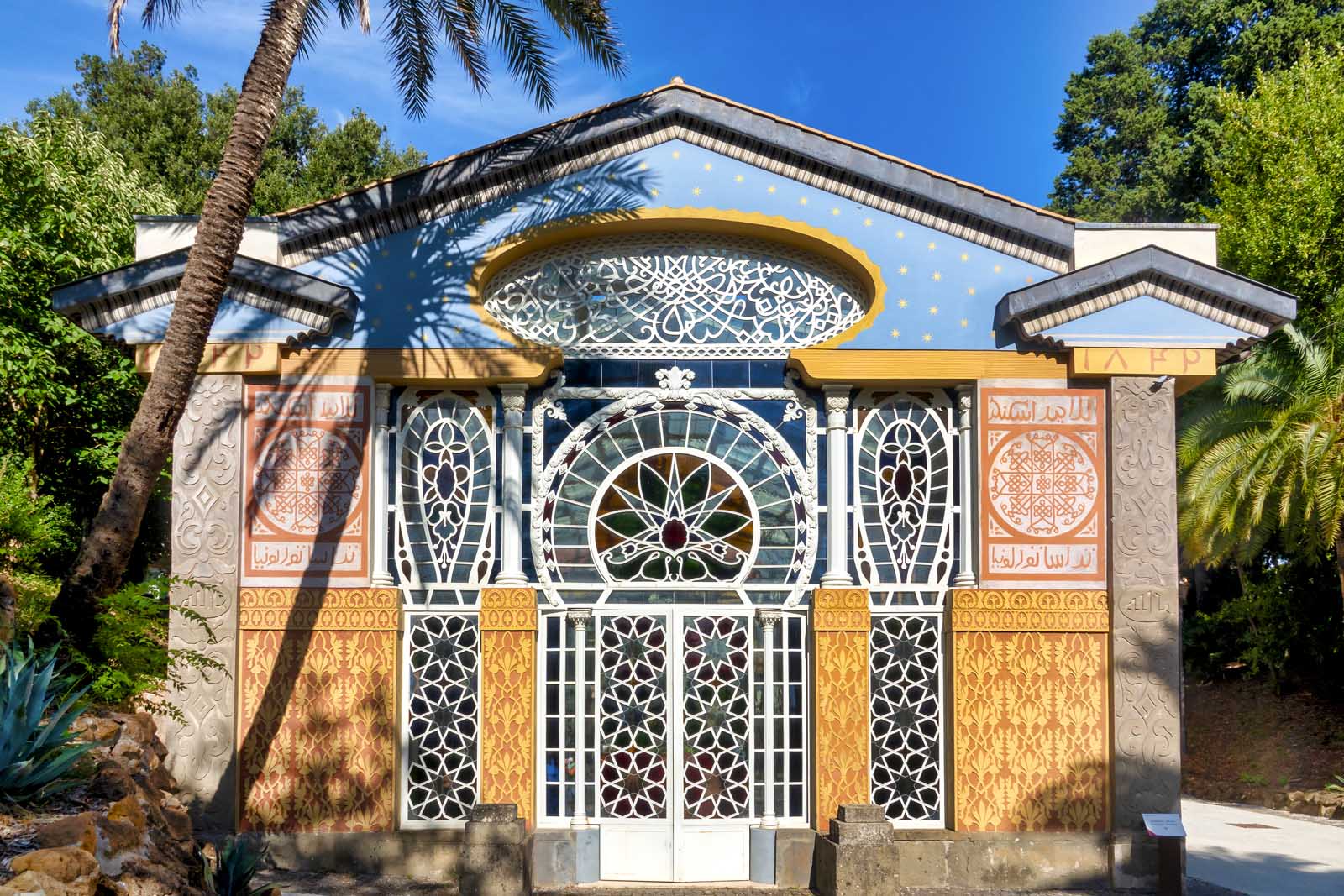
Pros And Cons of Nomentano
- Public transport connection to the city center
- Cheap restaurants and hotels
- Fewer tourists in the area
- Not centrally located
- Fewer landmarks and attractions
- The area around the hospital can be noisy
Highlights of Staying in Nomentano
Nomentano has fewer landmarks and historic attractions than Centro Storico and Monti, but that’s not to say that it’s entirely devoid of interesting sights. You’ll notice just a few minutes after arriving in this magical city that historic landmarks are to be found everywhere in Rome.
- Villa Torlonia is Nomentano’s largest green space. The sprawling public park features fountains, statues, museums, and the gorgeous Casina delle Civette, a building that resembles something out of a fairytale.
- Piazza Bologna is the central square in this neighborhood. It’s best known for the Palazzo delle Poste building, which serves as Rome’s best example of rationalist architecture. The square is lined with cafes and restaurants, and it’s the most vibrant area of this district.
- Head into central Rome on foot from Nomentano, and you’ll have to pass through Porta Pia . The towering city gate boasts a neoclassical facade designed by Michelangelo in the 16th century.
Best Places To Stay In Nomentano
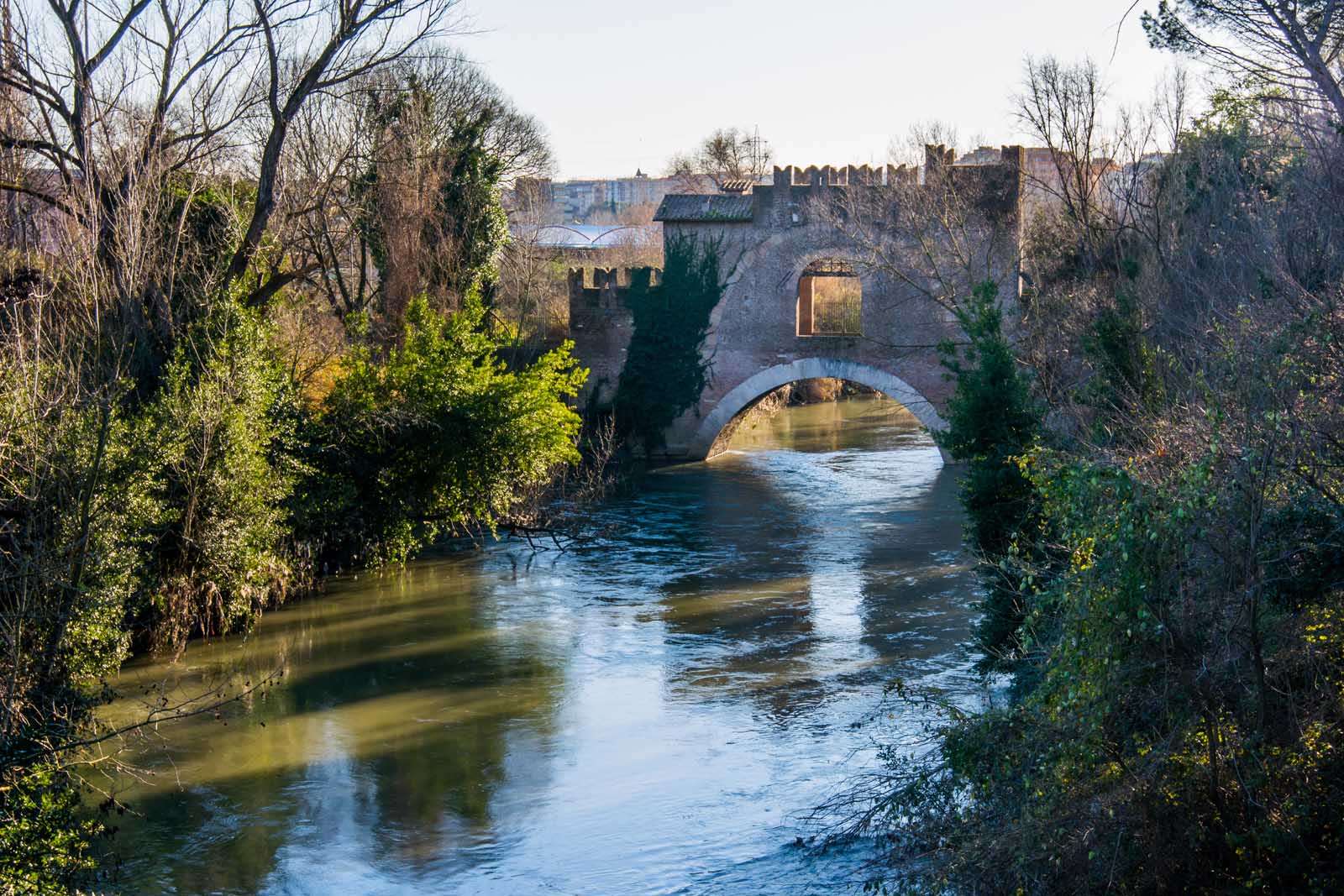
Because Nomentano is so far away from the historic center, it’s important to look for a hotel close to a metro station. Ours was right in front of it, and it rarely took more than 10 minutes to be on the train and on our way
Hotel La Ville Rome
Nomentano is lacking in five-star hotels because it’s a residential neighborhood, so I’m suggesting this fabulous four-star hotel as the best high-end option. Situated just a short walk from Villa Torlonia and Bologna Square, the hotel offers easy walking access to the top sights in the area.
It’s also near the metro, so you can easily travel into the city center. It offers medium-sized rooms with modern furniture. The beds are wide and cozy, while the private bathrooms feature a nice (and spotless) marble interior. Every room includes a TV, desk, a small seating area, and some nice colorful accents.
Breakfast is included in the nightly rate for all guests, which is usually around $250. There’s also a restaurant in the hotel, as well as a bunch of local eateries just 5-10 minutes from the building.
Mercure Roma Piazza Bologna
Mercure Roma Piazza Bologna is a three-star hotel situated on the neighborhood’s main square. The location is fantastic because you’re just a couple of minutes from the metro station. At the same time, dozens of vibrant cafes, bars, and restaurants are available in the immediate vicinity of the hotel, and they’re usually much cheaper than those in the historic center.
The guest rooms feature double or twin beds, ensuite bathrooms, and flat-screen TVs. Everyone staying at the Mercure Hotel gets access to free WiFi and a coffee/tea maker in the room.
The hotel offers a bar and a fitness center but no restaurant. However, I don’t think that’s necessarily a downside since there are so many places to eat in the surroundings that most people wouldn’t want to eat at the hotel restaurant anyway.
Morgagni House
Morgagni House is a guesthouse with private rooms I stayed in on my last trip to Rome. I went with a friend, and we paid a total of $345 for five nights, which came out to roughly $35 per night per person. That’s for a private room with an ensuite bathroom and free breakfast. It is a bit more expensive in the high season, but still a great deal considering what you get for the money.
The guesthouse has just five or six rooms, and we very rarely encountered other guests during our stay. The breakfast bar is in front of the bedrooms and features a coffee/tea machine, microwave, cereal, and other snacks. We were given croissants every morning (sometimes fresh, sometimes pre-packaged), butter, jam, and Nutella for our breakfast. It wasn’t the best breakfast I’ve ever had at the hotel, but it did keep us afloat for a couple of hours until it was time for lunch.
The room was nice; it was nothing special, but it had a desk, minifridge, TV, and a table with two chairs where we ate breakfast every morning. The bathroom was quite spacious, and the entire room was generally clean, apart from some dust from the way behind the radiators.
I really liked the location of this guesthouse; it was just a couple of minutes from the Policlinico metro station, which allowed us to travel into the heart of Rome in just 10-15 minutes. Bus and tram stops were also available within minutes of the building.
Aventino-Testaccio: Best For Returning Visitors

I’ve realized that Aventino-Testaccio is possibly the best place to stay in Rome if it’s your second or third time in the city. The area stretches from Circus Maximus to the Roma Ostiense station, encompassing historic landmarks, bustling markets, and affordable local eateries.
Stay here, and you’ll be within walking distance of fantastic sights, some of which I came to see all the way from Nomentano. Trastevere will be just across the river, while the Piramide metro station offers easy access to northern Rome. Switch trains at Termini, and you can be at the heart of Centro Storico in no time.
Aventino-Testaccio is conveniently located, but at the same time, it’s far from the busiest parts of the city, so you don’t have to deal with the crowds of historic Rome. And hotels here are generally more affordable, so you can save quite a bit of money.
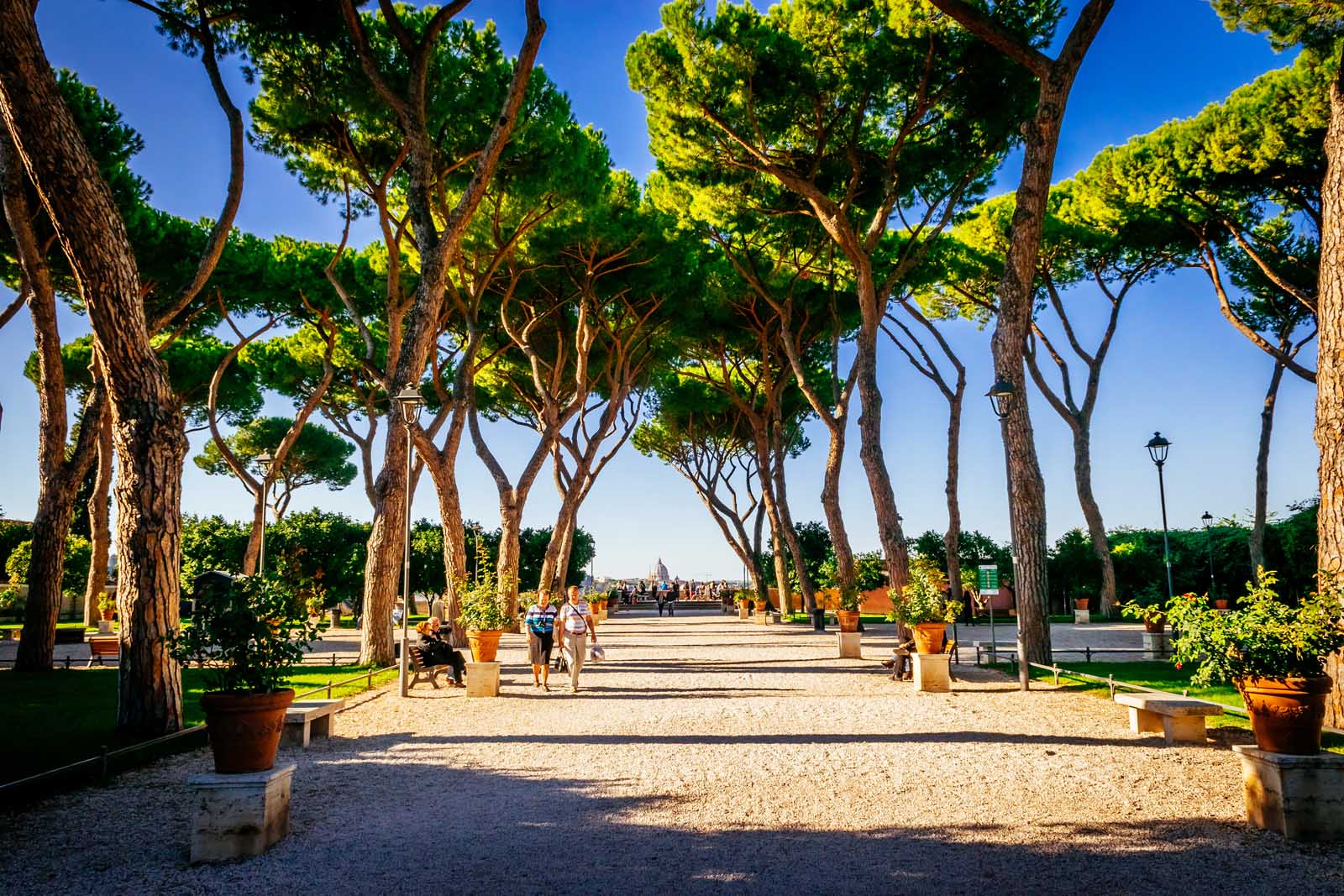
Pros and Cons of Staying in Aventino-Testaccio
- Affordable hotels
- Home to unique landmarks and sights
- Great local restaurants and cafes
- Quite far from Centro Storico
- Not as many luxury hotels
- Fewer locals speak English
Highlights of Staying in Aventino-Testaccio
We’re still in Rome, so expect a bunch of ancient landmarks and historic ruins, even in a suburban area like this one. Some of the best places I visited during my entire stay in the Italian capital were in Aventino-Testaccio, so I don’t doubt you’ll enjoy yourself if you stay here.
- Giardino degli Aranci was one of the best places I visited in Rome. It’s a bit of an uphill walk to this fantastic garden, but it’s all worth it for the fantastic view of the city’s rooftops. There are usually locals playing live music here, and the vibe is very relaxed and fun.
- Testaccio is well known for its food scene, and the Testaccio market embodies this best. Boasting more than a hundred different food stalls, this is the place to come in Rome for cheap snacks on the go. And you’ll get better prices than at Campo de’ Fiori.
- Baths of Caracalla is one of the places I didn’t get to see because I got very sick on my third day in Rome. Prioritize it so you don’t miss out; the archeological site boasts ruins of thermal baths, and it is glorious. The best thing about it, though, is that the crowds are nowhere near as bad as in Centro Storico.
- Circus Maximus is essentially just a vast field. It is a bit of an underwhelming sight, but I still think the history makes it a magical place. Stand there and imagine how, thousands of years ago, chariot races took place at the exact spot where you are!
Best Places To Stay in Aventino-Testaccio
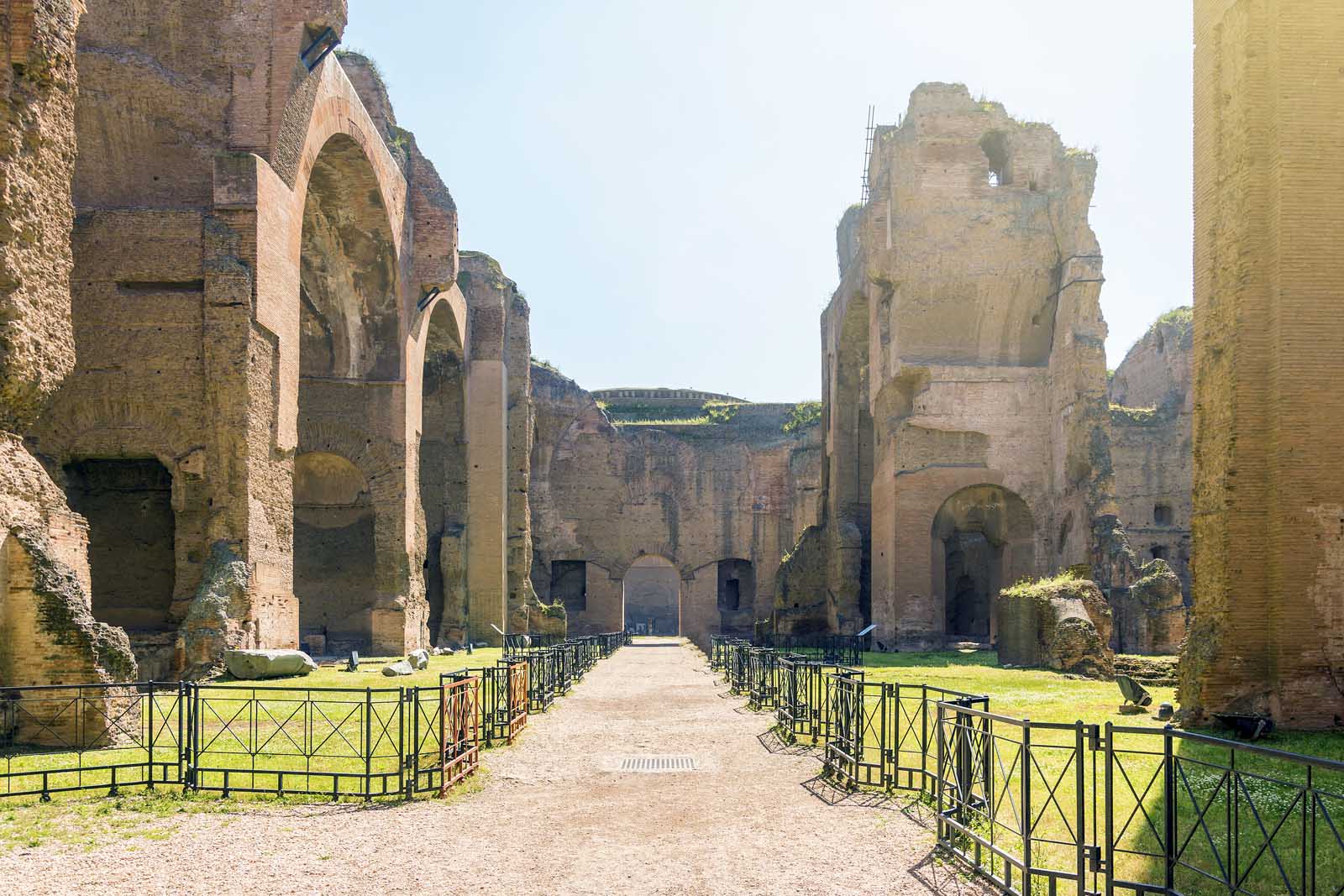
Aventino-Testaccio is a walkable area with lots of interesting sights, but it’s best to base yourself in the eastern part of the neighborhood, close to the metro line. That way, you can still reach all the landmarks here on foot and be a 15-minute metro ride from the heart of Rome.
Hotel The Corner Roma
There are no five-star hotels in Aventino-Testaccio, so a fabulous four-star hotel is the best option for a luxury stay. The spacious guest rooms boast soundproof walls and elegant furniture, while the large and comfy double beds promise a good night’s sleep.
The hotel is just a five-minute walk from the Circo Massimo metro station. And if that’s too far, both the tram and bus stop right in front of the hotel building. The location is excellent for sightseeing in Testaccio, but also for easy access to the more tourist areas of Rome.
All the guest rooms have TVs, desks, and coffee makers. There’s a private bathroom in every room, although I must note that it’s not always separated from the rest of the room with a wall. But there are ways to ensure total privacy in the bathroom, which is what matters.
San Anselmo
The four-star San Anselmo hotel is an excellent option if you’re looking for a unique stay in Rome. It’s in a villa, in a lush and more suburban part of this neighborhood, where you can enjoy the peace and quiet that are almost unimaginable in the historic center.
What’s most interesting about this hotel is that it is set in a 19th-century villa with a private garden. The villa boasts guest rooms with elegant and classic furnishings. A private bathroom is available in every room, as well as a TV and a minibar.
Breakfast is included in the nightly rate, which is around $180 in the off-season. Also, there’s a lovely terrace in the garden where guests can hang out and enjoy breakfast when the weather is nice.
Circus Maximus B&B
Circus Maximus B&B is an affordable bed and breakfast with a fantastic location in Aventino-Testaccio. It’s just a few minutes away from the metro station, and in total a 15-minute walk from the Colosseum, so you can easily explore the best sights in this part of Rome on foot.
The average nightly rate is around $150, which includes breakfast consisting of sweet, pre-packed foods like croissants and spreads. Every guest room has a private bathroom, flat-screen TV, and a desk area. Guests also use the free WiFi, and the B&B even offers luggage storage and daily housekeeping.
The building has a lift, which is convenient if you’re coming to Rome with lots of luggage. At least five different places to eat are located immediately next to the B&B, with dozens of more options if you’re willing to walk just 10 minutes from the building.
Where To Stay In Rome FAQ’s
Which part of rome is best to stay in .
Trastevere is overall the best part of Rome to stay in, offering good value for money and easy access to the city center. Testaccio is also worth considering, especially if you’re returning to Rome.
What is the best area for first-timers in Rome?
Trastevere is our top pick for first-timers in Rome. Centro Storico and Monti are also good if you don’t mind the crowds.
Where to avoid staying in Rome?
Avoid staying in the area surrounding Roma Termini station. It is the seediest part of the city known for criminal activity.
What is the safest district to stay in Rome?
Prati is generally the safest district to stay in Rome. Testaccio is also pretty safe as it is mostly residential and suburban.
Where Not To Stay In Rome
I don’t recommend staying in the area near Rome Termini. It might seem like a good place to stay because it’s got great public transport connections and a plethora of cheap hotels, but it’s the shadiest part of the city. We saw quite a few homeless people sleeping on the street near the station, and people I’d be afraid to encounter if I were walking alone at night.
Am I being judgemental when I say that? Perhaps, but we were two young women in a foreign country and had to take all the necessary precautions to ensure our safety. Not staying near Roma Termini was one of those, and I wouldn’t have it any other way.
Plan Your Trip To Rome With Our Recommendations
- The Ultimate One Day in Rome Itinerary: How To Maximize Your Visit
- 21 Best Monuments in Rome To See In Your Lifetime
- 15 Best Day Trips From Rome
- 3 Days in Rome: Planning the Perfect Rome Itinerary
- 23 of the Best Things to do in Rome, Italy
Travel Planning Resources
Looking to book your next trip? Why not use these resources that are tried and tested by yours truly.
Flights: Start planning your trip by finding the best flight deals on Skyscanner
Book your Hotel: Find the best prices on hotels with these two providers. If you are located in Europe use Booking.com and if you are anywhere else use TripAdvisor
Find Apartment Rentals: You will find the cheapest prices on apartment rentals with VRBO .
Travel Insurance: Don't leave home without it. Here is what we recommend:
- Allianz - Occasional Travelers.
- Medjet - Global air medical transport and travel security.
Need more help planning your trip? Make sure to check out our Resources Page where we highlight all the great companies that we trust when we are traveling.
You May Also Like

Where to Stay in Venice, Italy in 2024: 5 Best Areas for First-Time Visitors
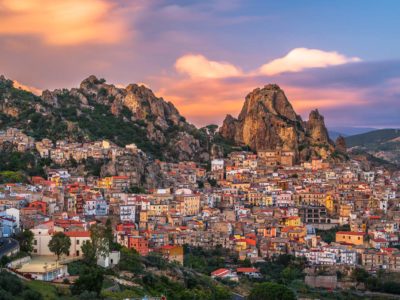
23 Best Things to Do In Sicily, Italy in 2024

Best Florence In One Day Itinerary for 2024: How To See the Most In 24 Hours
About Sara Oprasic
Sara loves writing about travel as much as she loves traveling. In her spare time, she enjoys reading, spending time with her cats, and crossing items off her bucket list. She’s yet to cross off Japan, Tromsø, and Hogsmeade. You can see what she’s up to on her Instagram Page
Join thousands of others who get our monthly updates!
Leave a comment cancel reply.
Save my name, email, and website in this browser for the next time I comment.
16 thoughts on “Where to Stay in Rome: Our Favourite Places And Neighbourhoods (2024)”
Excellent info..Wish I had it before my trip in 2021..but will refer to it for my next visit
Waiting for the allotment of Green Pass so that we can travel again
I am planning to go to Rome, thanks this is a big help for me
I agree with your recommendations about the centro storico and Trastevere – really, anywhere where you can head out the door and be right in the middle of things. We stayed in Monti in May and that was an surprise – it’s become really lively with some great bars and jazz clubs, and it’s just 10 minutes from the centre.
We were in Rome this time last year and stayed in the historic centre between the Pantheon and Trevi Fountain. Great area to stay in and best of all, you only ever have to use Rome’s terrible public transport once – to get to the Vatican and back.
Amazing, interesting & informative post. Looking forward for next one. Cheers!!
Nice hotel recommendation at Rome Italy
Among all of them, the Vatican is the best place to live in Rome
Nice info! Thanks for sharing this informative article. I’m planning to travel to Rome with my family for 3 days I don’t even know where to stay there, but your tips helped me a lot to choose the best place to stay. Once again thanks a lot.
It was my firs traveling, but I was amazed at this place.
Great Blog! The blog you have shared is very informative as I was planning for a family trip and thinking about where to stay in the trip. The tips you’ve mentioned has helped me to choose the best place to stay in my trip time with my family members.
Thank you for your kind comments everyone. I worked hard in writing this piece to give you everything I have on Rome. It is such a wonderful Cory and deserves a lot of time and consideration when planning what to do and see there, as there is so much. Enjoy your trips! Karen Worrall
Beautiful place roam i always wanted to be there for fun i think roam is the best traveling place in world to travel with friends, and the images you shared is amazing the beautiful image u shared of stairs keep sharing your thoughts thanks!
Your pictures are so beautiful! It was a pleasure to watch your journey in Rome <3
You share almost all the information about Rome, I didn’t need to go any other website to plan my trip to Rome, You save my time and money. Thanks for this wonderful information. You
Same here! Between the history, the technology, and the amazing natural beauty, there is always something to make us say Wow!

10 Rome Apps to Download Before You Go to Italy
B ack in the day, tourists had to lug around guidebooks and phrasebooks while looking like idiots gawking at outstretched maps and wandering aimlessly trying to find their way or a decent place to eat. While it still may be easy to pick out the tourists , at least you don’t have to haul all that gear. Now all you need is a smartphone and these Rome apps (and perhaps an extra battery pack.)
Even if you turn off your voice and data roaming while over seas, your smartphone can still be handy for more than just a camera when traveling. I have a number of mobile apps that I recommend when traveling internationally, but here some specific Rome apps to download before you leave on your trip.
Make Sure you Download These Rome Apps
Google maps.
I used to always download the local metro and maps apps when I traveled internationally, but recently I’ve found that Google Maps works just fine. In addition to driving and walking directions, the public transportation options are spot on and can be helpful in letting you know which platform to take, how many stops to go, etc.
There are times when I prefer Apple Maps for walking directions, as they can be a bit more descriptive. The key to either is to download maps to use offline if you plan on leaving your phone in airplane mode or turning off your data roaming.
Google Translate
As prevalent as English is in a modern city like Rome, it is still helpful to have Google Translate in your back pocket. This is helpful in scanning menus and signs using the camera function and overcoming language barriers with locals using the microphone. Just make sure you download the Italian dictionary before you go so that it is available offline and remember that the translation isn’t perfect!
Learn Italian
Learn Italian is an Italian phrases app. There are many on the app store and whichever one you go with, just make sure you pick one that operates offline and you download the content before you go (if needed.) I like to have a phrases app because it makes it easier to quickly look up common words and phrases based on different settings (restaurant, hotel, medical, greetings, etc.) This way the few words you need are easy to review and learn right before you need them.
For language learning before the trip, I use DuoLingo Italian and I’m on a streak of over 2 years!
Rick Steve’s Audio Europe
I’m a big fan of Rick Steve’s podcasts and guidebooks and his Rick Steve’s Audio Europe app offers guided walking tours of popular attractions in Rome like the Colosseum, Forum, Jewish Ghetto, Pantheon, St. Peter’s and the Sistine Chapel, Trastevere, and the Heart of Rome. So if you don’t want to hire a tour guide, this might be the next best thing.
The LivTours app from one of my favorite tour companies offers an overview (with a map) to some of Rome’s popular or more off-the-beaten-path attractions. You can find attractions or shops, filter by points of interest, and learn the history of each attraction.
The real wow factor is with their virtual reality features, which can only be unlocked when you are on one of their tours.
While you can use Uber in Rome, it will cost you more as only Uber Black is available. If you prefer to take a taxi, you usually have to find a local taxi stand or ask the restaurant to call one for you. Now, consumers have a little more control and you can call a taxi using Free Now. You need to download the app and set up an account (so maybe you prefer to pay the Uber premium for simplicity.)
This app can also help you locate and rent e-scooters. Another app that I use to set up airport transfers is Welcome Pickups .
If you use OpenTable in the United States, you can also try that in Rome, but you might find more options on its sister platform, The Fork . You can read reviews, sort by price, type, or neighborhood, and book reservations online.
If you enjoy fine dining, you can also download the MICHELIN Guide app to find and sometimes book Michelin star restaurants.
Italian Menu Decoder
Italy is probably one of the easier countries to travel to because most of us are fairly familiar with the menu. However, sometimes if you want to avoid foods like tripe or just get a better understanding of what something is before you order, download the Italian Menu Decoder . Someday I’ll have to tell you the story of how an app like this would have saved my husband a lot of embarrassment in France! This app provide an alphabetical index of foods and their descriptions so you can decide if that is really what you want to eat or not.
Acea Waidy WOW
Rome has public water fountains throughout the city so instead of buying bottles of water, you can bring along a refillable bottle and this app can help you find where to fill it. The digital map on Acea Waidy WOW includes the location of 3,000 public fountains. Other apps include I Nasoni di Roma and Fountains in Italy.
There may not be a lot of free public restrooms in Rome, but to find them, you can use the WC Rome app. There are also other apps such as Flush Toilet App and Whizzier.
Save this to Pinterest
The post 10 Rome Apps to Download Before You Go to Italy appeared first on We3Travel .


IMAGES
VIDEO
COMMENTS
Learn how to use public transport, walk and avoid driving in Rome, the ancient capital of Italy. Find out about tickets, maps, trams, buses, metro and more.
Airport buses are operated by Cotral, Terravision, Roma Airport Bus, and Sit, with rides costing between €6 and €7. The journey takes about 30-40 minutes, depending on traffic. The flat-rate taxi fare (anywhere within the Aurelian walls) is €30, which doesn't include baggage and extra passenger fees.
Learn about the different means of transportation in Rome, such as metro, bus, tram, urban railway and taxi. Find out how to buy tickets, travel cards and access the main attractions and stations in the city.
Rome's metro is one of the best and fastest ways to get around Rome. Unfortunately, it doesn't cover a very widespread network. There are two lines, A e B, and in the past few years, they have been opening the third line, C, and gradually opening more stations.
Getting around Rome by bike or scooter. Image: Graham Glover (Left), Gabriella Clare Marino (Right) / Unsplash. Best for: Adventurous travelers on a budget. Price: From $17 per day. Cycling in Rome is a great way to get around the city, especially as the Centro Storico is mostly car-free.
The Metro runs every day from 5:30 am to 11:30 pm. The A Line connects the northwest part of Rome with the southeast part of the city and began service in 1980. The A Line currently has 27 stations with terminals at Battistini and Anagnina. The A Line is distinguished by the color orange.
The best way to around Rome: inner city transport guide - Walking around Rome. Exploring Rome by public bus or tram. How to get around Rome by metro. Moving around Rome by hop-on hop-off buses. Exploring Rome by Golf Cart Tour. Exploring Rome by Vespa. Moving around Rome by bike. Getting around Rome by E-bike.
As a means of Rome transportation, you can rent your own Vespa (scooter) or motorcycle if you feel comfortable navigating Rome streets and traffic. You can also take a tour of Rome on a Vespa/scooter. This is one of the most fun ways to tour the city. It's easy, safe and allows you to cover a lot of ground.
Getting Around in Rome. Tweet. Rome Metro - by Phillip Capper (creative commons) Rome is a sprawling beast of a city, and its marquee attractions lie dotted all over the map - so even if you're intent on walking to get to most of the sights, you'd be smart to get acquainted with Rome's public transportation system as well.
There are two bus companies that travel from Fiumicino airport to central Rome. The SIT bus costs €7 and will take you from airport terminal 3 either to Termini Station (Rome's central train station) or near the Vatican. The Terravision bus costs €6 and travels from terminal 3 to Termini in 50 minutes.
Rome's Metro lines only intersect at one point - Termini Station. Each Metro stop is marked by a square, red sign with a white M on it. Single-use Metro tickets cost €1 each, good for 75 minutes from when you validate the ticket, and you can buy them at Metro stops, tobacco shops, and news stands.
The best way to get around Rome is on foot. And because many of the best attractions are clustered together in traffic-free zones, walking makes the most sense. However, some places, like Vatican ...
8. Take your bus ticket straight to the beach. Speaking of public transportation, your €1.50 ticket is also valid on the local commuter trains in Rome, including a line that goes straight to the ...
The Roma Pass allows unlimited travel on Rome's public transportation network and gives you skip-the-line admission and discounted rates to many of the must-see sights in Rome; ... Though it is convenient to get around Rome and the majority of must-see attractions in the city by public transport, you should also consider a few alternative ...
Best Way To Get Around Rome. Getting Around Rome: Walking. Getting Around Rome: Bus. Getting Around Rome: Train. Getting Around Rome: Metro (subway) Getting Around Rome: Tram. Getting Around Rome: Taxi. Getting Around Rome: Car Rental. Getting Around Rome: Private Transfer.
In conclusion, traveling around Rome can be both overwhelming and exciting. But with this guide's help, you're now equipped with the knowledge to navigate the city's transportation system. Follow these guidelines, and you should have a stress-free journey, whether you want to explore Rome on foot, bike, scooter, public transportation, or ...
Also poor value: see 'day ticket' above. 72 hour. Again, a false economy. If you need transport for three days and are sightseeing too then it's probably worth considering a Roma Pass instead. Weekly ticket. Bad value: the price of €24 means you need to make 16 journeys in seven days in order to break even.
Rome's public transportation system consists of buses, trams, metro, and train lines conveniently connecting every corner of Rome. Although Rome is a very walkable city, sometimes you need to rest your feet up or travel a little further afield. Public transport is a great, cost-effective way to get around the Eternal City - here's what ...
Getting around Rome by bus is the best way to travel from A to B while getting your bearings. The city is well-serviced 24/7 with Roma Termini and Piazza Venezia acting as the central hubs. Buses can get pretty packed, especially during rush hour. So if you value personal space at a premium, plan your journey times accordingly.
CIS ticket (7-day use) A 7-day pass costs 24€, and is good for unlimited travel on the buses and metro in Rome from and including the day you validate it, until midnight of the 7th day. Roma Pass ( tourist package ) - You may also consider getting the Roma Pass, which allows for unlimited travel on Rome's bus and metro system for a 2 or 3 day ...
The easiest way to get from point A to point B, Rome's Metro is a great way to travel across the city. Getting Around Rome - Bus. Rome's bus system is wide-reaching, with 338 bus lines serving over 8000 stops throughout the city. However, it can become a bit convoluted, and you'll be at the whim of Rome's famous traffic. ...
Bus. Buses run 24 hours in Rome, so are a handy way to get around. Most of them are small electric or hybrid models which can navigate the narrow streets of the center where everything is too old or delicate to dig up for trains and trams. There are 338 lines to choose from, so use your maps app to make sure you get the right one.
Taxi or UBER. There will be a Taxi stand at the airport and you can easily take a taxi into Rome. There should be a fixed fare of 48 Euros. The fixed fare for an UBER is around 60 Euros. Just for safety, taxis that are licensed by Rome City Council are white and have the size "TAXI" on the roof.
Castel Sant'Angelo is a wonderful historic landmark and probably the least crowded attraction I visited in Rome. We walked around the grounds and enjoyed the view of the circular castle. Go inside the building to see the Renaissance apartments and an amazing collection of statues. ... which allowed us to travel into the heart of Rome in just ...
LivTours. The LivTours app from one of my favorite tour companies offers an overview (with a map) to some of Rome's popular or more off-the-beaten-path attractions. You can find attractions or ...